Water Convention
About
The Water Convention is a platform for gathering professionals and technology providers from around the world to share their knowledge, practical experiences, and novel technologies to address the current and emerging water challenges. Comprising an opening plenary with 4 keynote presentations, a special keynote, 6 hot issues workshops, 44 oral technical sessions and a poster session with 250 posters, the Water Convention will cover these six themes across the urban water cycle:
The Water Convention technical programme focuses on spurring knowledge sharing, fruitful discussions and engaging debates among water leaders and practitioners through high quality presentations on technological innovations, management strategies and best practices.
Final Programme
Opening Plenary (19 June 2024)
19 June 2024
11:30am - 1:00pm
Grand Ballroom, Level 5
Join us at the Water Convention Opening Plenary on 19 June 2024, where global water leaders will gather to discuss urgent issues and challenges facing urban water practitioners, such as ensuring the sustainable production and supply of safe and clean drinking water, the effective and efficient collection and treatment of used water, resiliency and adaptability of urban cities to climate change, floods and sea-level rise, water quality and one health, and resource efficiency and circular economy for the water sector.
Programme
| 11:30am - 11:35am |
Welcome Address by ACE, PUB
Speaker: Bernard Koh, Assistant Chief Executive, PUB and Co-Chair, Water Convention
|
| 11:35am - 11:40am |
Welcome Address by Tom Mollenkopf, President, International Water Association
Speaker: Tom Mollenkopf, President, International Water Association
|
|
Keynote Presentations
Moderator: Darryl Day, Director and Principal Consultant, Wongulla Waters and Co-Chair, Water Convention
|
|
| 11:40am - 12:00pm |
Keynote Presentation #1:Transformative Adaptation in Troubled Times: Securing Planetary, Ecosystem and Human Health
Speaker: Prof. Juliet Willetts, Professor, Institute for Sustainable Futures, University of Technology Sydney
Synopsis: In 2023, it was the warmest year on record since 1880. And climate change isn't the only planetary boundary exceeded. Biodiversity, land-system change, and nitrogen and phosphorus flows are also quantified boundaries already exceeded, with close linkages to the water sector. It is not surprising that as we move from COP28 to COP29, talk has shifted from incremental adaptation to transformative adaptation to climate change. But what does this concept mean in the Asia and Pacific region, where disparities in access to safe water and sanitation services persist, compromising human and environmental health, in a region with the highest rate of water-related disasters and associated impacts on water and wastewater infrastructure and services, and a region also responsible for a large share of greenhouse gas emissions, including contributions from the water and wastewater sector? According to IPCC’s Sixth Assessment Report, transformative adaptation entails deep systemic change and reconfiguration of social and ecological systems. What this looks like in the context of the water sector in Asia and the Pacific is our collective responsibility to shape, rethinking approaches, charting practical steps and strengthening integrated action to secure planetary, ecosystem and human health.
|
| 12:00pm - 12:20pm |
Keynote Presentation #2: Making Connections for a Nature- and People-Positive World
Speaker: Dr. Anusha Shah, President, Institution of Civil Engineers & Arcadis
Synopsis: What kind of legacy will engineers and infrastructure professionals leave for future generations? In 2023, Institution of Civil Engineers (ICE) President Professor Anusha Shah put her lifelong passion for nature, social equity and sustainability at the forefront of her vision for the infrastructure industry. Humanity has taken from nature for many years. But we cannot continue to do so with impunity. Globally, we’re off-track to meet the UN Sustainable Development Goals by 2030. Global warming is likely to surpass 1.5C in the next decade, despite decades of warnings. We are losing biodiversity at an unprecedented rate. The problem is getting worse and we’re running out of time. In her keynote, Professor Shah will highlight the interdependence of climate and nature, of ecosystems and human societies. She will call on the engineers and infrastructure professionals of today and tomorrow to focus not on building assets, but connections: leading a collaborative, transdisciplinary, ethics-based movement towards system wide interventions that provide humanity with multiple benefits on lowering carbon, building climate resilience, improving health and wellbeing, and restoring and rejuvenating nature. She will explore real blockers to tackling climate and nature crisis and provide recommendations on how to break down silos driving conventional and unconventional partnerships across the value chain (including the investor community) in making cities sustainable, resilient, and inclusive. The challenge ahead has never been greater. But neither has the opportunity.
|
| 12:20pm - 12:40pm |
Keynote Presentation #3: Why Equity is Key to Stopping Climate Change
Speaker: Dr. Sunita Narain, Director General, Centre for Science and Environment (CSE)
Synopsis: Climate change is an existential threat that confronts us. It is also clear that climate change is about sharing a common atmospheric space, which requires a cooperative framework. The development rights of countries of the South must be secured, even as they develop differently, so that they do not first pollute and then clean up. It is clear that affordability of growth will be critical for sustainability.Without equity and climate justice, we cannot combat climate change. This is absolutely key. It becomes even more urgent as the world confronts the growing reality of a changing climate. We are seeing extreme weather events in our world. Climate change is resulting in more variable rain events, extreme rain as well as unseasonal rain. This in turn will impact the availability of water and lead to both floods and droughts. It is for this reason that we need to confront both the reality of climate change as one that demands cooperation and equity, but also one that will force us to look for new paradigms of management, including the reworking of our water and sanitation systems for a climate risked world.
|
| 12:40pm - 12:50pm |
Keynote Presentation #4: Youth Action: Claiming Future Water Security Today
Speaker: Yang Villa, Co-Founder, International Water Association YWP Philippines
Synopsis: Youth under 30 represent about half of the world's population. In the water sector, a wave of Young Water Professionals (YWPs) aged 35 and below are starting to occupy positions of leadership and influence. Facing tremendous uncertainty about the future, today's youth are taking advantage of and contributing to an unprecedented wealth of information, technology and networks. In this keynote, I will highlight three areas where youth action is essential to ensure future water security: (1) techno-social innovation, (2) systems transformation, and (3) just transition. I will conclude with a call to action by introducing the Youth Engagement Pyramid as guidance for water sector organizations to become agents of meaningful youth engagement.
|
| 12:50pm - 12:55pm |
Announcement of 10th IWA ASPIRE Conference and Water New Zealand Conference & Exhibition
Speaker: Marion Savill, Executive Director, Affordable Water
|
| 12:55pm - 1:00pm |
Closing Remarks
Speaker: Darryl Day, Director and Principal Consultant, Wongulla Waters and Co-Chair, Water Convention
|
Speakers
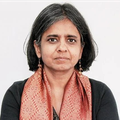 Dr. Sunita Narain
Director General, Centre for Science and Environment (India)
 |
 Prof. (Dr.) Anusha Shah
President, Institution of Civil Engineers (United Kingdom)
 |
 Prof. Juliet Willetts
Professor, Institute for Sustainable Futures, University of Technology Sydney (Australia)
 |
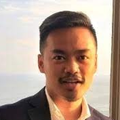 Yang Villa
Co-founder, IWA YWP chapter in the Philippines, International Water Association (Philippines)
 |
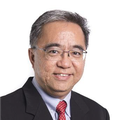 Bernard Koh
Assistant Chief Executive (Future Systems and Technology), PUB, Singapore's National Water Agency
 |
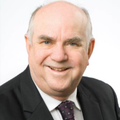 Darryl Day
Co-Chair, SIWW2024 Water Convention Programme, Committee & Director and Principal Consultant, Wongulla Waters
 |
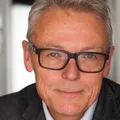 Tom Mollenkopf
President, International Water Association
 |
Poster Session (19 June 2024)
19 June 2024
4:00pm - 6:00pm
Corridor, Level 3
The poster presentation on 19 June 2024, Wednesday will showcase innovative approaches and solutions for water conservation, management, and sustainability. It will feature visually engaging displays of research findings, case studies, and practical applications related to water resource management, climate adaptation, and community engagement, offering insights into the latest trends, technologies, and best practices in the field. Join us at the poster session and vote for your Top 3 posters.
Access the SIWW2024 Water Convention Final Programme to view the list of poster presentations.
Special Keynote (20 June 2024)
20 June 2024
2:00pm - 2:20pm
Room 9B, Level 3
Programme
| 2:00pm – 2:02pm |
Welcome Remarks by Moderator
Moderator: Darryl Day, Director and Principal Consultant, Wongulla Waters
|
| 2:02pm – 2:15pm |
Special Keynote: Urban Drinking Water Safety from Source to Tap in China
Keynote Speaker: Prof. Qu Jiuhui, Research Professor, Center for Eco-environmental Sciences, Chinese Academy of Sciences
|
| 2:15pm – 2:20pm |
Q&A Segment
Speaker: Bernard Koh, Assistant Chief Executive, PUB and Co-Chair, Water Convention
|
Speakers
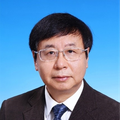 Prof. Qu Jiuhui
Research Professor, Centre for Eco-environmental Scinces and Chinese Academy of Sciences
 |
 Darryl Day
Co-Chair, SIWW2024 Water Convention Programme Committee & Director and Principal Consultant, Wongulla Waters
 |
Closing Plenary (21 June 2024)
21 June 2024
15:30pm - 16:00pm
Room 9B, Level 3
During the closing plenary, the Programme Committee will summarise the outcomes of the Water Convention and present the Best Poster awards to poster authors.
Technical Sessions (20 – 21 June 2024)
Session 1.1 - Planning Your Water Supply Network
20 June 2024
09:00am - 10:30am
Room 1, Level 3
Session Chairs: Hamanth Kasan, IWA (South Africa) and Amir Cahn, SWAN (Israel)
Adaptive Optimized Planning for Water Supply Systems
Tom Woolley, SUEZ (United Kingdom)
Incorporating technology and optimization techniques in the adaptive planning framework for water supply projects brings numerous benefits. These include improved efficiency, enhanced decision-making, and strategic investment. This presentation will discuss the application of cloud processing power with evolutionary algorithms to derive 'no regret' decisions for water supply networks.
Enhancing Water Safety in Porto: Integrating Risk Assessment and Major Strategic Projects
Flávio Oliveira, Aguas e Energia do Porto (Portugal)
Ensuring the safety, reliability and adaptability of Water Supply Systems (WSS) is crucial for sustaining the public health and well-being of the communities. in the Municipality of Porto, the Water Safety Plan (WSP) emerges as an essential catalyst in achieving these objectives, providing a comprehensive framework that harmonizes risk assessment with strategic initiatives. Implemented for the first time in 2014/15 and fully upgraded in 2020/21, the WSP of Porto became one of the most important management tools of the utility for day-to-day operation and strategic assets management. This paper explores the synergistic relationship between the WSP and three strategic ongoing projects, elucidating how this integration fortifies water safety and responsiveness of the WSS.
GeoBIM Surges Decision Making in Infrastructure Projects: A Case Study
Rajesh Kumar V, Larsen and Toubro Construction (India)
This research investigates the integration of Building Information Modeling (BIM) and Geographic Information Systems (GIS) for the purpose of enhanced decision-making and visualization within the context of a mega lift irrigation project. This integration process involves: (1) Revit to GIS Translation: Revit files are converted into ArcGIS 3D multi-patch feature classes, preserving geometries, attributes, and user-defined parameters. (2) LiDAR DEM Creation: LiDAR point clouds generate high-resolution terrain models. (3) 3D Pipeline Design: Pipeline networks and nodes are exported and transformed into 3D models using design parameters and elevation data. (4) Web Application: GIS online capabilities enable web-based visualization and data access. The successful integration of BIM and GIS resulted in a comprehensive 3D visualization model of the irrigation project, incorporating pipelines, structures, terrain, and administrative boundaries. This integrated model provides critical geospatial context to BIM data, facilitating informed decision-making regarding the location and layout of infrastructure components. This system has potential applications such as project management, comprehensive visualization, quantity take off, flood risk assessment and precise project execution, operation, and maintenance with better as build data. The integration of BIM-GIS has wider applicability and has the potential to revolutionize digital construction across the infrastructure sector.
Speakers
 Dr. Amir Cahn
Executive Director, SWAN
 |
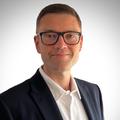 Tom Woolley
Sales Director, SUEZ
 |
 Flávio Oliveira
Civil Engineer, Head of the Water Supply Unit, Aguas e Energia do Porto
 |
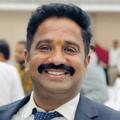 Rajesh Kumar V
Civil Engineer, L&T Construction
 |
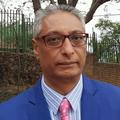 Hamanth Kasan
President Elect & Distinguished Fellow, IWA
 |
Session 1.2 – Asset Management of Water Distribution Systems
20 June 2024
11.00am - 12.30pm
Room 1, Level 3
Session Chairs: Albert Cho, Xylem (United States), Angela Koh, PUB, Singapore's National Water Agency (Singapore)
Embedding Asset Condition Assessment Into Daily Operation
Pak Lum Lee, SMEC (Australia)
Every asset rich utility is responsible for the sustainable management of their assets, to deliver efficient service at an acceptable cost and in accordance with many regulatory requirements. With aging infrastructure assets - condition assessment outcomes will inform utilities of their asset’s health, renewal needs and time to failure. Historical low expenditure on planned asset renewal means more assets are reaching end of life, thus the number of assets to be renewed is significantly higher. In the post-COVID era, the cost of asset renewal has also skyrocketed. Condition assessment strategies enable utilities to better understand the condition and performance of their asset portfolio. SMEC has assisted many water and wastewater utilities with Australia, primarily in Queensland with their multi-year planned prioritized condition assessment programs as well as ad-hoc responsive opportunistic investigation. Case studies presented show the value of condition assessment, and the need to embed them within asset rich utilities.
Using Water Quality Data to Assess Current Pipe Condition
Aoulaya Abdaim, SUEZ (France)
We present a web-based tool exploiting historical water quality data to define critical zones within drinking water networks through spatial-temporal analysis and representation. This innovative tool employs novel indicators based on water-material interactions within networks. By deploying this approach on a local network, we were able to assess the water’s influence on a pipe section. We produced theoretical levels of pipe degradation for every meter of cast iron pipe of the network, relying on water quality data from the past 10 years. To enhance our methodology, physical models were incorporated to assess residual mechanical resistance. This analysis enabled us to determine the residual lifetime of the entire network. In summary, our web-based tool utilizes water quality data and advanced spatial-temporal analysis to define critical areas in drinking water networks. It also provides valuable insights into the impact of water on pipe sections and predicts network longevity through physical models.
Data Analytics in Asset Management – Insights on Data Analysis Review of Useful Life of Assets
M Ramasamy Meiyappan, PUB, Singapore's National Water Agency (Singapore)
Data analytics of Asset Management Data gave insights on Asset ULS. ULS can be increased where supported by data, condition assessment, OEM inputs, etc. Analysis of Data of Assets Beyond UL showed several used for considerable durations after UL. Maintenance cost data analysis showed similar corrective and preventive satisfactory use more than 20 years beyond UL. There were no significant disruptions due to age-related asset failure. for prudence, proposed UL increase for few assets with additional guidelines: more than 90% reached proposed UL and OEM’s verification where possible. Eventually, only UL of PW UF/MF membranes was increased from 5 to 6 years. Data analysis techniques used here are simple over large data sets, validated from independent sources, exploring for exceptions and reasons to reconcile. Going forwards, can hence reviews with longer period data, more data fields, and intricate techniques.
Reliable Restraint Joint for PE Pipes as an Alternative Technology for SUEZ
Aoulaya Abdaim, SUEZ (France)
Pipe installation and renewal are critical for network management and extension both in terms of cost and of logistics for installation. Plastic materials for pipes, as polyethylene, are constantly evolving to offer additional benefits (chemical resistance improvement, mechanical resistance). However, they may bring about drawbacks for operators related to installation requirements such as the use of welding techniques. This work aims to study the benefits of an alternative to traditional pipe technologies by improving drinking water network efficiency through an overall technical, economic, and environmental assessment. This work gathers a field test comparison and results of chemical and mechanical accelerated ageing tests to compare a new polyethylene pipe combining the benefits of a PE resin highly resistant to chemical and physical stresses and the ease of installation with the use of restraint locked joint.
Speakers
 Albert Cho
Senior Vice President and Chief Strategy and External Affairs Officer, Xylem
 |
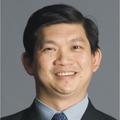 Pak Lum Lee
Technical Principal, SMEC
 |
 Angela Koh
Director, Water Supply (Network), PUB, Singapore's National Water Agency
 |
 Aoulaya Abdaim
Water and Sanitation Engineer, SUEZ
 |
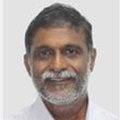 M Ramasamy Meiyappan
Pr Specialist, Meica, PUB, Singapore's National Water Agency
 |
Session 1.3 – Next Generation of Water Network Operations
20 June 2024
2.30pm - 4.00pm
Room 1, Level 3
2.30pm - 4.00pm
Room 1, Level 3
Session Chairs: Zdravka Do Quang, SUEZ (France)
Open Network Applying DMA Strategy on Leakage Control - Taipei Experience
Meng Hsu Yu, Stantec Consulting Services Inc. (Taiwan, China)
Taipei Water Department (TWD) has established 836 DMAs at the end of 2022. to ensure a stable water supply, the boundaries of the DMAs are only closed when metering is required and remain open during regular times. Since each measurement requires labour-intensive work, it is impractical to measure all DMAs at the same time, which poses challenges to active leakage control and long-term management. To this end, TWD adopts a DMA-based approach focusing on pipe network condition improvement, the DMAs rolling health inspections for intelligent management, and expands the application of novel leak detection and monitoring equipment to improve the leakage management results of DMAs in open networks. From 2006 to the end of 2022, it successfully assisted the TWD in reducing the water leakage rate by 15.79%. In the future, TWD will look at more digital tools to continue strengthening the long-term maintenance and management of the open network.
Online Operational Modelling for Leak Detection and Localization in Water Networks
Aurelie Chazerain, SUEZ (France)
To address the pressing need for significant reduction of non-revenue water (NRW), particularly in the context of the current climatic crisis, SUEZ has devised a comprehensive strategy centred around online operational modelling and AI-based predictive risk/anticipation techniques. The core methodology of its operational modelling solution, Twinet, leverages pressure loggers to dynamically reconstruct the hydraulic behaviour of water networks, enabling the creation of a virtual sectorization. By effectively monitoring the network in real-time, this approach is designed to detect hydraulic anomalies, including clogged pipes and closed valves, and it leads to precise localization of suspected leak areas for early intervention and mitigation.
Twinet has undergone testing and real-world deployment in a French metropole, where conventional sectorization is not feasible. The initial outcomes of this implementation have shown promise in reducing NRW (with an objective of less than 10% NRW). Notably, the hydraulic model's performance in detecting closed valves and identifying leak signatures has been encouraging, underscoring its potential as an effective tool for water loss management. However, certain challenges have surfaced, including the need to optimize sensor placement, integrate accurate data, and ensure continuous model updates. These complexities necessitate careful attention to further refine and enhance the approach's capabilities in detecting and localizing leaks, as well as its broader applicability across diverse water distribution systems.
Applying Data-Driven Analysis and Hydraulic Model Calibration for Cost-Effective Leak Localization
Ashley Zhang, Bentley Systems Pte Ltd (Singapore)
Despite the recent academic advancement in numerical methods of leak localization with the ideal assumptions, it remains challenging to localize leaks in a practical context. PUB’s Smart Water Grid (SWG) provides new prospects for leak localization approaches, by taking advantage of SWG’s well-populated sensor grid and centralized SCADA system. This paper introduces a unique way of leak localization by applying both data-driven and hydraulic model calibration methods to facilitate cost-effective operation. Once a leak event is detected by our software Anomaly Leak Finder (ALF) in the near real-time (Wu et al., 2022), the data-driven method will be triggered in the ALF software to find the clustered leakage areas. The hydraulic model calibration using Darwin genetic algorithm optimization (Wu et al., 2002) will then be activated to search for a few leakage hotspots. The methodology can handle multiple leak events in realistic situations, which is showcased in this paper. Most importantly, with a robust algorithm and well-designed user interface, the localization implementation in our ALF software will largely shorten the leak search time and efforts in the daily operation.
Settlement and Seismic Design at Pipeline-Structure Interface
Christian Sundberg and Luke Prinsloo, Victaulic (United States)
This paper addresses the benefits of adding flexible, yet restrained, grooved pipe couplings (subsequently referred to as flexible couplings) to above- and below-ground piping interfaces of hydraulic structures to promote seismic resilience at the area where pipes enter and exit reinforced concrete walls. To assess the efficacy of this approach, a piping stress study was conducted using CAESAR II software’s beam-style FEA analysis. The shear and moment on an assumed fixed end (structure wall) were calculated with and without pairs of flexible couplings to show the benefit and reduction in shear force and bending moment and on the structure wall. The results indicated that adding flexible couplings to piping interfaces of hydraulic structures can reduce shear force and moment on hydraulic structures by approximately 89%. CAESAR II software results corroborated via hand calculations provided additional confidence in results and conclusions.
Speakers
 Zdravka Do Quang
Group Innovation Programs Officer, SUEZ
 |
 Meng Hsu Yu
Stantec Consulting Services Inc.
 |
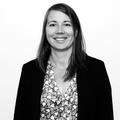 Aurelie Chazerain
Director, Global Expertise Center, SUEZ
 |
 Ashley Zhang
Software Research Engineer II, Bentley Systems Pte Ltd
 |
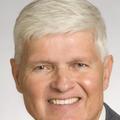 Christian Sundberg
Large Diameter Piping Technologist, Victaulic
 |
 Luke Prinsloo
Piping System Design Engineer, Victaulic
 |
Session 1.4 -Developing a Business Case for Water Loss Reduction
20 June 2024
4.30pm - 6.00pm
Room 1, Level 3
Session Chairs: Ridzuan Ismail, PUB, Singapore's National Water Agency (Singapore), Danqian Shen, PUB, Singapore's National Water Agency (Singapore)
Valuing the Invaluable – A Framework for Valuing the Economic, Social and Environmental Benefits of Water Conservation
Alexus van der Weyden, Frontier Economics (Australia)
Amidst changing global climate, population growth and constraints on new infrastructure, water conservation is critical in securing water security and supply resilience across the world. However, the economic benefits of water conservation have not historically been well established or quantified, and therefore not integrated into decision making. in many regions, focus has been on more traditional ‘supply’ side investments. Frontier Economics developed and applied an economic evaluation framework for the NSW Government to quantify the costs and benefits of water conservation, ensuring the full spectrum of water conservation outcomes are captured in decision making. While this value is highly dynamic and requires a framework and model to vary the value of water in response to changing hydrological and economic factors, it demonstrated that, in certain circumstances (for example, areas with supply shortages, wastewater system constraints and constraints on new infrastructure), water conservation can deliver significant benefits to the community.
From 54% to 13% of NRW – Strategies and Tools of an Excellence Program of Porto to Increase Efficiency and Sustainability
Flávio Oliveira, Aguas e Energia do Porto (Portugal)
Porto is the second largest city in Portugal and has one of the country’s largest and oldest water supply systems. In 2006, the Non-Revenue Water (NRW) level for the system was 54%. Thanks to a number of water loss reduction initiatives and strategies, the NRW stood at 13.4% in 2022. With the overall objective of continuously improving service quality and environmental and financial sustainability, the NRW Reduction Management Program aims to bring this level down to 13% by 2023. The multiple-faceted integrated methodology underpinning the Program focuses on active leakage control, sectorizing the network, reducing pressure levels, planning the renovation of problematic pipelines, replacing water meters, controlling and reducing illegal consumptions and hydraulic modelling of the system. It also relies on specific data integration, artificial intelligence and decision support platforms. The reduction in NRW since 2006 has resulted in total water purchase savings of over 84 million euros.
Collaborative Development of an ‘Economic Level of Losses’ Tool for Optimal Water Loss Reduction in a Large Water Utility
Gregory Koffi Kpegli, International Finance Corporation (United States)
This collaborative project was to assist SABESP, the utility operating in the state of Sao Paulo, one of the largest water utilities in the world with 28.7 million of customers, with the elaboration of a corporate action plan addressing reduction water losses. Our team put together a unique solution including 1) an innovative financing solution, through the U4C platform, 2) a client-oriented holistic approach to NRW management and 3) the development of an Economic Level of Losses calculation model. Thanks to this new fully operational and adaptive ELL model, the utility is now able to better define its water loss reduction objectives, generate arguments to discuss with the regulator, and optimize the CAPEX and OPEX, which ultimately impacts the tariff. The project showed that it is possible to adapt a standard model and tailor it to the reality of the context in which the utility operates. The results can then be used to have meaningful discussions with regulators and drive changes in the company's strategy. The pilot, including the collaborative model development and refinement, is reproductible not only in Latin America but in the entire developing world. This would help utilities better spend their OPEX and CAPEX, save millions of m3 of water and advance in their agenda of reaching water services universalization.
Speakers
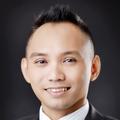 Ridzuan Ismail
Director & Chief Sustainability Officer, Policy & Planning, PUB, Singapore's National Water Agency
 |
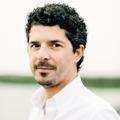 Flávio Oliveira
Civil Engineer, Head of the Water Supply Unit, Aguas e Energia do Porto
 |
 Alexus van der Weyden
Director, Frontier Economics
 |
 Gregory Koffi Kpegli
Water Sector - Industry Specialist, International Finance Corporation
 |
 Danqian Shen
Senior Assistant Director - Water Supply (Network), PUB, Singapore's National Water Agency
 |
Session 1.5 - The Water Utility Smart Metering Journey
21 June 2024
09:00am - 10:30am
Room 1, Level 3
Session Chairs: Dr Amir Cahn, SWAN Forum (UK), Waicheng Wong, PUB, Singapore's National Water Agency (Singapore)
Coliban Water's Smart Metering Journey
Dr Peter Prevos, Coliban Water (Australia)
Presenter is an invited speaker. No executive summary is available.
How Is the Global Water Metering Market Changing? Key Trends and Business Model Shifts to Watch
Christine Ow, Bluefield Research (United States)
Meters are a key component of water network management. They are often the first step in a water utilities’ digitalization journey. The Global Water Metering Market is set to grow at a 7.8% compound annual growth rate (CAGR) in the coming years. Business models are changing -- new incumbents are challenging traditional market leaders such as Honeywell and Kamstrup. At the same time, metering players are expanding their services beyond meters to diversify revenue streams and remain competitive. Priorities differ across regions – for example to meet basic network needs mechanical meters are being rolled out in emerging markets such as Asia and Latin America, whereas more advanced AMI and ultrasonic metering systems are seeing greater traction in mature water markets like North America and Europe. This presentation will provide an overview of the market shifts impacting the global water metering market, including growth projections and key companies to watch.
Leveraging the Value of Smart Metering - the Case of Canal De Isabel II
F. Javier Fernandez, Canal de Isabel II SA MP (Spain)
Canal de Isabel II is the public company that provides services throughout the whole water cycle to some 6.7 million people in the region of Madrid in Spain. Part of the company's values encompasses the provision of excellent service, with special care for the environment. With this in mind, framed within the global digitalisation strategy and leveraging the widespread availability of low-consumption communication systems such as NBIoT, Canal de Isabel II is deploying a network of smart meters that covers all of its customers, nearly 1.6 million, which will culminate in 2026. The immediate purpose of the hourly readings provided by these meters is, first and foremost, to allow customers to understand their consumption profile and how it can help them become more efficient; secondly, the generation of alerts for internal leaks and other related services; and, thirdly, but not least, the ability to conduct hourly flow balances in distribution district metering areas, significantly improving leak detection capabilities.
South East Water Achieved Non-Revenue Water Savings with Vibration Sensors Embedded in Smart Digital Meters
David Lo Jacono, Jacobs (Australia)
South East Water (SEW), developed the Sotto® network leak detection sensor (Sotto), an innovative technology designed to be integrated into static Digital Meters. SEW tested Sotto in a trial deployment and found that the trial successfully showed early detection and reduced water loss. Jacobs was engaged in 2022 to review SEW’s findings and extrapolate the results across the wider network. Jacobs’ analysis determined that installing Sotto sensors will improve the early detection of leaks in either a density of one Sotto per property or one every two properties, with the former providing a better return on SEW’s investment. This paper details how Sotto can be useful in network leak identification and location, potential operational changes and the benefit analysis undertaken by Jacobs presented as a case study. The case study results do not infer or imply that equivalent results may or could be experienced by any other water utility.
Speakers
 Dr. Amir Cahn
Executive Director, SWAN
 |
 Waicheng Wong
Senior Deputy Director & Senior Principal Specialist - Water Supply (Network), PUB, Singapore's National Water Agency
 |
 Dr. Peter Prevos
Manager, Data Science, Coliban Water
 |
 Christine Ow
Digital Water Analyst, Bluefield Research
 |
 F. Javier Fernandez
Deputy Director of Telecontrol, Canal de Isabel II SA MP
 |
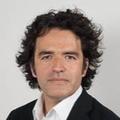 David Lo Jacono
Technical Director Data Science, Senior Principal Consultant, Jacobs
 |
Session 1.6 -The Good, Bad and Ugly of Smart Water
21 June 2024
11:00am - 12:30pm
Room 1, Level 3
Session Chairs: Martine Watson, Urban Utilities (Australia) and Elizabeth Lee, Public Utilities Board (Singapore)
Understanding Data-As-A-Service Adoption Within Water Utilities
Dr Amir Cahn, SWAN Forum (Israel)
The water sector has seen several technological advancements in recent decades, however additional innovation in business models is now needed to support the adoption of these technologies. Today, smart devices such as sensors, meters, and other monitoring equipment can collect and transmit vast amounts of “big data” in real-time. However, water utilities often struggle to manage this magnitude of information due to a lack of skills and resources. One promising solution is “Data-as-a-Service” (DaaS), which involves outsourcing data collection, delivery, and analysis to a third-party technology provider, thus transferring associated risks away from the utility. This study is the first to investigate the drivers, obstacles, and implementation process for water utilities to adopt DaaS. Based on diverse industry feedback, we developed a prototype model to assist water utilities in understanding whether DaaS is the right fit for them or not.
Achieving Success with IoT Deployment at Scale: Insights for Water Utilities and Companies
Gerhard Loots, Kallipr (Australia)
This abstract explores how to manage a successful deployment of IoT solutions at scale in the water sector, offering valuable insights for water utilities and companies from a leading IoT solutions provider in Australia. By embracing IoT technologies, organizations can drive operational excellence, optimize resource management, and foster innovation. Real-world case studies from Kallipr, including the largest IoT deployment in Australia with Sydney Water, highlight the transformative potential of IoT, showcasing improved efficiency, cost reduction, and enhanced customer satisfaction. However key considerations like solution selection, infrastructure scalability, and overcoming deployment challenges need to be carefully considered. By leveraging IoT-generated data, organizations can optimize processes, drive sustainability, and unlock new business opportunities. This presentation encapsulates the significance of IoT deployment in achieving success and growth in the water sector by sharing learnings taken from large-scale IoT projects within the Australian water industry.
Revolutionizing Water Network Asset Management: Total Network Management
Mark Nicol, Nicol Consulting (Singapore)
Total Network Management (TNM) represents a groundbreaking approach in water network management, unifying data-driven insights with cutting-edge technologies to revolutionize the industry. This comprehensive paper explores TNM's concept, its integration of environmental data, and its multifaceted benefits, offering a deep understanding of its transformative potential. Drawing upon the extensive experience of the authors, this paper navigates the challenges of aging infrastructure, resource constraints, and evolving customer expectations. Our findings unveil how TNM empowers utilities to optimize asset management, reduce costs, protect the environment and elevate service reliability to new heights.
Evergreen Digital Twin as Paradigm Shift for Maximizing Smart Water Grid Return on Investment
Zheng Yi Wu, Bentley Systems (USA)
To address the challenges of climate change and ever-greater water stress, water utilities have increasingly adopted Smart Water Grid (SWG) to ensure that water is delivered with good quality and the minimum disruptions. PUB Singapore’s National Water Agency has implemented SWG for many years. However, to fully realize the benefits of SWG, the challenges remain to be addressed along with the innovation solutions. In this paper, Digital Twin (DT) approach is presented for maximizing the SWG return on investment. A generic DT framework is developed to address the challenges of data in silos, model inadequacy, and digital thread weakness. The developed DT approach and solution enable users to achieve adequately accuracy for digital representation of SWG in near real time, namely so-called evergreen DT. The application outcomes have been elaborated and demonstrated that evergreen DT is the paradigm shift for cost-effectively managing SWG and hence maximizing SWG Return on Investment.
Speakers
 Dr. Amir Cahn
Executive Director, SWAN
 |
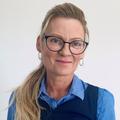 Martine Watson
Chief Digital & Information Officer, Urban Utilities
 |
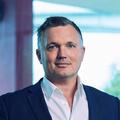 Gerhard Loots
Chief Executive Officer, Kallipr
 |
 Elizabeth Lee
Deputy Director - InfoTech & Digital Transformation & Principal Specialist - Drainage and Flood Management, PUB, Singapore's National Water Agency
 |
 Zheng Yi Wu
Director - Applied Research, Bentley Systems
 |
 Mark Nicol
Managing Director, Nicol Consulting and Sales Lead APAC, Mobilitex
 |
Session 2.1 - Advanced Water Treatment Process
20 June 2024
09:00am - 10:30am
Room 2, Level 3
Session Chair: Holly Shorney-Darby, PWNT (Netherlands) and Robert Chan, AECOM (Hong Kong)
Multicriteria Comparison of Three Technologies for The Treatment of 42 Pfas in Drinking Water Using a Comprehensive Experimental Approach
Raphaelle Du Besset, CIRSEE-SUEZ (France)
Per-fluorinated substances (PFAS) contamination is broad and worldwide: it includes thousands of compounds and is found in all environmental compartments. Regulation is enforced in many countries, with a large variety of compounds and concentrations of targeted PFAS. The aim of this project is to compare different processes for the treatment of drinking water on a multi-criteria basis. The criteria considered cover technical aspects (process performance and ease of implementation), economic aspects (capital and operational costs) and environmental aspects (carbon impact of the process, waste disposal). Laboratory and pilot tests are carried out to consolidate the treatment of a substantial list of 42 PFAS by membrane technologies (low pressure reverse osmosis and nanofiltration) and adsorption processes (activated carbon and resins). The project will enable the selection of the best combination of treatment solutions to implement, depending on the type of water resource, the PFAS contamination and the treatment objectives.
Supercritical Water Oxidation for Complete Mineralization of Environmental Toxins (Pfas, Pesticides, Pharmaceuticals Etc.)
Zhuoyan Cai, Aquarden Technologies (Denmark)
As more technologies enter the market of water and soil remediation -- such as those used to capture PFAS and pesticides-- highly concentrated toxic wastes are generated, and proper destruction methods are required to destroy such wastes. Aquarden’s SuperOx™ technology operates on the Supercritical Water Oxidation (SCWO) process and can ensure complete destruction and full mineralization of PFAS and pesticides without generating toxic by-products. SCWO can be applied to a variety of different waste types, such as particulate slurries (containing adsorbents from water remediation, explosives, etc.), sludges, membrane concentrates, foamate from foam fractionation, firefighting foam, process water, etc. with the result of >99.99% destruction of complex problematic compounds.
DOC Removal from A Turbid and Brackish Water Source with Suspended Ion Exchange (Six®) to Improve the Resilience of Drinking Water Production in a Water Stressed Area
Elisabeth Vaudevire, PWNT (Netherlands)
Due to the poor quality of its influent water, Llobregat drinking water treatment plant (DWTP) requires extensive treatment with no less than oxidation, coagulation, sedimentation, sand filtration, granulated activated carbon (GAC) and electrodialysis reversal (EDR), to achieve sufficient dissolved organic carbon (DOC) removal to meet the European standards on disinfection by products (DBP). In the near future, the plant will be required to increase its water production from 3.2 m3/s to 4 m3/s. As an alternative to expanding the entire plant’s capacity, the implementation of a suspended ion exchange (SIX®) targeting the DOC as a first step treatment was investigated to increase the resilience of the downstream processes. This paper describes one year of operating the SIX® pilot (7m3/h) at Llobregat DWTP which demonstrated stable resin adsorption despite frequent high turbidity events, 40% to 60% DOC removal depending on the influent quality and significant improvement of the DBP formation potential.
Speakers
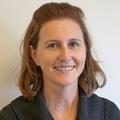 Holly Shorney-Darby
Head, Technology Application and Piloting, PWNT
 |
 Raphaelle Du Besset
Process Engineer, CIRSEE-SUEZ
 |
 Zhuoyan Cai
Founder and Director, Aquarden Technologies
 |
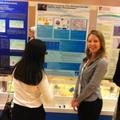 Elisabeth Vaudevire
Technological Researcher, PWNT
 |
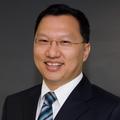 Robert Chan
Vice President, Water, AECOM
 |
Session 2.2 - Advances in Membrane Technology
20 June 2024
11:00am - 12:30pm
Room 2, Level 3
Session Chair: Jonathan Clement, Ramboll (Singapore)
Overview of Flat Sheet Ceramic Membranes
Gilbert Galjaard, Ramboll (Netherlands)
Presenter is an invited speaker. No executive summary is available.
Developing Negatively Charged Nanofiltration Membranes Using Sulfuryl Chloride for Selective Rejection of Organic Micro-Pollutants from Feed Water
Jinsong Zhang, CITIC Envirotech Pte Ltd (Singapore)
Surface modification via secondary interfacial polymerization (SIP) is a promising technology for the enhancement of NF membrane performance such as rejection selectivity. in this study, sulfuryl chloride (SC) was employed to introduce sulfonic groups into the active layer of membranes to improve the membrane performance, also with a purpose of investigating the SIP mechanisms. Results showed that SC in a hexane environment was capable of enhancing membrane surface negative charge density and contracting membrane pores. Membrane surface characterization showed that the sulfur element had a low concentration, indicating that the residual amine groups in the nascent active layer for SIP were quite limited, and the improvement of membrane performance was remarkably affected by the introduced sulfonyl groups. SC in the hexane environment could further enhance the crosslinking degree of the active layer, increase the membrane surface hydrophilicity and narrow the pore size distribution. An optimized membrane with SC modification had a molecular weight cutoff of ∼350 Da and a surface zeta potential of ∼−55.8 mV, and could effectively reject five negatively charged per- and polyfluoroalkyl substances (with molecular weight ranging from 214 to 414 Da) by over 80% while with a low rejection of MgCl2 below 30%.
Innovative Drinking Water Treatment: Unleashing the Potential of Hollow Fiber Nanofiltration with Sand Filtration Pre-Treatment
Jink Gude, NX Filtration (Netherlands)
Unleashing the full potential of Hollow Fiber Nanofiltration (HFNF) coupled with sand filtration pre-treatment for drinking water purification, our study compares two concepts: one incorporating HFNF and granular activated carbon filtration (GAC), and the other integrating sand filtration (without chemical dosing), HFNF, and GAC. Preliminary findings reveal compliance with EU drinking water standards, with low Total Organic Carbon (TOC) and Assimilable Organic Carbon (AOC) levels, and organic removal. Notably, the sand filter enhances HFNF performance, resulting in a 30% permeability increase after just four weeks. This approach, applied to river water, showcases promising results, offering a sustainable solution for improved water quality and environmental challenges. Compared with conventional concepts such as coagulation + UF + RO the energy saving is 70% and the chemical savings >90%, resulting in a lower CO2 footprint and Opex.
Ozone and Ceramic Microfiltration to Treat Ferric Coagulant Clarified Water at Choa Chu Kang Waterworks
Holly Shorney-Darby, PWNT (Netherlands)
PUB, PWNT, and Metawater have embarked on a joint research study to investigate the influence of ferric coagulated and clarified water on the performance of ceramic microfiltration with ozone upstream of the membrane. Early results showed that membrane operation was stable at flux 360 lmh. The preliminary results also suggested DOC removal rather than turbidity control was more important in the clarification process for downstream membrane performance with Metawater’s ceramic membrane.
Speakers
 Jonathan Clement
CTO, Advanced Water Treatment, Ramboll
 |
 Holly Shorney-Darby
Head, Technology Application and Piloting, PWNT
 |
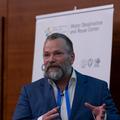 Gilbert Galjaard
Global Practice Leader - Advanced Water Treatment, Ramboll
 |
 Jinsong Zhang
Deputy General Manager, CITIC Envirotech Pte Ltd
 |
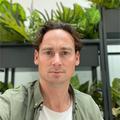 Jink Gude
Manager - Sales & Applications Engineering, NX Filtration
 |
Session 2.3 - Innovations in Low Energy Desalination
20 June 2024
2.30pm - 4.00pm
Room 2, Level 3
Session Chairs: Key Wee Ong, PUB, Singapore's National Water Agency (Singapore) and Adil Minoo Dhalla, Nanyang Technological University (Singapore)
Understanding Key Considerations for Low Energy Desalination
Nikolay Voutchkov, NEOM (Saudi Arabia)
Presenter is an invited speaker. No executive summary is available.
Energy Reducing Technology for SWRO Desalination Systems - Closed Circuit Reverse Osmosis Technology
Mike Ng, DuPont Water Solutions (Singapore)
Operational efficiency of reverse osmosis (RO) systems is restricted in steady-state designs due to strict hydraulic conditions. Closed Circuit Reverse Osmosis (CCRO) technology for the high-pressure seawater reverse osmosis (SWRO) system in desalination plants eliminates the hydraulic restrictions and allows for optimized performance with lower energy consumption. The CCRO process has been proven successful in brackish water applications for its operational efficiency and flexibility. The technology is currently being evaluated and optimized in a pilot scale testbed at PUB’s R&D Facility for the lowest energy consumption in seawater desalination. Simulations show that the CCRO process can reduce energy consumption by 5-18% over conventional RO process using an energy recovery device and identical RO elements. In this paper, we will be discussing the operation of CCRO technology for seawater desalination and demonstrate specific energy consumption <2 kWh/m3. The CCRO pilot is partly funded by PUB under the Competitive Research Programme (Water).
Best Value for SWRO Plants Pretreatment Selection Among Technology Portfolio to Address Client’s Global Needs.
Delia Pastorelli, SUEZ (France)
The design of the pre-treatment of a seawater reverse osmosis plant is driven by many input data: seawater quality, local civil work costs, electrical costs, customs and imports rules, type of contracts, available footprint, construction deration requested. SUEZ is also adding its own criteria to address environmental concern. The most efficient pretreatment for the future of the SWRO desalination plants is thus always challenges by considering 4 criteria: 1. Carbon Footprint, 2. Disposal (brine and sludge), 3. Treated Water Quality, 4. The best TOTEX for the end-user. To ensure a sustainable and cost-effective operation and to determine the best treatment line for a project, SUEZ developed a tool to benchmark its own products as well as external technology to be integrated. This paper underlines the need of carrying out carefully such assessment before submitting proposal, with 2 case studies: one SWRO plant where ultrafiltration was selected as pre-treatment and one with a conventional gravity filtration. The first case highlights the environmental consideration developed all along this project and the second case shows how we can be competitive also with robust media filtration pre-treatment while keeping high environmental standards.
Re-evaluate Practical Performance and Inefficiencies in Close-Circuit Reverse Osmosis (CCRO) Design Using Time-Dependent Ro Modelling
Zijing Mo, Nanyang Technological University (Singapore)
Close-circuit reverse osmosis (CCRO) is an emerging desalination process known for its enhanced energy efficiency compared to conventional single-stage methods. Featuring a semi-closed stream setup, CCRO customizes hydraulic pressure application to save energy and employs standard RO components for cost-effectiveness. However, this semi-closed system requires concentrate purging at lower pressures after achieving recovery. This results in coexisting solutions with significant concentration disparities within the membrane pressure vessel, causing reverse water flux at the rear elements and potentially affecting CCRO's practical performance. To assess the energy loss from reverse flux and other purging inefficiencies, a multi-cycle time-dependent finite differential model was developed in this study. This model quantified CCRO's flux, applied pressure, and energy consumption. Findings reveal that reverse flux contributes to 5% of energy consumption in practical seawater desalination with CCRO at 50% recovery. While increasing flow rates during concentrate purging reduces reverse flux, it escalates pressure loss and mandates larger pump installations, presenting implementation challenges for CCRO.
Speakers
 Nikolay Voutchkov
Executive Director, Water Innovation Center, NEOM
 |
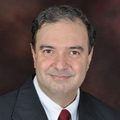 Adil Minoo Dhalla
MD, START Centre, Chair, Steering Committee, SG MEM, and COO, NEWRI, Nanyang Technological University
 |
 Zijing Mo
Process Engineer, Nanyang Technological University
 |
 Delia Pastorelli
Desalination Discipline Manager, SUEZ
 |
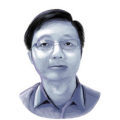 Ong Key Wee
Chief Specialist, Potable Water Treatment, PUB, Singapore's National Water Agency
 |
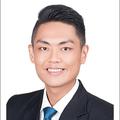 Mike Ng
Project Manager, DuPont Water Solutions
 |
Session 2.4 - Brine Concentration And Mining
20 June 2024
4.30pm - 6.00pm
Room 2, Level 3
Session Chairs: Nikolay Voutchkov, NEOM (Saudi Arabia) and Constanze Simmermacher Schettler, Jacobs (Singapore)
Membrane Based Selective Mineral Harvesting System for Innovative Seawater Desalination and Brine Processing
Noura Chehab, NEOM (Saudi Arabia)
Various minerals in seawater are valuable industrial resources, which are products of seawater desalination and brine processing in addition to portable water. To retrieve target minerals from complex seawater compositions in low concentrations, advancement of separation processes is necessary at the level of individual elements or ions. An innovative system for selective separation of monovalent salts is developed for the beneficial use of seawater and its brine. A novel ion-selective membrane is adopted to a seawater reverse osmosis (SWRO) process, enabling the production of a targeted mineral in high concentration. Different potassium-selective compounds are selected for lab testing, and results are evaluated at the zero liquid discharge (ZLD) pilot facility in NEOM, Saudi Arabia.
Brine Recovery: Achieving High Magnesium Concentration Using Selective Nanofiltration Membranes
Javier Suárez, DuPont (Spain)
Seawater brine recovery is being positioned as a promising technology to recover valuable compounds out of seawater reverse osmosis brine, as well as producing drinking water from seawater. Brine recovery enables the recuperation of natural resources from seawater, through a sustainable process which is aligned with United Nations sustainability development goals as well as with the transition into a circular economy. In order to get these compounds, different steps need to be performed. The first one involves separating divalent compounds from monovalent ones. This is achieved using selective nanofiltration membranes. The subsequent phase of the process requires the production of potable water, followed by the concentration and dewatering of the residual monovalent brine. FilmTec™ SWBR-100 and FilmTec™ SWBR-150 are two types of nanofiltration selective membranes designed specifically to segregate divalent and monovalent compounds. This allows the isolated divalent compounds to be recovered as valuable magnesium salts, following further concentration. At a later stage in the process, the monovalent permeate stream produced by FilmTec™ SWBR-100 or FilmTec™ SWBR-150 undergoes additional concentration enhancement with the aid of FilmTec™ SWBR-200. This membrane enables the recovery of Na and Cl monovalents, even when dealing with high Total Dissolved Solids. This research study aims to evaluate the functionality of these three membranes and highlights the benefits that nanofiltration and seawater reverse osmosis elements bring to the separation process. The membranes were tested under typical operating conditions of a brine recovery process. The experimentation was conducted at the Global Water Technology Center in Tarragona. The trials conducted showed that FilmTec™ SWBR-
Innovative OARO Process for Low-Carbon Brine Mining and Advanced Hollow Fiber Membrane
Takahito Nakao, Toyobo MC Corp (Japan)
In this study, innovative brine concentration process called osmotically assisted reverse osmosis (OARO) and advanced hollow fiber membrane have been developed. Also, our newly developed membrane for OARO process has been evaluated at a pilot scale and then will be supplied to commercial salt production plant in Indonesia as a key process for high salinity brine concentration with far less energy consumption than the other existing brine concentration technologies. The overall carbon dioxide emissions of our Indonesian plant have been calculated and comparison study with the traditional salt production process consisted of electrodialysis (ED) and thermal evaporation. As a result, 50% reduction of carbon dioxide emissions is achievable when introducing our OARO process to the salt production process. Therefore, OARO process and newly developed membrane will help reduce the energy consumption and also will help achieve the net zero salt production process in the future.
Low Pressure RO Permeate Remineralization Through Minerals Recovery from Brines: From Bench-to Pilot-Scale Study
Raphaelle Du Busset, SUEZ (France)
Low-pressure reverse osmosis membranes (LPRO) are gaining interest to treat ground or surface water thanks to the combined effect of softening and micropollutant removal. However, the production of low mineral content permeate requires a post-remineralization with chemicals (lime or limestone), which is expensive and impacts the environment. The alternative proposed in this project is the application of Assisted-Reverse Electrodialysis (A-RED) technology following reverse osmosis (RO) for recovering natural minerals from its brine to directly remineralize the unit’s permeate. This approach was tested at both bench- and pilot-scales (patented solution - WO 2021/110865 A1). The process was proven to present viable results: permeate mineral content after A-RED process being increased in terms of both conductivity and hardness. Specific microcontaminant breakthrough tests using spiked micropollutants and natural organic matter (NOM) monitoring were carried out to ensure that these organics did not leach contaminants to the drinking water, causing potential health effects or regulatory problems. Results of this study highlighted the significant barrier provided by the ionic membranes with respect to the issue of organics passage, while allowing for proper remineralization of the permeate water to target potable levels. Process performance stability tests, run over the course of 2000 hours, also showed that the process’ performance was maintained stable despite changes in influent water quality and temperature.
Speakers
 Nikolay Voutchkov
Executive Director, Water Innovation Center, NEOM
 |
 Raphaelle Du Besset
Process Engineer, CIRSEE-SUEZ
 |
 Constanze Simmermacher Schettler
Portfolio Manager Treatment Plant Projects / Process Engineering Lead, Jacobs
 |
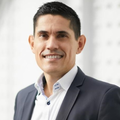 Javier Suárez
Technical Service & Development Leader for South Asia, Japan & Korea, DuPont
 |
 Takahito Nakao
Team Leader at Water Treatment Membrane Sales Unit, Toyobo MC Corp
 |
 Noura Chehab
Water Research and Innovation Manager, NEOM
 |
Session 2.5 - Innovation in Water Reuse
21 June 2024
09:00am - 10:30am
Room 2, Level 3
Session Chairs: Aik Num Puah, Independent Consultant (Singapore)
Pure Water Southern California: Developing A New Sustainable Regional Water Supply
Adel Hagekhalil, Metropolitan Water District of Southern California (United States)
The Metropolitan Water District of Southern California is collaborating with the Los Angeles County Sanitation Districts to develop the Pure Water Southern California program. Once fully implemented, PWSC will become one of the world’s largest potable reuse programs, providing a new sustainable water supply for Southern California. Various studies have been conducted to date to establish the advanced water treatment plant location, system capacity, process train, phasing strategy,direct potable reuse implementation, conveyance systems, and end user requirements to assess the environmental impacts and advance the program. Alternative delivery method may be considered to expedite program implementation.
Quantification of Carbon Emissions in Potable Reuse Treatment Configurations
Vijay Sundaram, AECOM (United States)
Potable reuse requires significant infrastructure and power which may result in significant carbon emissions. This study quantified carbon emissions over 50 years for three configurations: reverse osmosis (RO) with brine discharge, RO with zero-liquid discharge (ZLD), and carbon-based advanced treatment (CBAT). Results showed that RO with brine discharge had 5x larger Scope 2 emissions than CBAT. Furthermore, adding ZLD to RO increased emissions by 60% compared to RO with brine discharge. When Scope 3 emissions were included, RO had the highest combined emissions, and CBAT had 19% lower emissions than RO. However, CBAT Scope 3 emissions varied significantly depending on the type and replacement frequency of the granular activated carbon, and RO Scope 2 emissions varied significantly depending on the electricity generation method. By quantifying carbon emissions, we can make informed choices regarding water reuse treatment that balances the requirements of potable reuse while minimizing carbon emissions.
Optimization of an Advanced Industrial Wastewater Treatment Facility for Water Reuse Using Flow Reversal Reverse Osmosis (Fr-Ro) Technology
Dor Tal, ROTEC by WFI Group (Israel)
Flow Reversal – Reverse Osmosis (FR-RO) was piloted to treat wastewater from semiconductor industry for water reuse, to increase reverse osmosis recovery beyond 75%. The study determined the ability to stabilize operation in recovery rate ranges of 88% to 90% with low maintenance, and scaling cleaning in place (CIP) events. Performance was evaluated in terms of detectable factors which predicts mineral scaling over such membranal systems such as ΔP, feed pressure and system permeate flux during step-up changes in recovery rate. Set points for recovery rate was adjusted in steps from 70% to 90%. After each step, while system stability was evaluated before moving to next set point. The system showed the possibility of working in high recovery rates in stable operation as flow reversal technology applied. As pilot goes on, recovery rate will hopefully reach as high as 93-96% with same water profile.
Real-Time Detection of Volatile Organic Compounds in Potable Reuse
Eric Dickenson, Southern Nevada (United States)
Potable water reuse requires effective treatment technologies and stringent real-time monitoring for chemical and biological constituents of concern. Conventional total organic carbon (TOC) analyzers are not effective at measuring purgeable compounds, such as volatile organic compounds (VOCs), some which are of toxicological concern and can permeate reverse osmosis (RO) and advanced oxidation processes (AOP). We developed a real-time VOC analysis method using a commercially available, thermal desorption cavity ring-down spectroscopy analyzer to detect and speciate VOCs with regulatory limits and health advisories guidance thresholds set at low concentrations (i.e., ug/L - ng/L) prior to and after treatment for RO-based potable reuse applications. This approach uses an online, reagent-less headspace technique providing measurements of 19 VOCs every 50 minutes with replicate analyses showing relative standard deviation of 2 -12%. This method can confidently distinguish between isomeric compounds and was used to measure VOCs in samples provided by U.S. water utilities.
Speakers
 Aik Num Puah
Independent Consultant
 |
 Adel Hagekhalil
General Manager, Metropolitan Water District of Southern California
 |
 Dor Tal
Chief Scientist, ROTEC by WFI Group
 |
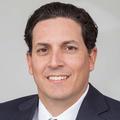 Eric Dickenson
Water Quality R&D Project Manager, Southern Nevada Water Authority
 |
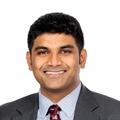 Vijay Sundaram
VP, Global One Water Director, AECOM
 |
Session 2.6 - AI for Water Treatment
21 June 2024
11:00am - 12:30pm
Room 2, Level 3
Session Chairs: Min Yang, Chinese Academy of Science (China) and Mike Karl, AECOM (United States)
Machine Learning for Optimizing RO Cleaning Schedules at a PUB NEWater Factory in Singapore
Hiep Le, Gradiant (Australia)
Artificial Intelligence (AI) is becoming a necessity at desalination and water reuse plants in order to optimize and improve operations. Over the last several years, pressure to bid lower and lower values on large reverse osmosis (RO) plants has increased, with some large RO systems at less than USD$0.30/m3. This pressure has increased the need for new optimization methods, primarily the application of Machine Learning (ML), a subset of AI. While energy optimization in seawater RO can reduce costs by up to $2M annually in some large plants, energy optimization yields lower dollar figures in water reuse plants. Focusing optimization efforts on the optimal time to clean-in-place can be far more beneficial to water reuse plant OPEX costs.
Realization of a Digital Twin of An Operating 2.200 M³/H O3/H2O2 and UV/ H2O2 Advanced Surface Water Treatment Plant
Steffen Rüting, Xylem (Germany)
A digital twin of a 2.200 m³/h advanced surface water treatment installation including O3/H2O2 and UV/ H2O2 AOP has been developed. This mechanistic virtual model mirrors the actual plant and allows running scenarios for the most economical way of micro pollutant reduction while minimizing bromate formation. The model was set up based on years of on-site research and piloting from the water supplier Dunea and water treatment solution provider Xylem for that specific water source. The advanced modelling company AM-Team then created and calibrated a Sumo-based mechanistic model on the pilot results with further validation based on the installed 2.200 m³/h full-scale plant. The digital twin allows Dunea to quickly and safely simulate the operation of the physical plant with changes in water quality and plant control.
Seamless Coagulation Control – Using Machine Learning to Optimise Water Treatment Plant Operations
Yvain Chong, Jacobs (Singapore)
This paper focuses on the application of machine learning to optimise water treatment operations, including minimizing chemical use, and maximizing organics removal. It outlines the development and applications of a machine learning model to predict post-coagulation water quality at a 190 MLD Waterworks (WW). The initial lab-scale model targets the prediction of jar testing outcomes, incorporating raw water quality, bench scale analysis, and full-scale treatment conditions. This proof-of-concept approach can be used for multi-objective optimization to identify the optimal dose of aluminium sulphate to maximize turbidity removal and reduce treatment cost. The process of data collection, cleaning, and screening will be discussed, along with trade-offs to prioritising data continuity and data quality vs. quantity. By reducing the effort of manual dosing studies (i.e., jar tests), the prototype coagulation model can support water treatment operators in reducing coagulation chemical costs while maintaining treated water quality under fluctuating raw water conditions.
Real-Time Remote RO Membrane Fouling and Performance Monitoring for Operational Decision Support
Yoram Cohen, Noria Water Technologies Inc. (United States)
Membrane fouling is a major operational hindrance in RO desalination plants. Decisive, unambiguous and direct detection of the onset and monitoring of the progression of membrane fouling, which is lacking in the industry, is much needed to establish informed fouling mitigation strategies. To meet the above challenge a novel direct fouling monitoring technology with remote monitoring capability was evaluated in a yearlong study in a brackish water desalination plant located in Singapore. The fouling monitor utilized a membrane cartridge providing an extension to the spiral-wound RO element channel in the monitored plant zone. Direct surface imaging and image analysis via machine learning analytics, along with various process sensors are used to track membrane performance. The study demonstrated early detection of the onset of fouling significantly in advance of conventional performance fouling metrics. The study shows that direct membrane fouling monitoring, along with automated decision support, can be deployed for membrane performance monitoring, and guide the development of optimal fouling mitigation strategies.
Speakers
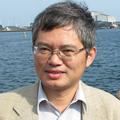 Min Yang
Deputy Director, Research Center for Eco-Environmental Sciences, Chinese Academy of Science
 |
 Steffen Rüting
Senior Sales & Process Engineer - Water Reuse & AOP, Xylem
 |
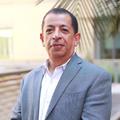 Yoram Cohen
Distinguished Research Professor, UCLA & President and Founder, Noria Water Technologies Inc.
 |
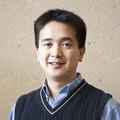 Hiep Le
Chief Technology Officer - Eastern Region, Gradiant
 |
 Yvain Chong Hon
Project Manager - Water Sector (Treatment Plants), Jacobs
 |
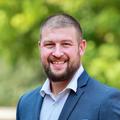 Michael Karl
VP Global Digital Lead Water, AECOM
 |
Session 2.7 - Emerging Water Technologies
21 June 2024
14:00pm - 15:30pm
Room 2, Level 3
Session Chairs: Rong Wang, Nanyang Technological University (Singapore) and Echo Leong, AECOM (Hong Kong)
Overview of Emerging Water Technologies
Shane Snyder, Georgia Institute of Technology (United States)
Presenter is an invited speaker. No executive summary is available.
Nanofiltration Innovation: Performance of New Filmtec™ NF270-440 Element in Municipal Wastewater Operation
Santhosh Ramalingam, DuPont (Spain)
With more stringent water quality standards, advanced treatment solutions to ensure delivery of reliable, safe water at premium quality are essential. The FilmTec™ NF270-440 nanofiltration element presents an ideal solution for utility managers and operators seeking a technology that removes a high percentage of dissolved organic pollutants from source water while maintaining a suitable level of minerals. Energy efficiency is also of utmost importance for any water treatment facility. Our latest NF innovation enables end-users to reduce CAPEX of nanofiltration systems and simplify the overall systems design by offering a 10% more active membrane area, thus reducing their energy consumption. FilmTec™ NF270-440 is also able to deal with challenging feed water. These benefits were highlighted while in operation in a pilot plant installed in the Vilaseca municipal wastewater treatment plant (Tarragona, Spain). Significant reductions in feed-side pressure drop, fouling resistant properties and reduced energy consumption were observed throughout the trial.
Effect of Micro-Milling and Coagulation on Soluble Mn Removal by Powdered Activated Carbon and Free Chlorine
Shun Saito, Metawater Co. Ltd. (Japan)
We evaluated the feasibility of Mn removal from water by activated carbon (AC) and free chlorine. In natural water, Mn that passes through a microfilter is present as colloidal Mn and soluble Mn. AC had a catalytic effect on oxidation of soluble Mn but no effect on oxidation of colloidal Mn. The effect on soluble Mn varied with respect to the external surface area of AC and was minimal for conventionally powdered AC. Satisfactory removal of Mn was achieved by reducing the AC size to several micrometers by micro-milling. Further size reduction was ineffective because submicron-size ACs aggregated into larger conglomerates. Colloidal Mn remained in the microfiltrate, but it could be removed by coagulation-microfiltration. However, coagulation reduced the effect of soluble Mn removal. Use of micro-milled AC with diameters of 1–2 μm to satisfactorily remove soluble Mn followed by coagulant addition was the optimal mode of treatment.
Speakers
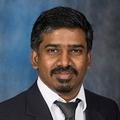 Santhosh Ramalingam
Singapore Innovation Leader & Technical Services Manager, DuPont Water Solutions
 |
 Rong Wang
President's Chair Professor & Executive Director - Nanyang Environment & Water Research Institute (NEWRI), Nanyang Technological University
 |
 Prof. Shane Snyder
Executive Director, Nanyang Environment and Water Research Institute (NEWRI)
 |
 Shun Saito
Metawater Co. Ltd.
 |
 Echo Leong
Executive Director, AECOM
 |
Session 3.1 - Advanced Nitrogen Removal
20 June 2024
09:00am - 10:30am
Room 3, Level 3
Session Chair: Prof Mark van Loosdrecht, Delft University of Technology (Netherlands) and Echo Leong, AECOM (Hong Kong)
PDN/A - Different Nitrogen Removal Pathways
Dr Stephanie Klaus, Hampton Roads Sanitation District (United States)
Presenter is an invited speaker, no abstract summary available.
A New Strategy to Control Nitrite Oxidizing Bacteria (NOB) in the Mainstream Anammox Process Using Supernatant from Anaerobic Digester
Victory Fiifi Dsane, BKT Co. Ltd., (South Korea)
Practical application of partial nitritation (PN) in the mainstream process faces several challenges, leading to a quest for innovative, economical and environmentally friendly techniques to curb these challenges. In this study, the feasibility of achieving stable PN in the mainstream process with anaerobic digester supernatant was investigated. The research started from a lab-scale sequencing biofilm batch reactor (SBBR) to a pilot scale at the Hyperion plant in Los Angeles, CA. Results showed a new reliable and repeatable strategy to control nitrite-oxidizing bacteria (NOB) in the mainstream process. The adopted strategy offers the advantages of, warm temperature, instant NOB inhibiting environment, as well as alkalinity to buffer pH changes for effective control of the target organisms. In order to maximise residual ammonia concentration and maintain a DO/NH4 ratio below 0.2, the SBBR reactors were operated with 100% fill and decant cycles, and the DO kept below 4.0 mg/L. This unique operational strategy favoured ammonia-oxidizing bacteria (AOB) and hindered NOB. A record high stable nitrogen loading rate of 2.2 kgN/m3/d was achieved when the media with the right surface area was employed, thereby indicating a possibility of migrating to a full-scale test in the next phase of this research.
Low DO for Low Energy and Carbon Efficient Nitrogen Removal – A New Benchmark
Aprilia Vellacott, Jacobs (Australia)
A new 140ML/d advanced step-feed treatment plant has been constructed to augment Melbourne Water’s WTP to meet nutrient load and capacity requirements. The plant includes innovative design concepts to reduce CAPEX and construction GHG emissions, and advanced controls to optimise carbon and energy utilisation efficiency. The plant operation over four years has met stringent requirements including effluent quality and energy usage and has set a new benchmark in energy efficiency utilizing an average of 3.6 kWhr/kgN removed (240 kWhr/ML). A key feature of the facility is low DO operation using advanced controls providing stable, energy efficient operation.
Algae-Based Treatment of Anaerobic Digestor Effluent for Nutrient Recovery and Reduction of Carbon Emissions
Rongmo Luo, Xylem (Singapore)
To mitigate carbon emissions from wastewater treatment plants, XYLEM and GWT conducted a study to test and evaluate the efficacy of the Revolving Algal Biofilm (RAB) system in treating anaerobic digester effluent from one of PUB facilities, with a focus on reducing GHG emissions. In the study, two bench-scale RAB systems, one operated as a control/baseline system and another operated as a modified/optimized system, were installed to treat anaerobic digester effluent sourced from PUB Changi Water Reclamation Plant (CWRP). There are performances under Singapore’s climate were determined by comparing the water quality between influent and effluent, as well as evaluating the productivity of harvested algae biomass. It was found that the baseline system while operating in the tropical climate performed more effectively than the anticipated rates for nitrogen removal in a temperate climate. The results showed that baseline RAB performed approximately 90 % more effectively in nitrogen removal while operating under tropical climate conditions with more suitable temperatures and greater sunlight availability, compared to a temperate region. Furthermore, an additional 20% improvement in removal efficiency was achieved under optimized conditions, which involved the addition of supplemental lighting and adjustments to the flow rate. These results indicate that the RAB performance exceeded expectations under Singaporean climate through condition optimization. The test study validated the RAB system's efficacy in effectively removing nitrogen from anaerobic digester centrate, while simultaneously reducing greenhouse gas emissions at wastewater treatment plants.
Speakers
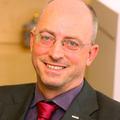 Prof. Mark van Loosdrecht
Chair Professor, Environmental Biotechnology, Delft University of Technology
 |
 Dr. Stephanie Klaus
Treatment Process Engineer, Hampton Roads Sanitation District
 |
 Victory Fiifi Dsane
Process Engineer (Water AI), BKT Co. Ltd., South Korea
 |
 Aprilia Vellacott
Principal Process Engineer, Jacobs
 |
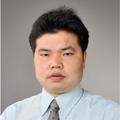 Luo Rongmo
R&D Manager, Xylem Water Solutions Singapore
 |
 Echo Leong
Executive Director, AECOM
 |
Session 3.2 - Membrane Aerated Biofilm Reactor (MABR)
20 June 2024
11:00am - 12:30pm
Room 3, Level 3
Session Chairs: Andrew Shaw, Black & Veatch (United States) and Tim Constantine, Jacobs (Canada)
MABR Fundamentals
Andrew Shaw, Black & Veatch (United States)
Presenter is an invited speaker, no abstract summary available.
Membrane Aerated Biofilm Reactor (MABR) for Process Intensification at Water Reclamation Plants
Han Zhuang, Veolia Water Technologies and Solutions (Singapore)
Increasing the biological and hydraulic capacity of existing treatment plants (WWTPs) is a function of available SRTs, solids loading capacity of the clarifiers and available footprint. Zeelung MABR and continuous flow densification (CFD) have demonstrated advantages of process intensification and hydraulic intensification individually, but the synergies of the two (called zeeDENSE) to maximise existing wastewater secondary processes will be studied throughout the demo at Integrated Validation and Demonstration Plant (IVP) located at Ulu Pandan Water Reclamation Plant (UPWRP) in Singapore. This study will include, but not be limited to, achieving increased biological treatment capacity, increased overall energy efficiency, and decreased GHG emissions. The existing train of the plant consisting of 5-step feed reactors will be converted to MABR process with installation of 10 Zeelung cassettes distributed in anoxic zones 1-4 (3-3-2-2 configuration). Process intensification will be evaluated at varying bulk SRTs simulating different loading conditions. The results will be used to extrapolate intensification in existing WRPs & set guidelines for future.
Where and How to Apply Membrane Aeration Biofilm Reactors (MABR) - Lessons From 4 Full-Scale Systems
Barry Heffernan, DuPont (Ireland)
The performance of four OxyMem™ membrane-aerated biofilm reactors (MABR) located in different geographies and configurations (pure biofilm and IFAS) were evaluated. Oxygen transfer rates between 12 to 19 gO2/m2d and nitrification rates between 1.0 and 2.9 gN/m2.d were achieved. On all sites there was competition for oxygen between autotrophic nitrifiers and heterotrophic bacteria. It is possible to achieve complete COD and ammonia removal in a pure biofilm MABR – when the DOD loading rate is maintained below 15 gCOD/m2.d. High nitrification rates can be achieved when the MABR modules are operated in IFAS mode and installed in anoxic tanks 1.7 and 2.0 gN/m2.d on average and up to 3.0 gN/m2.d when the bulk ammonia concentration is high. The average nitrification rate achieved when the MABR module was installed in an anaerobic zone was just 1 gN/m2.d. The anaerobic tank was deeply anaerobic, and it is like sulfur and iron compounds were reduced. Hydrogen sulfide will inhibit nitrification and the reduced iron and sulfur compounds will be re-oxidised preferentially over ammonia oxidations. It is not advisable to install the MABR modules in a CSTR type aerobic tank or at the end of a plug flow reactor, there will be insufficient substrate to support biofilm formation.
Predicting Benefits of Sludge Densification in a Wastewater Treatment Plant with Membrane Aerated Biofilm Reactor and Biomass Densification
Gabriel Kicsi, Veolia Water Technologies and Solutions (Singapore)
Densification of biomass is an efficient technology to improve sludge settleability which benefits wastewater treatment plants (WWTPs) by increasing the capacity of the secondary clarifiers. In this study, a densification model was developed and validated to predict the level of densification performance to help capture expected benefits and new capacity limits for operations. The first version of the VWTS (Veolia Water Technologies & Solutions)-SUMO model was developed based on the growth kinetic for various microorganisms (e.g., nitrifiers and polyphosphate-accumulating organisms). Then the model was calibrated with the filed data collected from a full-scale zeeDENSE (MABR membrane aerated biofilm reactors + selection for biomass densification) WWTP. Although more filed data under steady-state operating conditions need to be collected to validate the model, the current simulation results demonstrated the settleability in the full-scale WWTP can be improved significantly by the densification processes. In addition, the proposed model can predict the settleability reliably.
Speakers
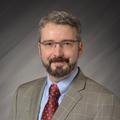 Andrew Shaw
Associate Vice President and Global Practice and Technology Leader in Sustainability & Wastewater, Black & Veatch
 |
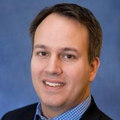 Tim Constantine
Global Director - Water Resource Recovery Solutions, Jacobs
 |
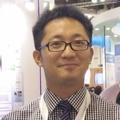 Han Zhuang
Advanced Lead Researcher, Veolia Water Technologies and Solutions
 |
 Barry Heffernan
Chief Operations Officer, OxyMem, DuPont
 |
 Gabriel Kicsi
Singapore Water Technology Center Director, Veolia Water Technologies and Solutions
 |
Session 3.3 – Tertiary Treatment For Reuse
20 June 2024
14:30 - 16:00
Room 3, Level 3
Session Chair: Norhayati Abdullah, University Technology Malaysia (Malaysia)
Barriers to Potable Water Reuse Partnerships
Robert Thompson, Orange County Sanitation District (United States)
The partnership between two public agencies, the Orange County Sanitation District (OC San) and the Orange County Water District (OCWD) led to the creation of the Groundwater Replenishment System (GWRS), the world’s largest indirect potable reuse facility. Both sought solutions to issues they faced. OCWD needed to expand their recycling efforts, and address continued challenges with seawater intrusion, and OC San faced the challenge of having to build a second ocean outfall. Through collaboration, problem solving ideology, policy changes, and operations modification the GWRS emerged as one of the most celebrated civil engineering and water reuse projects in the world for its innovative approach and use of technology to reuse a once wasted resource. Our agencies continue to be at the forefront of innovation, and we remain committed to sharing our expertise, lessons learned and best practices with others.
Tertiary MBR: Concept Development and Pilot-Scale Validation of Novel Process for Potable Reuse in Southern California
Tim Constantine, Jacobs (Canada)
The Metropolitan Water District of Southern California (Metropolitan) and Los Angeles County Sanitation Districts (Sanitation Districts) are jointly exploring the potential of implementing the Pure Water Southern California (PWSC) program, which would include building an Advanced Water Treatment Facility (AWTF) capable of producing 568 ML/d (150 mgd) of purified water at the Sanitation Districts’ Joint Water Pollution Control Plant (JWPCP). A series of studies conducted by both agencies identified the application of a tertiary membrane bioreactor (tMBR) as a promising approach to provide nitrogen removal at the AWTF, which would receive effluent from the JWPCP as the source water. This pilot study focused on evaluating tMBR design concepts with an emphasis on demonstrating successful operation of nitrification-denitrification (NdN) tMBR concepts. This study showed that NdN operated in a pre-anoxic configuration with the addition of either supplemental carbon or primary effluent provides a promising approach for PWSC and potential future ocean discharge requirements for JWPCP.
Advanced Treatment of WWTP Effluent for Water Reclamation Schemes Using Ozonation and Ceramic Microfiltration
Martin Spruijt, PWNT (Netherlands)
In the Netherlands, a collaborative initiative involving Water authority HHNK, drinking water supply company PWN, and PWNT was started to explore advanced wastewater treatment through ozonation, a response to evolving EU and Dutch policies concerning pharmaceutical control in WWTP effluent discharge. In addition, the project aims to repurpose WWTP effluent. This study delves into a multi-barrier treatment strategy for reusing WWTP effluent, involving ozonation, coagulation, and ceramic membrane filtration (CMF). Bubble column and venturi dispersion ozonation techniques were both able to achieve >70% degradation for seven out of 11 target compounds, meeting Dutch government requirements. Higher ozone dosages achieved >99% degradation but led to significant bromate formation. Ozone based advanced oxidation (O3/H2O2) can effectively limit bromate formation at high ozone dosages, thereby enabling maximum pharmaceutical degradation. Finally, explorative experiments also demonstrated that ceramic microfiltration (CMF) membranes, coupled with ozonation and coagulation pretreatment, had similar fouling indices to conventionally treated water, showing promise for reuse.
Concept to Commissioning of a Major Advanced Water Reclamation Plant in Singapore
Shu Yi Chow, Jacobs (Singapore)
The focus on water security and resilience for Singapore has transformed the appreciation of Singaporeans regarding the value of water. PUB’s Total Water Management strategy is appreciated by the populace and is globally recognised. Through positive and constructive terminology such as used water, the focus of used water management has been transformed from the treatment of an effluent, for discharge to the environment, to the production of a sustainable additional water source – NEWater the ‘4th National tap’. This paper focuses on one facet of this transformation which has been the journey from concept to commissioning of Changi WRP Phase 2 Expansion. While Singapore has pioneered water recycling, plants for the treatment of used water and the production of NEWater have so far been separate, not just physically but in the development of the design right through to the commissioning and operations. Changi WRP Phase 2 Expansion is the latest step in this transformation and this paper focuses on the design of a ‘One Water’ facility for producing NEWater from used water: the challenges in the design of a large membrane bioreactor (MBR) based facility and the integration with reverse osmosis. In addition to this integration have been demanding targets for high energy efficiency, low land take and a facility that minimises operator input.
Speakers
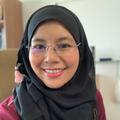 Norhayati Abdullah
Associate Professor, Environmental Engineering, Universiti Teknologi Malaysia Kuala Lumpur
 |
 Tim Constantine
Global Director - Water Resource Recovery Solutions, Jacobs
 |
 Robert Thompson
General Manager, Orange County Sanitation District (OCSAN)
 |
 Martin Spruijt
R&D Project Manager, PWNT
 |
 Shu Yi Chow
Process/Environmental Engineer, Jacobs
 |
Session 3.4 – Anaerobic Digestion Enhancement
20 June 2024
4:30pm - 6:00pm
Room 3, Level 3
Session Chairs: Bill Barber, Cambi (United States) and Colin Newbery, Jacobs (Singapore)
Overview to Anaerobic Digestion Enhancement
Per Henrik Nielsen, VCS Denmark (Denmark)
Presenter is an invited speaker. No executive summary is available.
Optimising Anaerobic Digestion with the Microbial Hydrolysis Process
Dave Parry, Jacobs (United States)
Anaerobic digestion performance was optimised with the microbial hydrolysis process (MHP) using Caldicellulosiruptor bescii (C. bescii), a hyper-thermophilic bacterium. The volatile solids reduction (VSR) was tested at lab-scale and pilot-scale from anaerobic digestion (AD) of solids from several water resource recovery facilities (WRRF). A test AD system with MHP was compared to a control AD system without MHP as well as the full-scale AD performance. The addition of MHP enhanced the performance of all AD systems from a VSR of less than 60 percent to over 75 percent: a 25 percent and greater increase in biogas production and reduction in biosolids production. Design configurations for adding MHP to full-scale AD systems were shown to be compatible with any AD process including mesophilic AD (MAD), thermophilic AD (TAD), temperature phased AD (TPAD), and the thermal hydrolysis process (THP) followed by AD. The MHP operates at 75 C with a hydraulic retention time of 2 days and can be configured for pasteurization to produce Class A Biosolids. MHP can also be configured with recuperative thickening to increase both AD performance and capacity.
Comparing Conventional Ad Digestion with an Innovative Plug-Flow Digestion Technology in North America
Eddie Koornneef, Royal HaskoningDHV (Netherlands)
For over a year, the Ephyra® technology was tested at pilot scale at the Waterloo WWTP in CANADA. This pilot was operated on the primary sludge (PS) and thickened waste activated sludge (TWAS) from the WWTP. The first objective was to assess whether Ephyra would show a higher VS-destruction rate than the conventional AD while operating under the same conditions. The operating conditions reflected the average situation. The second objective was to demonstrate that the Ephyra can stably operate while the load on the reactor was doubled compared to the control digester. This would ultimately result in either doubling the capability for amount of sludge treated or building a reactor half the size compared to conventional systems. With the obtained results over the course of the pilot, we conclude that Ephyra can operate stably and safely in Ontario environmental circumstances while improving the sludge digestion process and reducing CO2-footprint.
Characterisation of Refractory Organic Matter from Sludge Treated by Hydrothermal Carbonisation: Sludge Type and Temperature Influence
Sofiane Mazeghrane, SUEZ (France)
Hydrothermal carbonisation (HTC) increases the sludge dewatering efficiency, but also the refractory organic compounds (rDOM) return load to a wastewater treatment plant (WWTP). This load increase can jeopardize WWTP effluent quality. Therefore, rDOM should be reduced and hence better characterised. The present study aims at developing a non-destructive method for rDOM characterization and use it to determine the influence of sludge nature and of heating temperature of the HTC process on the quantity and quality of rDOM. Temperature is a crucial parameter which determines both rDOM amount and quality, in particular its nitrogen content. Moreover, the amount of rDOM is influenced by the nature of sludge. The quality of rDOM depends on the sludge origin but only to a lesser extent on the sludge composition. These results show that the developed characterization method can help choose optimal operating conditions of the HTC to reduce rDOM and its nitrogen content.
Speakers
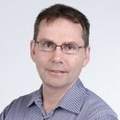 Colin Newbery
Technical Director - Water, Jacobs
 |
 Bill Barber
Technical Director, Cambi
 |
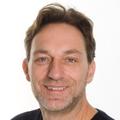 Per Henrik Nielsen
Project Director of Special Projects, VCS Denmark
 |
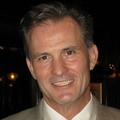 Dave Parry
Division Director, Jacobs
 |
 Eddie Koornneef
Senior Process Engineer - Water and Sludge Technology, Royal HaskoningDHV
 |
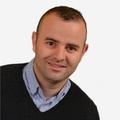 Sofiane Mazeghrane
Research Project Manager, SUEZ
 |
Session 3.5 - Digital Twin for Used Water Systems
21 June 2024
09:00am - 10:30am
Room 3, Level 3
Session Chairs: Jon Grant, Sentry (United States), Thomas Allen, RSK Group (Singapore)
Introduction to Digital Twin for Used Water Systems
Fredrick Royan, Frost & Sullivan (United Kingdom)
Presenter is an invited speaker. No executive summary is available.
Energy Intelligent Wastewater Treatment Plant in Germany
Sleman Saliba, ABB AG (Germany)
The energy intelligent wastewater treatment plant of the Municipality of Schwarzenbruck in Germany integrates and exploits all the different existing energy generation, consumption and storage options into a sophisticated energy management and optimisation system to re-utilise the gases on site and enable a net-zero waste water treatment on site.
Implementation of Autonomous Operation of Ultrafiltration Processes Through Hybrid Digital Twin and Data Driven Automation for Industrial Water Production
Jimmy Yu, PepsiCo (United States)
Retrofit digital transformation was explored to assist the operation and maintenance of high efficiency water purification assets at PepsiCo for sustainability purpose. This presentation describes the retrofit digitalisation of a pilot scale and a full-scale operational ultrafiltration (UF) system at two beverage production facilities. Customised digital twins with associated historical data structures of the UF systems were created embedding their design, control philosophy, and operational data. Autonomous model predictive control was deployed to trigger backwashes utilizing the digital twin as the kernel. Finally, a learning algorithm utilising a factorial experimental design matrix was used, whereby backwashes of variable intensity in tune with the rate and extent of membrane fouling were triggered. During a year of operation cleaning water consumption at these facilities reduced by 32-50%, energy consumption of the processes were lowered by up to 18%, and the projected membrane life was extended by 36%.
Operator’s Perspective on AI and Machine Learning Tools for Streamlining Plant Operations at World’s Largest Potable Reuse Facility
Derrick Mansell, Orange County Water District (United States)
Water treatment facilities encounter a myriad of challenges, including the need to maintain water quality standards, optimize energy consumption, and minimize operational costs. Traditional methods of plant operation and control do not fully utilize the high volume of available data, necessitating innovative solutions to enhance performance and reliability. AI and ML technologies offer potential to analyze vast amounts of data, identify trends and anomalies, and optimize processes to improve efficiency, performance, reliability, and ensure compliance with regulatory standards.
Speakers
 Jon Grant
Chief Commercial Officer, Sentry
 |
 Thomas Allen
Head of Digital Water, RSK Group
 |
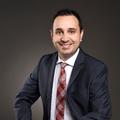 Sleman Saliba
Global Product Manager Energy Management, ABB AG
 |
 Jimmy Yu
Director of Water Processing Technology, PepsiCo
 |
 Fredrick Royan
Global Practice Area Leader for the Sustainability and Circular Economy Practice; Chair of Council, Frost & Sullivan; Smart Water Networks (SWAN)
 |
 Derrick Mansell
Operations Manager, Orange County Water District
 |
Session 3.6 - Industrial Wastewater Treatment in Singapore
21 June 2024
11:00am - 12:30pm
Room 3, Level 3
Session Chairs: Somnath Basu, Independent Consultant (United States)
Reducing Cooling Tower Water Consumption through Advanced Electrooxidation Technology
Mohammad Sherafatmand, Hydroleap Pte Ltd (Singapore)
A substantial part of the freshwater used in the industry is consumed in cooling towers. Cooling towers discharge saline cooling tower blowdown (CTBD), and the reuse of CTBD in the cooling tower can lower the industrial freshwater footprint. Due to evaporation in the cooling tower, the concentration of salts in the cooling tower water increases. After a salt concentration threshold is reached, cooling tower water is discharged as so-called cooling tower blowdown (CTBD) and replaced with fresh water. The reuse of this CTBD in the cooling tower itself could allow the industries to reduce their freshwater consumption. Among existing chemical treatments, electrochemical oxidation (EO) is of interest because of its versatility, controllability, and enhanced removal efficiency for recalcitrant and toxic contaminants. Hydroleap offers its proprietary advanced electrooxidation process (EO) that works for large as well as small buildings, where there might not be a full-time mechanic or on-site cooling-tower O&M contractor. Hydroleap’s EO technology oxidizes minerals and contaminants in the water, killing bacteria (including legionella) and breaking down calcium buildup to mitigate scaling. Once installed, the AOP system needed no regular maintenance or monitoring. The approximate blowdown saving would be up to 40%.
Advanced Ozonation Catalyst: Development, Commercialization & Application
Yanling Shi, Sembcorp China Holding Corporation (Singapore)
The granular activated carbon (GAC) based ozonation catalyst developed by Sembcorp is used for advanced treatment of chemical industrial park wastewater through catalytic ozonation. The average total organic carbon (TOC) removal rate of the wastewater in the on-site pilot testing is over 50%, which is 20%-40% higher than commercial catalysts in the market. Based on pilot testing for a period of over 4 months, the catalyst can achieve ~30% reduction in ozone dosage in the catalytic ozonation process of Sembcorp’s newly built chemical industrial park wastewater treatment plant in Nanjing. Compared with a commercial ozonation catalyst with a high market share, Sembcorp’s catalyst exhibits 20% lower total life cycle cost of 10 years, demonstrating a good commercialisation prospect.
Efficient Recovery of Organics from Wastewater by MPPE/S
Jeroen Boom, Veolia Water Technologies (Netherlands)
This paper describes MPPE (Macro Porous Polymer Extraction) and its sorption equivalent, MPPS, to remove and recover organics from waste water. MPPE uses an extraction type of media, and is successfully applied for a.o. BTEX(1) removal from Gas Produced Water. MPPS is a new development based on a sorption type of media but has now been applied for the first time on commercial scale within the semiconductor industry. The main driver to develop MPPS is the fact that MPPE is limited to removal of relatively non-polar components like BTEX or chlorinated hydrocarbons. However, new components like phenol that are more frequently listed in discharge specifications are hardly removed by MPPE. With a sorption type of media, used in (exactly) the same process, polar components can be removed and recovered efficiently, which opens routes to new applications.
Speakers
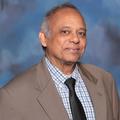 Somnath Basu
Senior Technology Independent, Consultant
 |
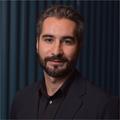 Mohammad Sherafatmand
Chief Executive Officer & Founder, Hydroleap Pte Ltd
 |
 Yanling Shi
Sembcorp China Holding Corporation
 |
 Jeroen Boom
Sales Director, Veolia Water Technologies
 |
 Phek Chuan Siow
Director at Xylem Southeast Asia, Xylem
 |
Session 3.7 - Monitoring and Management of Process Emissions (Part 2)
21 June 2024
2:00pm - 3:30pm
Room 3, Level 3
Session Chairs: Prof Kartik Chandran, Columbia University (United States) and Prof Liu Ye, University of Queensland (Australia)
Quantifying Nitrogenous Greenhouse Gas from Emerging Biological Nutrient Removal (BNR) Processes
Gnanaraj Augustine, Columbia University (United States)
Nitrous oxide (N2O) is a potent greenhouse gas that contributes considerably to wastewater treatment plants' greenhouse gas footprint. Our previous studies have shown that poorly designed and operated biological nutrient removal (BNR) can lead to increased nitrous oxide levels in the atmosphere. Our current studies focus on quantifying and mitigating N2O emissions from some emerging BNR processes operated to treat both mainstream and sidestream wastewater at different full-scale wastewater treatment plants (WWTPs) using a benchmark U.S Environmental Protection Agency (U.S EPA)-endorsed protocol. The results reported herein focus on step-feed BNR, partial denitratation- anammox (PdNA), ammonia-based aeration control (ABAC) and the single-reactor high-activity removal over nitrite (SHARON) processes. Based on our recent studies, we show that it is possible to achieve much lower N2O emissions relative to the emission fraction (EF), most recently proposed by the Intergovernmental Panel for Climate Change (IPCC) for the wastewater sector.
Predicting Nitrous Oxide Emissions from the Activated Sludge Process Using BioWin and Sumo Mechanistic Models
Paul Zuber, Mott MacDonald (Singapore)
Nitrous oxide (N2O) is a greenhouse gas emitted during wastewater treatment. The water sector is currently developing tools and strategies to quantify and mitigate these emissions using a combination of field measurement, mechanistic modelling, advanced process control and artificial intelligence. The objective of this research was to develop the mechanistic modelling component of these strategies. BioWin and SUMO were used to predict N2O emissions from the activated sludge process. Initially the models did not align for basic parameters such as MLSS and airflow, and had to be synchronised by optimising biomass populations, influent fractions, process switches, and kinetic and stoichiometric parameters. The two models were calibrated using field data for liquid phase, gas phase, and emission rates for N2O. Both models predicted N2O emissions effectively and are useful tools in quantifying process emissions. The N2O prediction capability is still being developed, but currently, SUMO’s predictions are closer to the measured data.
N2O: To Measure or Model, that is the Question
Tony Koodie, Binnies Singapore (United Kingdom)
One of the risks associated with nitrogen removal in municipal wastewater treatment is the unintended generation of nitrous oxide (N2O). This powerful greenhouse gas (GHG) is the main GHG emitted during wastewater treatment and the third most abundant GHG in the atmosphere with a global warming potential of 265 times that of carbon dioxide (CO2) in 100-year life span. Mitigation of N2O is of primary importance to meet bold plans of reducing operational emissions and reducing offsets within the water sector. There is now growing interest in understanding, managing, and ultimately reducing wastewater treatment N2O emissions. The strategy to achieve this involves both measurement and modelling of emissions, however, there is significant debate about the accuracy and effectiveness of these pathways. The aim of this presentation will be to address and discuss the uncertainties of both approaches and eliminate myths and perceptions surrounding measurement campaigns and process modelling simulations in determining N2O emissions and to facilitate N2O mitigation strategies.
A Practical Approach to Reducing Fugitive GHG Emissions in Wastewater Management
Per Henrik Nielsen, VCS Denmark (Denmark)
Denmark’s three largest wastewater utilities — Vandcenter Syd (Odense), Aarhus Vand (Aarhus) and BIOFOS (Copenhagen) — have developed the ARES (Active Reduction of Emissions) project, a multifaceted initiative to reduce fugitive methane (CH4) and nitrous oxide (N2O) emissions associated with managing urban municipal wastewater. The project’s goal is to demonstrate whether relatively modest investments can create significant urban greenhouse gas (GHG) emission reductions. The ARES project addresses an important and urgent challenge we all face — GHG emissions and accompanying climate change. We intend to demonstrate that it’s possible to identify (and reduce) some significant GHG emission sources from sewer collection systems and water resource recovery facilities (WRRFs). We’ll also illustrate how these emissions can be used as a resource to produce green energy (as an example) that benefits the environment while addressing climate change challenges.
Speakers
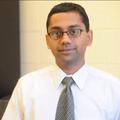 Dr. Kartik Chandran
Professor, Columbia University
 |
 Per Henrik Nielsen
Project Director of Special Projects, VCS Denmark
 |
 Dr. Liu Ye
Professor, University of Queensland
 |
 Paul Zuber
Technical Director - Treatment, Mott MacDonald
 |
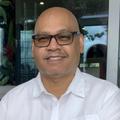 Tony Koodie
International Process Director, Binnies Singapore
 |
Session 3.8 - Pipes Underground
20 June 2024
09:00am - 10:30am
Room 5, Level 3
Session Chair: Susan Moisio, Jacobs (United States) and Steven Woon, AECOM (Singapore)
Using Lagrangian Wastewater Quality Sensors for Sewer Defects Detection: Focus on Saline Intrusion Identification and Location
Thibaud Maruejouls, SUEZ (France)
Sewer asset assessment requires improved inspection capabilities meanwhile sewers are well-known to be hazardous environments. If none of the existing technologies can cover the whole heterogeneity of sewers, it is important to develop new approaches to fill the gap of complicated pipe conditions that are not inspected today. The new SewerBall based approach aims at filling this gap. A new equipment is presented where its capacity to help tackling the saline water problem by detecting and geolocating the defects.
Bondi Ocean Outfall Sewer Rehabilitation - Resilience for the Future
Ryan Beheshti, WSP (Australia)
The Bondi Ocean Outfall Sewer (BOOS) is iconic wastewater infrastructure designed and constructed between 1880 and 1889, The BOOS conveys sewage from the central business district of Sydney Australia and is now a critical asset operated by Sydney Water as part of the first ocean outfall system built in Australia. To provide resilience for the future and reliable operation for the next 100 years, it is proposed to rehabilitate the sewer. The structure is a 2.4m high x 2.0m wide brick and concrete oviform located below densely populated residential suburbs and access is a major issue. Relining the BOOS with a Glass Reinforced Plastic (GRP) liner by slip-lining is proposed through a complex optioneering and structural assessment. Overall, the GRP liner provides a technical and reliable long-term solution that meets the project objectives and is installed using a safe and economic slip lining methodology.
Overcoming Construction Challenges of an Undersea Conveyance Tunnel in Singapore
Dickson Charles, Jacobs (Singapore)
Expansion of the water supply conveyance capacity to Jurong Island to cater for future demands is critical. The most effective way to achieve this is via a 6m diameter subsea tunnel enclosing four water pipelines which will convey reclaimed water from Tuas Water Reclamation Plant (TWRP) to Jurong Island under the busy West Jurong channel. Subsea tunnels have slightly different challenges than underground tunnels. Major challenges encountered on this project include high water ingress, limitations in interpreted soil investigation data and active instrumentation monitoring of existing utilities (Gas Transmission Pipe).
Speakers
 Susan Moisio
Global Vice President and Global Water Director, Jacobs
 |
 Thibaud Maruejouls
R&D Engineer, SUEZ
 |
 Ryan Beheshti
Design Manager / Associate Civil Engineer, WSP
 |
 Charles Dickson
Senior Resident Engineer (Tunnel), Jacobs
 |
 Steven Woon
Executive Director, AECOM
 |
Session 3.9 - Water Quality Monitoring (Conveyance)
20 June 2024
11:00am - 12:30pm
Room 5, Level 3
Session Chairs: Susan Moiso, Jacobs (United States) and Desmond Ng, AECOM (Hong Kong)
Real Time Control/ Sewer Modelling and Network Control
Jeroen Langeveld, Delft University of Technology (Netherlands)
Presenter is an invited speaker. No executive summary is available.
Data Driven Environment Impact Risk Model
Ben Dunn, Aurecon (Australia)
Across Sydney there is a huge variety of different waterways values. Protecting these values is important, so understanding these values relative to the potential for impact across the wastewater system creates an interesting challenge. An innovative data centric geospatial risk analysis model was developed to inform investment, by defining the value and risk of impact at social and/or environmental waterway sites. The risk of impact was defined through the use of water quality models that included simulation of key wastewater pollutants. With the inherent quantum of data available, it was critical that the tool was easy to use and understand. This was achieved through heat mapping risk with a mesh that was visually appealing and intuitive to comprehend.
DC Water’s Clean Rivers Program
Robert Bornhofen , DC Water (United States)
Approximately one-third of the District of Columbia is supported by combined sewers that service both sanitary and storm water. for over 125 years, the combined sewer overflows (CSOs) have polluted the Potomac and Anacostia Rivers and tributaries that surround our nation’s capital. In response, DC Water is implementing a bold, far-reaching program called the Clean Rivers Project to reduce CSO outflows into the District’s waterways – the Anacostia and Potomac Rivers and Rock Creek. Approximately 29 kilometers of deep underground storage are being developed to reduce CSO outflow. Green Infrastructure is also being created to manage runoff in the Rock Creek and Potomac River sewer sheds in delivering triple-bottom-line benefits (environmental, social, and economic) for District citizens. This paper will focus on efforts achieved and underway to deliver a resilient and reliable solution for a cleaner environment. Conference attendees will gain insight and new knowledge from DC Water’s experience in providing effective and efficient wastewater management.
Life Rubies - Real-Time Pollution-Based Control of Urban Drainage and Sanitation Systems for Protection of Receiving Waters
Thibaud Maruejouls, SUEZ (France)
LIFE RUBIES is a European co-funded project aimed at demonstrating the benefits of deploying Real Time Control (RTC) strategies to mitigate urban drainage impacts on the receiving aquatic ecosystems. LIFE RUBIES seeks to combine both hydraulic-and quality-based RTC concepts to enhance environmental benefits. The quality monitoring strategy is now fully operational (sewer and river) and first results are presented and analysed. The impact of the sewer on the environment is explored and further discussed.
Approach to Trade Effluent Management in PUB, Singapore’s National Water Agency
Kevinpreet Singh, PUB Singapore’s National Water Agency (Singapore)
Singapore’s demand for water has continued to increase in tandem with population and economic growth, and is expected to double by 2060 to about 800 Million Gallons per Day (MGD). PUB has diversified our sources of water supply through the ‘Four National Taps’, which comprises of (a) Water from Local Catchment, (b) Imported Water, (c) NEWater and (d) Desalinated Water. To augment the water demand, Singapore’s reliance on NEWater will increase from the current 40% to 55% by 2065. This emphasizes the importance of used water as a precious resource and ensuring that every drop of used water collected is fit for recycling. These challenges inspire PUB to seek innovative ideas and develop capabilities to ensure that every drop of used water collected is fit for recycling. This abstract outlines PUB’s trade effluent management framework, assesses its effectiveness and identifies future potential key challenges.
Speakers
 Susan Moisio
Global Vice President and Global Water Director, Jacobs
 |
 Thibaud Maruejouls
R&D Engineer, SUEZ
 |
 Jeroen Langeveld
Director & Part-time Associate Professor of the Urban Drainage Knowledge Program, Delft University of Technology
 |
 Ben Dunn
Associate, Aurecon
 |
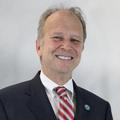 Robert Bornhofen
Director – Innovation, DC Water
 |
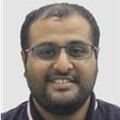 Kevinpreet Singh
Sr Asst Director, Water Reclamation (Network), PUB Singapore’s National Water Agency
 |
 Desmond Ng
Executive Director, AECOM
 |
Session 3.10 – Emerging Contaminants
20 June 2024
2.30pm - 4.00pm
Room 7, Level 3
Session Chair: Shane Snyder, Georgia University of Technology (United States)
Photocatalytic Ozonation of Wastewater in Membrane Reactors for Degradation of Micropollutants
Stefan Herrmann, RWTH Aachen University - Chair of Chemical Process Engineering (Germany)
Three drawbacks of classical ozonation processes are the low degradation rate of certain micro-pollutants, waste of undissolved ozone, and the formation of carcinogenic bromate. This work uses bubble-free ozonation with ceramic membranes to prevent bromate formation during ozonation. Furthermore, the tubular reactor is equipped with static mixers to avoid hotspots of dissolved ozone. Additionally, a photocatalyst (TiO2) on the membrane's surface increases the concentration of OH-radicals in water, resulting in increased micropollutant degradation by photocatalytic ozonation. A tubular UV reactor is used for the irradiation of the photocatalyst. Experiments with photocatalytic ozonation and static mixers show a 30% faster complete degradation of sulfamethoxazole and an increase of diclofenac degradation from 27% to 78% after two hours compared to sole ozonation. Furthermore, simulations of this process reveal a decrease in bromate formation of up to 31% at the same ozone exposure using static mixers.
The Role of Reactive Chlorine and Nitrogen Species in Micropollutant Degradation in UV/Monochloramine
Zi Quan Seah, Nanyang Environment and Water Research Institute (NEWRI) (Singapore)
Monochloramine (NH2Cl) is applied upstream of reverse osmosis (RO) membranes for biofouling control and residual NH2Cl can undergo UV photolysis downstream, generating reactive species for an AOP to occur. The performance of UV/monochloramine is affected by pH, chloride, bicarbonate/carbonates and other common water quality parameters by shifting the speciation of radical generated. Thus, the objective of the study is to investigate the role of reactive chlorine and nitrogen species in micropollutant degradation and compared with other oxidants, hydrogen peroxide and chlorine. By addition of preformed monochloramine, the degradation of micropollutants 1,4-dioxane, acetaminophen, caffeine and sucralose were evaluated in presence of methanol as a •OH radical scavenger. The contribution of reactive chlorine and nitrogen species to micropollutant degradation was found to be significant. The performance of UV/monochloramine varies between ammonium chloride and ammonium sulfate, with a higher degradation of 1,4-dioxane and caffeine due to the difference in chloride concentration.
Targeted and Non-Targeted Monitoring of PFAS in Full-Scale Drinking Water, Wastewater and Leachate Treatment
Mar Esperanza, CIRSEE-SUEZ (France)
The worldwide presence of PFAS, their proven toxicity and probable effects on human health have raised scientific, institutional and public concern about these so-called “forever chemicals”. As part of a research program aiming to optimise PFAS removal from resources for drinking water production, both target and not-target analytical methods have been developed and implemented. In parallel, occurrence and fate of PFAS was evaluated on 6 full-scale drinking water, 5 wastewater and 5 leachate treatment facilities under real operational conditions. Non-targeted (suspect) screening has been applied to water resources and drinking water to obtain a wider view of PFAS profiles and follow modifications due to treatment. This presentation focuses on the analytical challenges faced during development and the generated data on occurrence and fate of a large range of PFAS on full-scale water treatment plants.
Designing a full-scale ozonation plant for maximum micropollutant removal and minimal bromate formation, using CFD simulation with integrated chemical kinetics as optimization and validation tool
Wim Audenaert, AM-Team (Belgium)
The water authority De Dommel (The Netherlands) is in the process of realizing a full-scale ozone installation at the WWTP of Hapert for demonstration purposes on the removal of organic micropollutants (OMPs). The AMOZONE virtual piloting tool was used in the planning stage for feasibility assessment and to make key technological decisions for this ozone installation. In the consequent design stage, the CFD- AMOZONE model was used to achieve an optimal and efficient design of the full-scale demonstration facility. Based on this model and considering the water matrix and gas diffuser specifications, the design and configurations were changed. A co-current configuration performed best for both maximum OOMPs removal and minimal BrO3- formation. In the consequent operational stage, following construction, the model will be used as a real-time digital twin.
Speakers
 Stefan Herrmann
Chair of Chemical Process Engineering & Scientific Staff / PhD Student, RWTH Aachen University
 |
 Zi Quan Seah
Research Associate, Nanyang Environment and Water Research Institute (NEWRI), Nanyang Technological University
 |
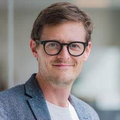 Dr. Wim Audenaert
Co-founder and CEO, AM-TEAM
 |
 Prof. Shane Snyder
Executive Director, Nanyang Environment and Water Research Institute (NEWRI)
 |
 Mar Esperanza
Expertise Laboratory Manager, CIRSEE-SUEZ
 |
Session 4.1 – Planning Climate Resilient Cities
20 June 2024
2:30pm - 4:00pm
Room 4, Level 3
Session Chairs: Mark Fletcher, Arup (United Kingdom), Adam Hosking, Jacobs (United Kingdom)
Linking Land Use and Urban Planning to Water Metabolisms Through Semantic Web Technologies for Resilient Future Water Systems.
Andrea Bartolini, Singapore ETH Centre (Singapore)
Modern cities are complex environments, with interconnected and interdependent systems impacting each other through feedback loops. It is then important to have adequate tools for scenario making and planning: allowing to infer potential futures through simulation and modelling, eventually providing planners with critical information for decision making. This work introduces a framework to help urban and system planners tackle the task of designing for robust and resilient future water infrastructure, by linking knowledge about urban planning to water metabolisms towards estimating realistic future scenarios. The framework uses semantic knowledge representation to model the links between urban planning and urban water metabolisms: from the necessity to supply drinking water to buildings, to collecting rain and waste-water for appropriate disposal and re-use. The framework is applied to selected parts of Singapore, quantifying present metabolisms and estimating scenarios for future ones.
Valuation of Ecosystem Benefits of Coastal Parks and Nature Areas for Prioritisation of Climate Adaptation Projects
Joost Buurman, Royal HaskoningDHV (Singapore)
Substantial investments in adaptation measures, such as beach nourishment, flood levees, and storm surge barriers, will be necessary to safeguard coastal cities like Singapore from rising sea levels. These measures will have consequences for the coastal zone and impact its environmental, cultural, and amenity values. This study provides an overview of these ecosystem values of urban coastal parks and nature areas that are affected positively or negatively by coastal adaptation to sea level rise in Singapore. Additionally, the paper presents a comprehensive database with monetary unit values. The database contains 163 values from 60 studies. The database could be used in cost benefit analysis to prioritize coastal adaptation measures. A case study of hypothetical adaptation measures at Changi Beach in Singapore was conducted to demonstrate the use of the values in the database.
The River Thames Scheme – A Landscape Based Approach to Climate Resilience and Flood Risk Management
Andrew Mowl, WSP (United Kingdom)
This abstract sets out the funding model for delivery of the River Thames Scheme, a blue green infrastructure project that enables communities along the River Thames in an area of West London, in the UK, to live more sustainably. The objective of the paper is to highlight how the multiple benefit approach has enabled funding of the flood risk solution. Demonstrating how a landscape-based approach to the design has provided a solution to other climate resilience challenges in the local area. The paper details the approach taken to securing the partnership funding commitment, through the development of a collaborative working agreement and demonstrate how this collaborative agreement has international application, by outlining the areas the agreement covers in terms of decision making, funding and benefits, resourcing the scheme and ownership and operation of assets. The findings of the paper are that sustainable solutions to managing flood risk are intrinsically linked to other climate challenges and that individually may not attract sufficient funding to create a viable business case for delivery, but can be integrated to create affordable, fundable solutions. Highlighting that collaborative partnership working is the key to unlocking these problems, taking shared ownership of both delivery risks. Providing working examples of how this has been achieved and how this can be applied elsewhere.
Enhancing Sustainability and Resilience in Coastal Cities Through the Incorporation of Seawater into Urban Metabolism
Zi Zhang, Hong Kong University of Science and Technology (Hong Kong, China)
Urban metabolism relies heavily on water and energy, but climate change-induced water scarcity and high temperatures present a significant threat to sanitation and space cooling services in coastal cities, where over 40% of the population lives. Hong Kong has demonstrated the effectiveness of seawater use for toilet flushing and district cooling, which could be a potential solution for other coastal cities worldwide. However, there is a lack of comprehensive insights on how seawater use can be adopted to promote sustainable development. To address this, we developed a four-principal framework that provides technical and policy guidance for sustainable seawater use. The framework includes location analysis, urban spatial analysis, integrated sustainability assessment, and nexus analysis. Breaking barriers between sectors and encouraging inter-municipal cooperation are critical to the successful use of seawater. By adopting this framework, coastal cities can enhance their sustainability and resilience, improving the quality of life for their citizens.
Speakers
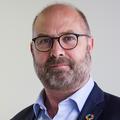 Mark Fletcher
Global Water Business Leader, Arup
 |
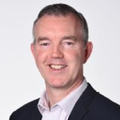 Adam Hosking
Vice President and Global Director for Water Resources & Resilience, Jacobs
 |
 Andrea Bartolini
Energy Systems Analyst & Postdoctoral Researcher, Singapore ETH Centre
 |
 Joost Buurman
Adjunct Associate Professor, NUS and Project Director – Resilience Economics, Royal HaskoningDHV
 |
 Andrew Mowl
Business Director, WSP
 |
 Zi Zhang
Post Doctorate of Philosophy - Civil & Environmental Engineering, Hong Kong University of Science and Technology
 |
Session 4.2 – Reforming Governance for Climate Resilience
20 June 2024
4:30pm - 6:00pm
Room 4, Level 3
Session Chairs: Pritha Hariram, Ramboll (Singapore) and Sarah Hiong, PUB, Singapore's National Water Agency (Singapore)
Overview of Reforming Governance for Climate Resilience
Bart Schoonbaert, Arup (United Kingdom)
Presenter is an invited speaker. No executive summary is available
International Handbook on Emergency Response for Flood Defences
Bart Vonk, Ministry of Infrastructure and Water Rijkswaterstaat (Netherlands)
Floods pose eminent threats for people, economy and environment. The risks will increase as a result of climate change, increasing population and increasing economic value. Mitigating risks asks for a total system approach from source (water system) to pathway (flood defences) and receptor (consequences). The International Handbook on Emergency Response for Flood Defences (IHERFD) wants to share the possible measures at the “pathway” in the flood risk management system, by looking at the flood risk management cycle, from preparation, via response to recovery and mitigation. This Handbook will not be a simple cooking recipe but will provide the needed guidance to come to an effective flood risk management approach. Early 2024, the final draft of the Handbook will be ready, and the publishing process will start. The SIWW conference 2024 will be a unique opportunity to present and discuss the developments and potentials of the Handbook with the flood defence managers attending.
Governance is Key to Developing an Integrated Flood Response Approach in Washington DC
Salil Kharkar, DC Water (United States)
In recent years, DC has experienced short duration high intensity storms. The accompanying damage, and its impact on residents and businesses was significant. While every agency in the City responded admirably, each had their own area of responsibility leaving gaps between their roles. After several of these events, the Mayor commissioned a Task Force comprising 28 Agencies to develop a wholistic response to Flooding. Operationally, the Task Force was co-led by the Director of the Department of Energy and Environment and the CEO of DC Water. These are the two entities that are directly connected with water in the District of Columbia. The Task Force membership consisted of 28 agencies -District, Federal, NGO, and Private Utilities. A challenge with Task Forces created around multi-jurisdictional issues is obtaining tangible and actionable outcomes that are focused on the greater good versus mission of the dominant agency. To overcome this challenge, the duration of the Task Force was limited to 12 months and provided with an established goal of developing tangible and implementable Action Plans in 9 identified areas of concern to benefit the residents. The Task Force maintained a website that listed all meetings and video recordings. The Public input ensured transparency and that the solutions being developed met the needs of the constituents who were most impacted by these weather events.
Prioritising National Investment Plans a Framework for Strategic Investment Planning, With Case Studies
Blair Spendelow, JBA Consulting (Singapore)
Often, governments and International Financial Institutions are challenged with determining optimality of a portfolio of diverse resilience projects. We present a Strategic Investment Framework (‘the Framework’) developed to guide risk-informed prioritisation of flood risk reduction investments. It is intended that this applied Framework be used by those promoting a flood risk reduction project to a) help conceptualise the performance of the project in the context of a broader strategic response, b) assess the economic benefits of the proposed project against a baseline and the economic benefits of other investment options, and c) provide a consistent context in which the preparedness of project can be understood and enhanced in order for like-to-like project appraisal. The Framework offers a robust tool to assess optimal present-day response to existing adaptation gaps to avoid maladaptation and promote low-regret risk reduction measures.
Speakers
 Pritha Hariram
Head, Water Infrastructure & Climate Adaptation, Ramboll
 |
 Sarah Hiong
Deputy Director - Coastal Protection, PUB, Singapore's National Water Agency
 |
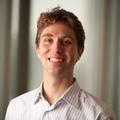 Bart Schoonbaert
Associate Director - Water Advisory, Arup
 |
 Bart Vonk
Coordinating Water Defense Advisor, Ministry of Infrastructure and Water Rijkswaterstaat
 |
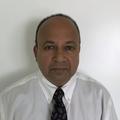 Salil Kharkar
Vice President and Senior Technical Advisor to COO, DC Water
 |
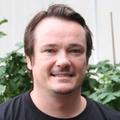 Blair Spendelow
Technical Director - Flood Risk and Resilience, JBA Consulting
 |
Session 4.3a - Automation and AI for Urban Water Management
21 June 2024
09:00am - 10:30am
Room 7, Level 3
Session Chairs: Prof Tony Wong, Tony Wong Consulting (Australia), Perrine Hamel, Nanyang Technological University (Singapore)
Overview of Automation and AI for Urban Water Management
Vladan Babovic, National University of Singapore (Singapore)
Presenter is an invited speaker. No executive summary is available.
Implementation of The Smart Drainage Grid System for Data Driven Drainage Management
Jochen Schmidt, National Institute of Water and Atmospheric Research (New Zealand)
PUB (Singapore’s National Water Agency)’s Smart Drainage Grid (SDG) System, which is part of PUB’s Smart Networks, enables data-driven decision support for the strategic planning and maintenance of drainage infrastructure. Developed for PUB by the New Zealand National Institute for Water and Atmospheric Research (NIWA), this innovative system seamlessly integrates custom data analytics applications with industry-standard GIS and time-series software, specifically ESRI's ArcGIS and Aquatic Informatics' AQUARIUS. By amalgamating data from PUB's extensive hydrometric monitoring network, alongside rainfall datasets sourced from the National Environment Agency (NEA) and pertinent GIS layers, such as construction work and catchment data, the SDG System delivers dual functionality. Firstly, it promptly identifies anomalies in drainage behaviour and issues alerts, facilitating pre-emptive maintenance of drainage infrastructure. Secondly, it furnishes valuable insights into drainage performance for strategic drainage planning purposes.
Improving Rainfall Observation in Urban Areas: A Large-Scale Study on Repurposing CCTV Cameras for Precipitation Measurement
Gineesh Vattamkandathil Sukumaran, HydroInformatics Institute Pte Ltd (Singapore)
Accurate and timely precipitation measurement is essential for various applications, including water resource management, flood warning, weather prediction, and climate research. Rain gauges have limitations in providing high-resolution data, especially in topographically diverse areas and tropical climates where rainfall events have high spatial and temporal variability. This paper describes the approach and method to utilize an existing CCTV network for rainfall measurements, considering the feasibility and practical challenges of developing a CCTV-based real-time rainfall estimation system. Convolutional neural network (CNN) models were trained using an Active Learning framework to categorize CCTV images into five rainfall categories from 0 to 190 mm/hr. Trained CNN models were deployed in the cloud, and the accuracy of the models was monitored using the model drift approach. To our knowledge, CROS (CCTV Rainfall Observation System) is the first-ever attempt to repurpose an extensive area network of CCTV cameras to estimate rainfall.
Application of Digital Tools and Automation for Study on Improvement of Drainage and Sewerage Infrastructures Against Climate Change Effect and Adverse Weather Conditions
Yuvi Luo, Arup (Hong Kong, China)
Hong Kong Special Administrative Region of People’s Republic of China (“Hong Kong”) is a dense urban coastal city vulnerable to flooding due to heavy rainstorm and high sea level. The situation will be worsened as a result of climate change impact of sea level rise and more frequent and intense adverse weather events including typhoons and rainstorms. The Drainage Services Department (“DSD”) attaches great importance to the capability of DSD’s drainage and sewerage infrastructures in combating climate change effects and adverse weather conditions to safeguard the well-being of the population and ensure the sustainable development of the city. Ove Arup & Partners Hong Kong Limited (“Arup”) was appointed by DSD to conduct an investigation study for the improvement of DSD Infrastructures against climate change effects and adverse weather conditions in Mainland North and Outlying Islands of Hong Kong (“the Study”). Arup applied digital tools and automation to comprehensively assess the flood risk, formulated adaptation and resilience measures and prepared design drawings for 308 nos. drainage and sewerage infrastructures situated at scattered locations of Hong Kong. The successful application of digital tools and automation not only saved manpower resources and enhanced work efficiency, but also optimised design workflow, ensured accuracy and consistency, and enabled knowledge sharing and innovations.
Speakers
 Prof. Tony Wong
Director, Tony Wong Consulting and Distinguished Professor of Sustainable Development, Monash Univeristy
 |
 Perrine Hamel
Principal Investigator, Earth Observatory of Singapore and Assistant Professor, Nanyang Technological University
 |
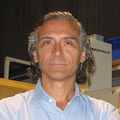 Prof. Vladan Babovic
Professor, National University of Singapore
 |
 Yuvi Luo
Associate Director, Arup
 |
 Dr. Jochen Schmidt
Chief Scientist - Environmental Information, National Institute of Water and Atmospheric Research
 |
 Gineesh Vattamkandathil Sukumaran
Lead Data Scientist, HydroInformatics Institute Pte Ltd
 |
Session 4.3b - High Resolution Modelling and Forecasting In Singapore
21 June 2024
11:00am - 12:30pm
Room 7, Level 3
Session Chairs: Ho Chai Teck, PUB, Singapore's National Water Agency (Singapore) and Paul Nettleton, Ramboll (Singapore)
Flood Risk Indication: Empowering Drainage Operations with AI for Early Flood Detection
Karim Claudio, SUEZ (Singapore)
In this paper we present a methodology for the design of a flood risk indicator based on data from water level sensors and close-circuit television (CCTV) cameras. The indicator is generated based on the results of two artificial intelligence (AI) models: a forecast model for the water level in the drainage system and a detection model from the CCTV system. Each model answers a specific question: what the current situation is, and how this situation is supposed to evolve in the forthcoming 30 minutes. The combination of the two model outputs enables assessment of the criticality of a rainfall event for specific locations.
Development of a Forecast Model for Storm Surge Prediction in Singapore
Huong Trinh, National University of Singapore (Singapore)
Singapore, located at the south-eastern tip of the Asian continent, is subject to the dynamic influences of both the South China Sea and the Indian Ocean via the Malacca Strait. These factors make Singapore susceptible to storm surges and waves due to storms and cyclones passing through the South China Sea. The winds and low-pressure systems associated with these weather phenomena have the potential to trigger a rise in water level along the coastal regions of Singapore. To understand and identify potential issues in atmospheric forecasts when used for the prediction of storm surges a model has been developed using Delft3D to incorporate these atmospheric inputs. This model operates in 2D depth-averaged mode, covering the entirety of the South China Sea and the Malacca Strait. The model was previously developed to ensure good prediction of tidal water levels and in evaluating historical seasonal atmospheric influences. In this paper, it has been updated to include a diverse range of publicly available atmospheric forecast input data, including information derived from the Global Forecast System (GFS), the European Centre for Medium-Range Weather Forecasts (ECMWF), and for hindcast the atmospheric reanalysis data in the form of ERA5. The model surge and tide outcomes are evaluated against local measurements. The development of this coastal model and its outcome is potentially useful in facilitating coastal protection operations for Singapore. Acknowledgement: This project is supported by PUB, Singapore's National Water Agency
Evaluating High Resolution Data Gathering Methods for Inter-Tidal Areas
Seng Keat Ooi, National University of Singapore (Singapore)
In intertidal areas, design and modelling tools are now able to efficiently use high resolution, relatively uniform spacing and highly accurate geo-spatial datasets to produce reliable, accurate and timely forecasts. This in turn requires an efficient means to gather and produce a robust, unified set of such data. Different single operation methods exist for use in clearer waters, as well as in steep-sided coastlines. However, these methods have not been used to cover the entire inter-tidal area especially in very shallow, gently sloping coastlines with highly turbid waters as in Singapore. This presentation outlines the challenges, previous work carried out, and the methods tested in the confines of an urban, multi-use coastal environment to evaluate (i) The feasibility of a single high resolution data gathering method proving to be effective across different types of coastline features, water clarity and topography, and (ii) The potential to create a robust, fit for purpose, accurate geo-spatial dataset for high resolution modelling of coastal zones from multiple sources.
Fast Urban Flood Mapping with Sub-Grid Approaches
Abhishek Saha, Hydroinformatics Institute (Singapore)
Urban flood models that solve shallow water equations in 1D and 2D are utilised for flood risk assessment and mitigation. However, incorporating high-resolution terrain and drainage infrastructure data into these models is complex and computationally expensive, yet necessary for obtaining accurate flow paths. To address this issue, we employ the subgrid method, which allows for the inclusion of high-resolution terrain data in 2D free surface flow and incorporate conveyances from small 1D drains through "embedded" approaches. We have implemented this solver and conducted tests on real-world terrain to assess pluvial flooding. Experiments demonstrate that the subgrid method, combined with "burnt" and "embedded" drains, produces realistic flood maps and flow paths without significantly increasing computational complexity. in comparison to fully coupled 1D-2D models, where small drains are configured in 1D and explicitly linked to 2D flows using bi-directional flow connections, the subgrid approach with burnt and embedded drains proves to be more efficient. This approach has the potential to significantly improve the efficiency of large-scale urban flood models. This project is supported by PUB, Singapore's National Water Agency.
Speakers
 Karim Claudio
Senior Data Scientist, SUEZ
 |
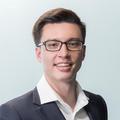 Paul Nettleton
Senior Design Engineer, Ramboll
 |
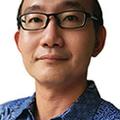 Seng Keat Ooi
Senior Lecturer - Civil and Environmental Engineering and Head - Ecological Monitoring, Informatics and Dynamics group, National University of Singapore
 |
 Abhishek Saha
Senior Data Scientist, Hydroinformatics Institute
 |
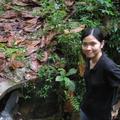 Huong Trinh
Research Fellow, National University of Singapore
 |
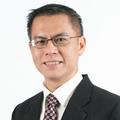 Ho Chai Teck
Deputy Director, PUB, Singapore's National Water Agency
 |
Session 4.4 - Coastal Resilience Through Hybrid Infrastructure: Global Experience
21 June 2024
11:00am - 12:30pm
Room 4, Level 3
Session Chairs: Piert Dircke, Arcadis (Netherlands), Perrine Hamel, National Technological University (Singapore)
Overview of Coastal Resilience Through Hybrid Infrastructure
Jane Smith, U.S. Army Engineer Research and Development Centre (United States)
Presenter is an invited speaker. No executive summary is available.
Redesigning Urban Shorelines for Resilience
Dmitrijs Obolevics, Arup (United States)
Coastal zones are an essential element of the blue economy. Globally they represent the most urbanised and economically productive areas, provide habitat and nursery areas for marine biodiversity, and support important fisheries and aquaculture. However, sea level rise and increased risk of storm surge are threatening the people and economic value of urban coastal areas. Hardening has been the major tool for protecting urban shorelines, but many existing structures are failing and need replacement. They have depauperate ecological communities, reduced nursery areas for fish, are ineffective during storm surges, and limit human interaction with the waterfront. Therefore, there is an urgent need for innovative replacements to protect the urban edge, support biodiversity, and elevate human experience. The main goal of the Urban Shorelines project is to design a new type of infrastructure to better protect urban shorelines while simultaneously enhancing local biological communities and human engagement with the coastline. The team connects natural and social sciences, engineering, and architectural design with local users, stakeholders, regulatory agencies, and industry through a convergence framework. The designs will deliver a novel coastal model capable of increasing well-being for people, ocean edges, and shoreline species, boost disaster risk reduction, and increase ecosystem and urban services. This new model of interconnected benefits will represent a benchmark approach for future research on the development and application of shoreline infrastructure.
From Ecosystems to Impact: Embracing Nature-Based Solutions for a Sustainable Future
Steven Weisscher, Witteveen+BOS (Netherlands)
Coastal ecosystems are natural defence systems that protect the hinterland from coastal change. However, many coastal ecosystems have deteriorated over time due to human pressures and climatic change and may no longer offer adequate protection. Conventional hard-infrastructure solutions are often expensive and only little adaptive to (relative) sea-level rise, making them ineffective and unsustainable in light of climate change and land subsidence. Therefore, new solutions for coastal protection are sought that embrace natural processes and can adapt to climate change: nature-based solutions (NBS). We propose a three-step approach to derive site-specific, successful NBS: system understanding, system valuation and solution development. Exemplary field labs and larger-scale projects showed this method contributes to successful restoration of seagrass, mangroves, coral reefs and horizontal levees, even in low-cost and low-tech settings. These ecosystems enhance coastal defence and improve water quality, biodiversity and socio-economics, making the coastal zone more resilient to climate change.
The Importance of Integrating Lessons Learned on Management, Maintenance and Operations of Storm Surge Barriers
Marc Walraven, Rijkswaterstaat Ministry of Infrastructure and Water Management (Netherlands)
Storm surge barriers are increasingly becoming a major component part of flood risk management solutions worldwide. This paper and presentation seeks to form conceptual guidelines for those looking to design new barriers to ensure they take account of the learning from those existing barriers which have been in operation for decades. The maintenance and management challenge of existing barriers will only increase with climate change as it looks to increase operations resulting in reduced time for maintenance. We need to start thinking differently now for existing barriers and make sure this thinking is incorporated now into any future designs.
Speakers
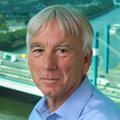 Piet Dircke
Global Director Climate Adaptation, Arcadis
 |
 Perrine Hamel
Principal Investigator, Earth Observatory of Singapore and Assistant Professor, Nanyang Technological University
 |
 Dmitrijs Obolevics
Senior Water Engineer, Arup
 |
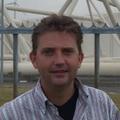 Marc Walraven
Senior Advisor - Storm Surge Barriers, Ministry of Infrastructure and Water Management Rijkswaterstaat
 |
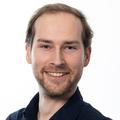 Steven Weisscher
Marine Ecologist, Witteveen+BOS
 |
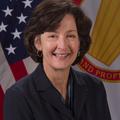 Jane Smith
Army Senior Research Scientist for Hydrodynamic Phenomenon, U.S. Army Engineer Research and Development Centre
 |
Session 4.5 - Coastal Resilience Through Hybrid Infrastructure: Singapore Experience
21 June 2024
2:00pm - 3:30pm
Room 4, Level 3
Session Chairs: Hazel Khoo, PUB, Singapore's National Water Agency (Singapore), Eva Castro, SUTD (Singapore)
Adaptation of Urban Coastal Cities to Climate Change
Zi Qian Yang, Delta Marine Consultants (Singapore)
Towards the urbanization of coastal cities, the challenges of coastal adaptation are amplified. Climate change and sea level rise, coupled with land-use intensification and development expansion, are exacerbating the cities’ vulnerabilities to coastal hazards. Delta Marine Consultants (DMC) has developed a modularized coastal protection system, XblocPlus, to provide better utilization of waterfront land, flexible incremental enhancement, and reduced disruption to existing measures. Under the PUB Global Innovation Challenge (GIC) on Innovative Solutions for Coastal Protection Measures, DMC has been commissioned to conduct a Proof-of-Concept study to optimise XblocPlus for effective and suitable application for Singapore’s coast. Design concepts for application at various shorelines are illustrated, including hybrid infrastructure integrating green, blue, and grey features. Under the GIC, physical model tests are conducted to validate the effectiveness of such engineered structures. Specifically, the structure stability is assessed with damaged armor to determine its failure behavior. XblocPlus remains stable up to the highest tested overload at 160% of the design wave height, guaranteeing the functioning of the structure during exceedance of design storm events. Even with artificial large-scale damage, XblocPlus shows long and gradual damage progression. The feasibility and applicability of XblocPlus armor are demonstrated in achieving resilient coastal protection with additional benefits.
An Assessment of Coastal Protection Effectiveness with Soft Structures
Zhengyu Hu, National University of Singapore (Singapore)
Soft coastal structures aim to balance protection needs with ecological considerations, which can offer adaptability to changing environmental conditions and provide long-term resilience to coastal communities. However, their effectiveness relies on wave reduction performance and proper design. In this study, we aim to evaluate the protection effectiveness and provide optimisation designs for an elastic steep-fronted coastal structure in periodic waves. A fully-coupled computational fluid dynamics (CFD) and computational solid mechanics (CSM) model is used to investigate the hydrodynamic characteristics and structural responses. We find that the wave reflection, run-up, and loading decrease as the structure becomes more flexible. The stress increases with the decreased ratio of the wave frequency to the structural natural frequency. Based on these findings, a preliminary design optimisation is conducted by considering both the coastal protection and the structural integrity. This study will offer a better insight into the coastal protection effectiveness with soft structures.
Restoring Mangroves for Greater Coastal Resilience
Ash Welch, AECOM (Singapore)
Many are aware of the benefits that mangroves and mangrove restoration provide, including those associated with coastal resilience. However, ensuring mangrove trees establish and survive to maturity in order to provide a healthy, dynamic ecosystem that is highly resilient is not guaranteed and many mangrove restoration projects fail just after a few years. AECOM has undertaken a range of mangrove restoration projects, both in rural and urban contexts; each context has its own set of environmental conditions that must be understood to ensure establishment and natural coastal resilience. These approaches draw from scientific research and required engineers, hydrologists, landscape architects and ecologists to work holistically to ensure a design that would protect the coastline in the long-term. The session outlines the approaches and differences in approaches between rural and urban landscapes in both Singapore and Hong Kong, with a focus on the Tung Chung Eco-Shoreline Development in Hong Kong.
A Hybrid Eco-Engineering Solution at Kranji Coastal Nature Park for Coastal Protection and Mangrove Restoration
Jonathan Tan Yong How, National Parks Board (Singapore)
Kranji Coastal Nature Park (KCNP) is a buffer park for Sungei Buloh Wetland Reserve, Singapore’s only mangrove nature reserve. From 2016-2018, NParks undertook a project to arrest erosion along a 400m stretch of shoreline in KCNP. The mangroves on site were retained, while the eroded high shore behind was backfilled with soil and armoured with a gently sloping, ungrouted rock revetment to attenuate waves and promote sediment accretion. Coastal tree species were planted on the high shore above the revetment to restore the natural zonation from terrestrial rainforest to coastal forest to mangrove, creating additional natural habitat and buffering inland areas against wave run-up during storm surges and as sea levels rise. Erosion has ceased and surveys show rapid regeneration of naturally recruited mangrove saplings growing amongst the rocks of the revetment. This suggests that such hybrid eco-engineering nature-based solutions can be effective in both coastal protection and habitat restoration.
Speakers
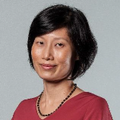 Hazel Khoo
Director, Coastal Protection Department, PUB, Singapore's National Water Agency
 |
 Eva Castro
Professor of Practice, Architecture and Sustainable Design, SUTD
 |
 Zi Qian Yang
Managing Director, Delta Marine Consultants
 |
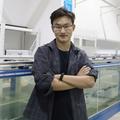 Zhengyu Hu
PhD candidate, Department of Civil and Environmental Engineering, National University of Singapore
 |
 Ash Welch
Biodiversity Lead, Singapore and Nature Positive Lead, Asia, AECOM
 |
 Jonathan Tan Yong How
Senior Manager - Conservation, National Parks Board
 |
Session 4.6 - Building Resilience for Small Island Developing States
20 June 2024
4:30pm - 6:00pm
Room 7, Level 3
Moderators: Bronwyn Powell, ADB Pacific WASH TA (Australia), Yang Villa, International Water Association YWP Philippines (Philippines)
Challenge 1: Tuvalu Coastal Protection & Solar Powered Desalination
As a water-scarce atoll nation, rainwater is Tuvalu’s main source of water. During periods of prolonged drought, desalinated water is the only reliable option, but it is costly and energy intensive to produce.
This session will discuss the potential of solar-powered desalination as a game changer for Tuvalu. Additionally, with rising sea levels causing unprecedented coastal inundation and flooding, the need for effective coastal protection has never been more urgent. Join us to learn about innovative solutions and strategies to secure Tuvalu's water supply and safeguard its coastlines.
Panellists:
- Pepetua Latasi, Tuvalu Department of Climate Change and Disaster
- Gustavo Saltiel, Global Lead for Water Supply and Sanitation, World Bank
- Rizma Rasheed, Project Manager, UNDP Maldives
- Sherub Phuntsho, Associate Professor, University of Technology Sydney
- Edgar Morbos, Senior Parternship Account Manager, Water.org
Challenge 2: Designing Resilient Water Supply Solutions for Atolls
78% of Suva residents rely on septic tanks to treat sewage, resulting in contaminated local environments and poorly managed faecal sludge. Rapid urbanization has created large informal settlements lacking proper sewage treatment systems. With no proactive faecal sludge management, regulation, or infrastructure in place, the need for a national strategy is urgent.
This session will explore policy development, infrastructure solutions, and community engagement to ensure safe and sustainable faecal sludge management. Addressing the sanitation crisis in Suva requires a coordinated effort to develop and implement a national strategy that includes policy reform, infrastructure development, and community engagement. This approach will ensure the safe management of faecal sludge and the protection of the local environment.
Panellists:
- Sylvia Wilson, Project Manager, Water Authority of Fiji
- Josaia Koroilavesau, Manager Strategic, Asset Planning, WAF
- Tony Wong, Distinguished Professor of Sustainable Development, Monash Univeristy
- Azuan Ahmad Zahdi, Head of Corporate Planning, Indah Water Konsortium
- Srinivas Chary, Centre Director, Administrative Staff College of India
- Allison Woodruff, Principal Water Security, Specialist, ADB
Speakers
 Prof. Tony Wong
Director, Tony Wong Consulting and Distinguished Professor of Sustainable Development, Monash Univeristy
 |
 Yang Villa
Co-founder, IWA YWP chapter in the Philippines, International Water Association (Philippines)
 |
 Azuan Ahmad Zahdi
Head of Corporate Planning, Indah Water Konsortium Sdn Bhd
 |
 Dr. Gustavo Saltiel
Global Lead for Water Supply and Sanitation, The World Bank, USA
 |
 Allison Woodruff
Principal Water Security Specialist Sectors Group (SG), Asian Development Bank
 |
 Bronwyn Powell
Team Leader and WASH Advisor, Pacific WASH Technical Assistance, Asian Development Bank (ADB)
 |
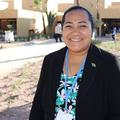 Pepetua Latasi
Director for Climate Change and Disaster Coordinator, Tuvalu Department of Climate Change and Disaster, Office of the Prime Minister
 |
 Rizma Rasheed
Project Manager, UNDP Maldives
 |
 Sherub Phuntsho
Associate Professor, University of Technology Sydney
 |
 Edgar Morbos
Senior Parternship Account Manager, Water.org
 |
 Sylvia Wilson
Project Manager, Water Authority of Fiji
 |
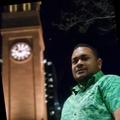 Josaia Koroilavesau
Manager Strategic, Asset Planning, WAF
 |
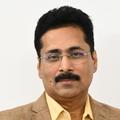 Srinivas Chary
Centre Director, Administrative Staff College of India
 |
Session 5.1 - Global Climate Change, Water Quality and Health
20 June 2024
09:00am - 10:30am
Room 4, Level 3
Session Chairs: Robert Bos, Independent Consultant (Switzerland), Shin Giek Goh, National University of Singapore, (Singapore)
Managing Water Quality for Health Under a Changing Climate. Are We Collecting the Right Data?
Katrina Charles, Oxford University (United Kingdom)
Water quality concerns are rapidly increasing, with new concerns regularly highlighted through the media, increasing information on risks, and key events threatened such as the Olympics. These water quality threats to health and wellbeing are amplified when coupled with the intensification of the water cycle associated with climate change. This presents both a significant threat, with increasing fresh water scarcity, and an opportunity due to the awareness of this challenge and increasing amount of information available. For water supply services, the impact of climate change is often measured in terms of access to services, while changing levels of services are affecting a much wider population with significant health consequences. The quality of water for drinking, healthcare use and washing is changing, often in ways that are not perceptible to users. These changes need appropriate monitoring to track the influence of (extreme) weather-related. This presentation will explore the water quality data collected in different settings and consider how it can help inform climate resilience in water systems, addressing the question - are we measuring the right things, at the right time and making the best use of that data? And exploring the innovations that are helping to ensure our data collection is helping to build climate resilience.
Climate Change, Drinking Water and Health – An Australian Perspective
Paul Byleveld, New South Wales Ministry of Health (Australia)
Between 2016 and 2022, the Australian state of New South Wales experienced drought, widespread bushfires (wildfires), and heavy rain and flooding. Climate change contributed to the intensity of these events and increased their impact on public drinking water supplies. The recent experience in Australia highlights the range of climate-related challenges that water utilities and communities can expect in the future. A comprehensive drinking water management system, based on the Australian Drinking Water Guidelines, can help water utilities prepare and respond. A coordinated approach by water utilities, governments and communities will be required to address the coming challenges.
Aquatic System Understanding for Designing Floating Solar
Steven Weisscher, Witteveen+BOS (Netherlands)
Floating solar attends to the need for renewable energy whilst minimising carbon emissions, mitigating land-use conflicts and preserving terrestrial ecosystems. Yet, the introduction of artificial structures on water provides opportunities and challenges for the ecological water quality. Therefore, this study advocates for a sound aquatic system understanding to determine and act on foreseen interactions with the environment to benefit water quality. To achieve this, we propose the combined use of numerical modelling (D-Water Quality, PCLake), field visits and ecosystem understanding. A fictive case correlates floating solar to reduced local primary production, moderation of water temperature, increased sediment deposition and, sometimes, anoxia. Hence, floating solar appears more advantageous for water with a strong economic function (e.g. dredging, sand-mining), which exhibits fewer drawbacks from floating solar than water with strong ecological, societal and recreational functions. Understanding of cumulative effects of floating solar on water quality is essential to determine project-specific design.
Incorporating Climate Change Considerations into Water Safety Planning
Jennifer De France, World Health Organisation (France)
Presenter is an invited speaker. No executive summary is available.
Speakers
 Robert Bos
Independent Consultant
 |
 Shin Giek Goh
Postdoctoral Research Fellow, National University of Singapore
 |
 Paul Byleveld
Manager Water Unit, Environmental Health Branch, Health Protection NSW, New South Wales Ministry of Health
 |
 Steven Weisscher
Marine Ecologist, Witteveen+BOS
 |
 Prof. Katrina Charles
Professor of Environmental Health Risks, Oxford University
 |
 Jennifer De France
Team Leader, Drinking-water Safety and Quality, World Health Organisation
 |
Session 5.2 - Water Quality Related to Agriculture and Food Safety
20 June 2024
11:00am - 12:30pm
Room 5, Level 3
Session Chairs: Fiona Waller, Affinity Water (United Kingdom), Gin Yew-Hoong, National University of Singapore (Singapore)
FDA's Research on Agricultural Water Quality, Leafy Greens, Food Safety and Health
Steven M. Musser., US Food and Drug Administration (United States)
Whole-genome sequencing (WGS) approaches have been broadly used in food safety to characterize foodborne pathogens, and the United States Food and Drug Administration (FDA) has been applying WGS in responding to and preventing foodborne outbreaks since 2011. FDA is proud to have supported the development of pathogen sharing through its GenomeTrakr network that with other partners has contributed more than 1.2 million pathogen genomes to the public database house at NCBI (National Center for Biotechnology Information) Pathogen Detection (https://www.ncbi.nlm.nih.gov/pathogens/). Additional applications of this WGS data in food safety include source tracking, determining the root cause of a contamination event (e.g., transient versus resident pathogen), virulence and pathogenicity profiling, antimicrobial resistance monitoring, quality assurance of microbial testing, and its use within metagenomic studies. With over a decade of data and knowledge gained it has become clear that water is a large source of foodborne contamination, and thus a major point of interest for FDA in making the food supply safer. Surface water is prone to bacterial contamination and from a One Health perspective, surface water functions as key environmental integrators between humans, animals, agriculture, and the environment. Implementation of a global surveillance network is critical for food safety and promoting the One Health Initiative. Data from one region or commodity is improved when it is linked to and analysed with data from around the world and from different food commodities, environments, or One Health sectors. This keynote will showcase the importance of water sampling and analysis methods in a wide variety of environmental settings in which water impacts human health through food. Furthermore, the collection of environmental data (e.g. pathogen genomes and corresponding metadata) from river catchments and soil is key to better understanding how pathogens live, interact, and are transmitted from one environment to another – especially when linked to clinical information. The ultimate goal is to enable stakeholders across the One Health Sphere to better understand and have access to foodborne pathogen data in their environment so that they can respond to outbreaks and prevent contamination from occurring.
Salmonella in surface waters in Latin America – Health Hazards and Risks
Magaly Toro, JIFSAN, University of Chile (Chile)
Whole-genome sequencing (WGS) approaches have been broadly used in Food Safety to characterize foodborne pathogens. FDA established the GenomeTrakr network in 2013 to build a global, One Health WGS database where foodborne pathogens are rapidly characterized and linked to closely-related food and environmental isolates to investigate and respond to outbreaks. in that time it has become clear that water is a large source of contamination events. Thus, FDA and JIFSAN engaged international academic partners in Brazil, Chile, and Mexico to isolate and sequence Salmonella enterica from surface waters. Over 5,000 samples were collected and more than 4,000 sequenced. These projects, which are continually generating more data, allow us to better understand how foodborne pathogens move throughout the One Health spectrum, particularly water. With this better understanding, better preventive control strategies can be undertaken to reduce contamination caused by water, and thus reduce foodborne illness and improve overall food safety.
Economics of WGS and Environmental Sampling: A Pilot Study
Julie Haendiges, US Food and Drug Administration (United States)
Whole Genome Sequencing (WGS) has been broadly accepted as the new standard in Food Safety to characterise foodborne pathogens. This technology has been primarily employed in outbreak response and linking food and environmental isolates with clinical illnesses. The idea of a One Health approach has broadened the scope for pathogen surveillance and characterisation. To ensure global food safety, the number of isolates sequenced must increase but the economic burden of this technology must also be addressed. A partnership between FDA and MMAF provided the basis to conduct a pilot study in determining the economic feasibility of WGS and the use of alternative sequencing equipment to provide quality data for enhanced surveillance of pathogens in Indonesia water. The results from this study can be applied to implementing WGS technology in other countries with resource or infrastructure limitations.
At the Intersection of Water and Food Safety: Environmental Sampling Projects Using WGS in the Context of a One Health Approach to Improve Food Safety
Eric Stevens, US Food and Drug Administration (United States)
Whole Genome Sequencing (WGS) has been broadly accepted as the new standard in Food Safety to characterise foodborne pathogens. This technology has been primary employed in outbreak response and linking food and environmental isolates together with clinical illnesses to better respond and prevent foodborne diseases. The idea of a One Health approach has broadened the scope for pathogen surveillance and characterization, and it is becoming clear that water is a large source of foodborne contamination events. This symposium brings together three separate talks outlining water sampling projects conducted by FDA/JIFSAN, FDA/MMAF, and FAO in Latin America, the United States, Africa, and Indonesia to better understand the relationship between foodborne pathogens in water and how they contaminate food. With this better understanding, better preventive control strategies can be undertaken to reduce contamination caused by water, and thus reduce foodborne illness and improve overall food safety.
Whole Genome Sequencing of Pathogens and 16S Amplicon Sequencing in Integrated Chicken-Fish Farms in Indonesia
Sugiyono Saputra, National Research and Innovation Agency (Indonesia)
Integrated chicken-fish farms are predicted to have a higher risk of disseminaVon of pathogens and mulVdrug resistant bacteria to the environment due to waterflow from fishponds that may contaminate the surrounding environment, including fish ponds, river, soil and agricultural land. This study aimed to observe the chicken-fish farms management system, including assessment of anVbioVc residues in animal meats and the use of next-generaVon sequencing (NGS) to ulVmately assess disseminaVon of mulVdrug resistant (MDR) bacteria from several integrated chicken-fish farms. Several pathogens were observed in all samples, including Campylobacter, Legionella, Salmonella, Vibrio, and Yersinia although in very low proporVon and notably, Legionella predominantly found in fish ponds while Salmonella in soil. AnVbioVc resistance genes are observed abundantly in gut samples but decrease in environmental samples. Whole genome of MDR bacteria reveals that bacteria contains several fragments, indicaVng possibility of horizontal transfer of plasmid carrying resistance genes from different species.
Speakers
 Fiona Waller
Head of Water Quality, Affinity Water
 |
 Gin Yew-Hoong
Professor, National University of Singapore
 |
 Steven M. Musser
Deputy Center Director - Scientific Operations, US Food and Drug Administration
 |
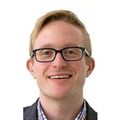 Eric Stevens
International Policy Analyst, Office of the Center Director, Center for Food Safety and Applied Nutrition, US Food and Drug Administration
 |
 Julie Haendiges
Researcher, US Food and Drug Administration
 |
 Sugiyono Saputra
Researcher, National Research and Innovation Agency
 |
 Dr. Magaly Toro
Associate Research Professor - Laboratory Director, JIFSAN, University of Chile
 |
Session 5.3 - Wastewater-based Epidemiological Surveillance (WES) Part 1
20 June 2024
2:30pm - 4:00pm
Room 5, Level 3
Session Chairs: David Cunliffe, SA Health (Australia), Amy Kirby, CDC (United States)
The Future of Wastewater-Based Epidemiological Surveillance: Roadmap for the New Iwa Cluster
Gertjan Medema, KWR Water Research Institute (Netherlands)
Wastewater-based epidemiological surveillance has gone viral in the COVID-19 pandemic, as a relatively unbiased, efficient early warning tool for COVID-19 circulation in the community, as well as the introduction of new variants. In the current transition from epidemic to endemic state, the question is what the place of wastewater surveillance will be in the future. A global cluster of experts is reviewing the lessons learned from wastewater surveillance in the pandemic, the state-of-science and public health use cases, as well as the governance of surveillance programs to suggest future directions for wastewater surveillance. Key recommendations are to consolidate and harmonise current wastewater surveillance for COVID-19 and polio, add other respiratory and enteric pathogens, antimicrobial resistance, as well as (illicit) drugs, expand wastewater surveillance to countries and communities with limited health surveillance, and create a global observatory in major cities and transport hubs.
Wastewater-Based Epidemiology in Wales - From Covid-19 to One Health
Bhavik Barochia, Arup (United Kingdom)
Wastewater-Based Epidemiology (WBE) has become a pivotal tool in public health surveillance, offering timely insights into pathogens, chemicals, and pharmaceuticals within communities. By monitoring these contaminants from human, animal, and environmental sources, WBE aligns with the "One Health" approach that interconnects human, animal, and environmental health. Established during the COVID-19 pandemic, the Welsh National Wastewater Monitoring Program used WBE to detect the virus in wastewater, giving early outbreak warnings even before patients displayed symptoms. The program, backed by multiple stakeholders including universities and governmental bodies, expanded its scope beyond the pandemic to monitor One Health markers, other infectious diseases, antimicrobial resistance genes, and the environment. Sampling from 47 wastewater-treatment works over two years, the data collected validated the reliability of WBE insights. The findings also traced COVID-19 variant changes, highlighting the Omicron variant's rise. Moreover, by observing antimicrobial resistance genes, the program provided valuable data for health boards and vets on antibiotic-resistant bacteria, guiding better medicinal practices. This Welsh initiative underscores the potential of wastewater as a data-rich resource in proactively enabling environmental monitoring and tackling One Health threats in our interconnected ecosystem.
Towards a Regional Framework for Wastewater-Based Epidemiology
Tomoko Takeda, The University of Tokyo (Japan)
Applicability of wastewater-based epidemiology to the Asian Region was explored from the onset of the COVID-19 pandemic. Wastewater and environmental water samples were analysed for SARS-CoV-2 RNA as an indicator of the prevalence of COVID-19. In this presentation, we will introduce recent findings from around the region, discuss key successes and challenges, and propose next steps to support the decision-making process in preparation for future pandemics.
Low-Cost Virus Concentration Method for Wastewater-Based Epidemiology
Vu Duc Canh, Tokyo University (Japan)
Low-cost and efficient virus concentration methods play a crucial role in wastewater-based epidemiology. However, the current methods are often expensive, complicated, and time-consuming. This study aimed to develope a cost-effective, straightforward technique using Moringa oleifera (MO) seed extract (MO method) to recover both enveloped and non-enveloped viruses like pepper mild mottle virus (PMMoV), murine norovirus (MNV), Aichivirus (AiV), murine hepatitis virus (MHV), and influenza A virus subtype H1N1 (H1N1) in wastewater. Optimal MO method conditions were identified: MO extract concentration at UV280 value of 0.308 cm-1 and elution buffer (0.05M KH2PO4, 1M NaCl, 0.1% Tween80 [v/v]). Compared to InnovaPrep, HA, PEG, and Centricon, the MO method proved more efficient and cost-effective for virus recovery. Additionally, the MO method successfully detected various viruses (PMMoV, AiV, NoV II, EV, influenza A virus, and SARS-CoV-2) in raw wastewater. Thus, the MO method offers a simple, low-cost, and efficient tool for virus concentration in wastewater.
Speakers
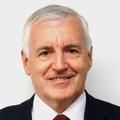 David Cunliffe
Principal Water Quality Advisor, South Australia Health
 |
 Amy Kirby
Senior Service Fellow, CDC
 |
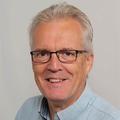 Gertjan Medema
Principal Microbiologist, KWR Water Research Institute & Part-Time Chair in Water & Health, Delft University of Technology (Sanitary Engineering)
 |
 Bhavik Barochia
Digital Water Consultant, Arup
 |
 Tomoko Takeda
Associate Researcher, The University of Tokyo
 |
 Vu Duc Canh
Water Environment Technology Laboratory, University of Tokyo
 |
Session 5.4 – Wastewater-based Epidemiological Surveillance (WES) Part 2
20 June 2024
4:30pm - 6:00pm
Room 5, Level 3
Session Chairs: Regina Sommer, Medical University of Vienna (Austria), Gertjan Medema, KWR Water Research Institute (Netherlands)
Strengthening National Public Health Preparedness with Wastewater Surveillance
Amy Kirby, CDC (United States)
In 2020, CDC established the National Wastewater Surveillance System (NWSS) to provide data on trends in SARS-CoV-2 infections in communities. Since 2020, the system has been expanded into a multi-pathogen surveillance platform, monitoring trends in SARS-CoV-2 and variants, mpox virus, influenza A, influenza B, and respiratory syncytial virus. Additional pathogens are in evaluation for full implementation. By collaborating with academic and utility partners, NWSS has been able to rapidly implement new assays, serving as a flexible and nimble surveillance resource to address changing public health needs. This rapid response is only possible with strong pre-existing relationships between public health agencies and wastewater utilities. Using case studies from NWSS, this presentation will share lessons learned and best practices to establish wastewater surveillance as a core platform for national infectious disease preparedness.
Monitoring the Spread of Norovirus GI and GII through Wastewater-Based Epidemiology in the Absence of Clinical Data during COVID-19 pandemic
Jatuwat Sangsanont, Chulalongkorn University (Thailand)
This research explored the prevalence and seasonal variation of norovirus GI and GII in Thailand through wastewater-based epidemiology, especially during the COVID-19 pandemic when clinical data were scarce. The influent samples were collected from wastewater treatment plants in Bangkok and underwent virus concentration, RNA extraction, and RT-qPCR for norovirus GI and GII analysis. The correlation between norovirus clinical cases and the prevalence of norovirus in wastewater was examined. Our findings revealed a distinct seasonal trend in norovirus prevalence, even in a tropical climate, peaking during the winter, and highlighted a prevalence of norovirus GI over GII. The scarcity of clinical data during the study period emphasized the essential role of WBE in tracing disease prevalence and informing public health strategies. Our research underscores the invaluable insights WBE can provide in understanding infectious diseases’ dynamics, particularly when conventional clinical data are scarce, demonstrating its applicability in diverse climatic scenarios.
Co-Incidence of BA.1 and BA.2 At The Start of Singapore’s Omicron Wave Revealed by Community and University Campus Wastewater Surveillance
Desmond Chua, SCELSE NTU (Singapore)
Wastewater surveillance (WWS) has been globally recognised to be a useful tool in quantifying SARS-CoV-2 RNA at the community and residential levels without biases associated with case-reporting. The emergence of variants of concern (VOCs) have given rise to an unprecedented number of infections even though populations are increasingly vaccinated. This is because VOCs have been reported to possess higher transmissibility and can evade host immune responses. The B.1.1.529 lineage (Omicron) has severely disrupted global plans to return to normalcy.
In this study, we developed an allele-specific (AS) RT-qPCR assay which simultaneously targets the stretch of deletions and mutations in the spike protein from position 24-27 for quantitative detection of Omicron BA.2. Together with previous assays that detect mutations associated with Omicron BA.1 (deletion at position 69 and 70) and all Omicron (mutation at position 493 and 498), we report the validation and time series of these assays from September 2021 to May 2022 using influent samples from two wastewater treatment plants and across four University campus sites in Singapore. Viral RNA concentrations at the treatment plants corroborate with locally reported clinical cases, AS RT-qPCR assays revealed co-incidence of Omicron BA.1 and BA.2 on 12 January 2022, almost two months after initial BA.1 detection in South Africa and Botswana. BA.2 became the dominant variant by the end of January 2022 and completely displaced BA.1 by mid-March 2022. University campus sites were similarly positive for BA.1 and/or BA.2 in the same week as first detection at the treatment plants, where BA.2 became rapidly established as the dominant lineage within three weeks.
These results corroborate clinical incidence of the Omicron lineages in Singapore and indicate minimal silent circulation prior to January 2022. The subsequent simultaneous spread of both variant lineages followed strategic relaxation of safe management measures upon meeting nationwide vaccination goals.
Understanding SARS-Cov-2 VOC Transition Dynamics Using Wastewater Monitoring
Nishita D’Souza, Michigan State University (United States)
The decline of clinical testing and reporting of COVID-19 cases has posed challenges to public health agencies in monitoring communitywide disease spread. Wastewater surveillance is shown to be a widely accepted monitoring strategy to complement clinical investigations and can be used to provide information on new and emerging viral variants of concern (VOCs) by monitoring the bio health of communities. This study describes the utility of ddPCR targeted mutational analysis for monitoring VOCs through wastewater and understanding their temporal transition dynamics. The monitoring tracked the rise and fall of VOCs Alpha, Beta, Gamma, Delta, Delta Plus, Epsilon and Omicron subvariants, BA.1, BA.2, BA.4, BA.5, BQ.1 and XBB on a university campus and in the surrounding community between 2021 and 2023. Real time monitoring of VOCs through targeting mutation analysis has proved to be a rapid, sensitive and cost-efficient tool to study the transition dynamics of VOCs and inform public health.
Tracking The Impact of the Covid-19 Pandemic on Other Viral Diseases Through Wastewater-Based Retrospective Epidemiological Surveillance
Masaaki Kitajima, Hokkaido University (Japan)
A wastewater-based epidemiology (WBE) study in Sapporo, Japan, aimed to assess the influence of the COVID-19 pandemic on respiratory and gastroenteritis viruses. Before April 2020, concentrations of respiratory viruses like influenza A (IAV) and respiratory syncytial virus (RSV) in wastewater correlated with clinical cases, but they significantly decreased after the pandemic's onset. Regarding gastroenteritis viruses, including norovirus (NoV), sapovirus (SaV), and group A rotavirus (ARoV), WBE showed a substantial decline in SaV and ARoV detection ratios post-May 2020, along with a significant drop in NoV GII concentrations. These findings highlight that COVID-19 preventive measures may exert virus-type-specific impacts on respiratory and gastroenteritis viruses, demonstrating the potential broader benefits of pandemic control measures for infectious diseases. The present study underscores the practical utility of WBE and wastewater banking as effective tools for enhancing the management of respiratory viral diseases. Furthermore, the WBE findings shed light on the significant influence of COVID-19 countermeasures on the circulation of gastroenteritis viruses, revealing varying degrees of impact across different virus types. These epidemiological insights emphasize that the hygiene measures implemented to combat COVID-19 infections can also prove effective in curbing the prevalence of gastroenteritis viruses. Such revelations offer invaluable guidance for public health authorities and the development of robust disease management guidelines.
Speakers
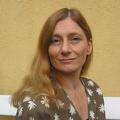 Regina Sommer
Associate Professor, Medical University of Vienna
 |
 Amy Kirby
Senior Service Fellow, CDC
 |
 Gertjan Medema
Principal Microbiologist, KWR Water Research Institute & Part-Time Chair in Water & Health, Delft University of Technology (Sanitary Engineering)
 |
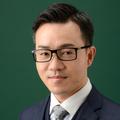 Masaaki Kitajima
Project Professor, The University of Tokyo
 |
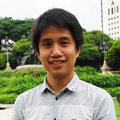 Jatuwat Sangsanont
Academic Staff, Chulalongkorn University
 |
 Desmond Chua
Research Fellow, SCELSE, Nanyang Technological University
 |
 Nishita D’Souza
Research Assistant Professor, Michigan State University
 |
Session 5.5 - Emerging Approaches for Water Quality Monitoring and Management
21 June 2024
09:00am - 10:30am
Room 5, Level 3
Session Chairs: Fiona Waller, Affinity Water (United Kingdom) and Jerome Kok, NUS College (Singapore)
Exploring the Great Unknown: New Tools to Assess Complex Environmental Mixtures
Shane Snyder, Georgia University of Technologies (United States)
Pollution never occurs as a few or even several discrete substances within the environment. Conversely, environmental contaminants occur within extremely complex mixtures of anthropogenic and endogenous substances. Monitoring programmes often focus on a limited subset of contaminants based on previously reported or known propensity for occurrence and/or harm. However, many pollutants are not identified and realised until damage has already occurred. Synthetic chemicals were not part of the human experience until the late 19th century with the accidental discovery of the synthetic dye, mauve. Today, more than 65 million chemicals are commercially available, many of which enter the environment either knowingly or unknowingly.
From a water exposure standpoint, not only are the chemicals themselves a potential risk, but also the innumerable transformation products formed during water treatment processes. Historically, analytical techniques to measure trace levels of environmental pollutants were time-consuming, labour-intensive, and technically sophisticated. New techniques are rapidly evolving to measure ultra-trace levels of chemicals with automated and/or minimum sample preparation and detection by tandem and/or high-resolution mass spectrometry. Monitoring indicator compounds that provide specific information regarding watershed contamination and treatment process efficacy by high-resolution quadrupole mass spectrometry (QTOF) coupled to both GC and LC interfaces provides both targeted analytic information while simultaneously acquiring full mass spectra that allows a more comprehensive view of the complex chemical mixtures and resulting transformation products in water. Coupled with high-throughput bioassays, these techniques provide a new view as to the complex mixtures occurring in the environment and their potential impacts to health.
Recently, high performance analytical platforms are coupled with advanced genomics tools which can even encompass pathogen monitoring in environmental samples, such as monitoring of the SARS-CoV-2 virus in municipal sewer systems, which can be normalized to chemical markers to provide a wide-population level evaluation of virus occurrence and transmission. Another recent discovery is that vulcanization agents which leach from tires are among the most toxic substances ever evaluated on salmonid fish. In our work, we chlorinate one of the common vulcanization substances known to occur in surface waters, and demonstrate that the resulting chlorination byproducts are more toxic than the parent compound, as evaluated through several in vitro methods. This presentation will demonstrate some of the latest findings and provide a view for the future of addressing the unknown world of chemical and biological mixtures in the environment.
Using Natural Virus Markers to Safeguard the Integrity of Membrane Treatment Plants
Emile Cornelissen, KWR Water Research Institute (Netherlands)
Water reuse is a crucial development to mitigate increasing global water stress. Membrane filtration systems are increasingly used for the production of high-quality water, also particularly for the reuse of highly contaminated water sources (e.g. wastewater or effluent). A lack of an essential membrane integrity method for virus removal resulted into the development of a new natural virus (NV) method, which is based on indigenously present virus markers in water sources. This novel NV method is used to regularly monitor four full scale drinking water treatment plants, including micro- and ultrafiltration (MF/UF) and reverse osmosis (RO) membranes. Furthermore, on pilot scale deliberately induced membrane damage to membranes was investigated to determine the effect on virus rejection. The successful NV method will leverage the implementation of water treatment processes, like membrane based treatments, for global requirements like drinking and irrigation water production, water reuse, and contribute directly to SDG6.
Integrated Closed Loop Health & Environment Surveillance
Rutwik Shah, Hydrolabs Pvt Ltd (India)
Hydrolabs ran an integrated early warning system for disease & environmental surveillance in a closed loop system with one of the largest townships in India. Monitoring Air, Water, Sewage, testing for SARS COV-2 in sewage and monitoring vector borne viruses - Dengue, Cholera, Malaria. Addressing the problem through proactive health inspection, testing & identifying location of high density mosquito larvae growth & setting up mosquito traps. Creating a first of its kind complete one health model across the entire. We further created a real time digital dashboard for all stakeholders to view at a click of a button and take immediate action across the township.
LCA of full-scale ozonation plant for wastewater treatment: case study in the Netherlands
Wilbert Menkveld, Nijhuis Saur Industries (Netherlands)
Many micropollutants are poorly degraded in conventional wastewater treatment plants. This results in negative effects to the receiving water bodies due to chronic exposure at low concentrations. The European Water Framework Directive prioritizes the reduction of these high-risk substances in communitarian waters. This opens an opportunity for investment in deployment and implementation of advanced technologies for the treatment of micropollutants in wastewater. In this paper we share results on removing micropollutants and bromate management for the first ozone solution on a municipal wastewater treatment plant in the Netherlands.
Speakers
 Fiona Waller
Head of Water Quality, Affinity Water
 |
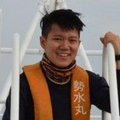 Jerome Kok
University Lecturer, NUS College
 |
 Emile Cornelissen
Senior Researcher, KWR Water Research Institute
 |
 Rutwik Shah
Director, Hydrolabs Pvt Ltd
 |
 Nadine Boelee
Team Leader - Research & Development, Nijhuis Saur Industries
 |
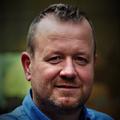 Wilbert Menkveld
Chief Technology Officer, Nijhuis Saur Industries
 |
 Prof. Shane Snyder
Executive Director, Nanyang Environment and Water Research Institute (NEWRI)
 |
Session 5.6 - Communication Between Sectors and to Affected Communities
21 June 2024
11:00am - 12:30pm
Room 5, Level 3
Session Chairs: Ruchika Shiva, IRCWASH (India) and Xuneng Tong, National University of Singapore (Singapore)
Now You See It: Visual Risk Management
Annalisa Contos, Atom Consulting (Australia)
In this complex and rapidly changing environment, effective risk management is essential for water utilities to continue to deliver safe services that meet customer and stakeholder expectations. Risks need not only to be assessed but managed. This paper examines the efficacy of visual tools in enhancing risk communication and understanding. Risk management is integral to water sector activities and enables prioritization of improvements, even in resource-constrained environments. While traditional spreadsheets are commonly used for risk assessment, the paper introduces two visual methods for effective risk communication: Bow-tie diagrams and Sankey diagrams. The paper supports these techniques with three case studies, illustrating the practical applications of both bow-tie and sankey diagrams in the water sector, including water safety planning, project delivery framework improvement, and visualizing interlinks between risks in enterprise risk management systems.
Undertaking Outreach Campaign as a Tool to Achieve 100% Household Sewerage Connection: Case of Dharampuri, India
Priyank Khare, All India Institute of Local Self Government (India)
Poor sanitation in households of many towns in India is not a result of not having access to toilets and proper infrastructure, but is a result of many social stigmas, myths, and misconceptions. This article explains how institutionalising a communications strategy along with the implementation of state government’s objective to improve water-quality of River Narmada helped Dharampuri achieve its status of 100% household sewerage connections.
Spatial distribution and determinants of limited drinking water and sanitation services among households in India: evidence from the National Family Health Survey of India (NFHS-5), 2019-2021
Chandan Roy, Mizoram University (India)
Good health and well-being require improved drinking water and sanitation facilities. Lack of access to drinking water and sanitation facilities poses serious health risks. There are very few studies based on NFHS-5 data in the literature. Therefore, the present study used the fifth round of National Family Health Survey (NFHS-5) data. After excluding missing values or ineligible households, the total sample of 6, 09,130 households. The Stata version 14.1 software was used for statistical analysis, and the Arc Map 10.4 was used for spatial analysis. Further, a hotspots analysis was carried out to identify regions, which are limited access to drinking water and sanitation services in India. A binary logistic regression model was applied to investigate the association between dependent and independent variables. The prevalence of limited drinking water and sanitation facility service levels were higher in Madhya Pradesh (12.28%) and Manipur (22.65%), respectively. Besides, spatial distribution of limited drinking water and sanitation facility were spatially clustered among a few central and western Indian states. In the binary logistic regression model, education, wealth index, and place of residence were significantly associated with limited drinking water and sanitation services. There is regional heterogeneity in drinking water and sanitation services. With this in mind, the study suggest spatially-optimized target-oriented policy measures in unprivileged areas. It is also recommended to improve the water distribution networks and construct sanitation facilities.
Operation and Maintenance of Public Handpumps In Rural Bangladesh: A Mixed Model
Digbijoy Dey, IRC International Water and Sanitation Centre (Bangladesh)
The Department of Public Health Engineering (DPHE) is the responsible line department to provide water services in small towns and rural areas of Bangladesh. This study looked at the process DPHE follows to select, install, and handover water services in rural areas. It was found that DPHE’s effort is mainly limited to the installation of handpumps. Operation and maintenance (O&M), as well as minor and major repairs of the handpumps becomes the responsibility of the users. Rough estimates indicate that DPHE has installed more than 1 million handpumps over the past 30 years. Despite that safe water service delivery remains a challenge in rural areas of Bangladesh. One of the reasons is that there is no post-handover operation and maintenance plan for the handpumps DPHE installs which makes it an “install and forget” model. This paper outlines the lack of clarity in roles and responsibilities in the handover process which results in poor O&M of the DPHE installed handpumps.
Speakers
 Ruchika Shiva
Country Coordinator, IRC WASH
 |
 Xuneng Tong
Research Fellow, National University of Singapore
 |
 Priyank Khare
State Projects Head, All India Institute of Local Self Government
 |
 Annalisa Contos
Principal, Atom Consulting
 |
 Chandan Roy
Research Scholar, Mizoram University
 |
 Digbijoy Dey
Senior Programme Officer, Asia Regional Programme, IRC International Water and Sanitation Centre
 |
Session 5.7 - Antimicrobial Resistance (AMR)
21 June 2024
2:00pm - 3:30pm
Room 5, Level 3
Session Chairs: Hiroyuki Katayama, University of Tokyo (Japan) and Sugiyono Saputra, National Research and Innovation Agency (Indonesia)
What does the Global Antimicrobial Resistance Crisis Mean for the Water Sector?
Erica Donner, CRC SAAFE (Australia)
As the world mobilises to mitigate the complex threat of antimicrobial resistance (AMR), the importance of taking a One Health approach and recognising the interconnectivity of human, animal, plant, and environmental health is increasingly emphasised. This has important implications for the water sector. Water, wastewater, and biosolids are important connectors in the complex web of AMR sources, amplifiers, and receptors, and there is a growing evidence base showing that improvements in water, sanitation, and hygiene management can significantly reduce the critical threat of AMR by limiting its development and spread in the environment and reducing infections and the need for antimicrobials. As a rich source of monitoring data, wastewater also holds important information that can help inform mitigative action by other One Health sectors. This presentation will demonstrate the multifaceted nature of One Health AMR, the challenges in assessing AMR associated risks, and implications for the water sector and customers.
Assessing Antimicrobial Resistance Risks in Effluent of Water Reclamation Treatment Plant
Shin Giek Goh, NUS Environmental Research Institute, NUS (Singapore)
This study addresses the global issue of AMR with key emphasis on the critical environmental perspective, particularly within Singapore’s wastewater management. Despite innovative strategies, wastewater treatment lacks explicit AMR removal measures. Assessments include relative ARG risk and integration of QMRA and DALY, offering policymakers insights into AMR-related health burdens. The data from this study revealed the high concentration of ARG in sludge, highlighting risks in sludge for potential agriculture reuse. Health burden assessments identify ESBL-resistant E. coli as a major concern in wet well discharge. Nevertheless, the ocean’s dilution and decay processes could substantially mitigate the risk. The modern membrane bioreactor (MBR) system improved the treatment, resulting in significantly low risks of AMR in the discharged water. Future efforts in developing a hydrodynamic model to simulate the fate, transport and assess the risk of AMR would enhance our understanding and management of AMR in the environment.
Metagenomic Insights on Microbial Contaminants and Horizontal Gene Transfer of Arg in Aerobic and Anaerobic Membrane Bioreactor
Julie Sanchez, King Abdullah University of Science and Technology (Saudi Arabia)
Two configurations of membrane bioreactor (aerobic and anaerobic) treating the same influent were evaluated in terms of their potential horizontal gene transfer (HGT) events of antibiotic resistance genes (ARG) using metagenomic analysis. A lower prevalence of ARG in the suspended sludge of the aerobic membrane bioreactor was found. In contrast, there was a higher ratio of potential HGT of ARG and HGT involving potential opportunistic pathogens in the aerobic membrane bioreactor (0.27 vs 0.09 in the aerobic and anaerobic treatment respectively). In addition, there is a higher diversity in ARG types for the aerobic MBR (resistance to quinolones, multidrug, macrolides and tetracycline). A significant proportion of these ARG were transferred to Burkhorlderia sp., with mobile genetic elements linked to recombination and phages co-localised with the corresponding recipient contigs. Our findings suggest that the risk of potential horizontal gene transfer to potential pathogens is higher in the AeMBR sludge which is significant given the higher sludge disposal requirement of the aerobic treatment.
Enhanced Hydrolysis Technology to Block Multidrug Resistance Dissemination in Antibiotic Manufacturing Wastewater
Min Yang, Research Center for Eco-Environmental Sciences (RCEES), Chinese Academy of Sciences (China)
During the production of antibiotics, a large amount of wastewater with high concentrations of antibiotic chemical oxygen demand (COD) and residual antibiotics will be produced. We have uncovered that the widely used biological treatment systems, usually a combination of anaerobic digestion and activated sludge processes, are vulnerable to the presence of extremely high concentrations of antibiotics in wastewater effluents from the antibiotic production process (e.g., 800-1,000 mg/L in wastewater effluents from oxytetracycline production). This may lead to the discharge of treated effluents with high concentrations of antibiotics and abundant antibiotic resistant bacteria and ARGs into the receiving rivers. To solve this problem, a pilot system consisting of enhanced hydrolysis pretreatment and an up-flow anaerobic sludge bed (UASB) reactor in succession was constructed for treating wastewater effluent from oxytetracycline production. The performance of this system was evaluated in a pharmaceutical factory and compared with a full-scale anaerobic system operated in parallel. After enhanced hydrolysis under conditions of pH7 and 85oC for 6 hours, wastewater from oxytetracycline production with a COD) of 11,086 ± 602 mg/L was directly introduced into the pilot UASB reactor. With the effective removal of oxytetracycline and its antibacterial potency (from 874 and 900 mg/L to less than 0.61 and 0.84 mg/L, respectively) by the enhanced hydrolysis pretreatment, an average COD removal rate of 83.2%, 78.5% and 68.9% was achieved at an organic loading rate of 3.3, 4.8 and 5.9 kg COD/m3/d, respectively. At the same time, the relative abundances of the total tetracycline (tet) genes and a mobile element (Class 1 integron (intI1)) in anaerobic sludge on day 96 were one order of magnitude lower than those in inoculated sludge on day 0 (P< 0.01). This technology has been successfully applied to the full-scale treatment of wastewater from oxytetracycline production.
Speakers
 Min Yang
Deputy Director, Research Center for Eco-Environmental Sciences, Chinese Academy of Science
 |
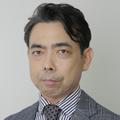 Hiroyuki Katayama
Professor, University of Tokyo
 |
 Shin Giek Goh
Postdoctoral Research Fellow, National University of Singapore
 |
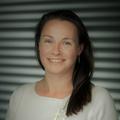 Erica Donner
Research Director, CRC SAAFE
 |
 Julie Melissa Sánchez Medina
Graduate Researcher, King Abdullah University of Science and Technology
 |
 Sugiyono Saputra
Researcher, National Research and Innovation Agency
 |
Session 6.1 - Resource Circularity and Valorization
20 June 2024
09:00am - 10:30am
Room 6, Level 3
Session Chairs: Dragan Savic, KWR Water Research Institute (Netherlands), Aprilia Vellacott, Jacobs (Australia)
Biochar for Battery
Lara Olsen, South East Water (Australia)
This presentation will cover the issues with biosolids management and the opportunities that biochar represent. It will also cover the differing values and a novel production path for biochar.
A Technical Evaluation and Demonstration of Converting Sewage Sludge to Slag and Its Utilization as an Alternative Construction Aggregate in Structural Applications
Liya Ge, Nanyang Technological University (Singapore)
In this project, evaluation and demonstration research works are performed aiming to achieve 100% sludge gasification through a long-term gasification trial to generate sludge-derived slag (SDS) with consistent physical and chemical properties meeting the requirements for its re-utilization. This project will also study the use of SDS as a sand replacement in concrete production for structural applications. in addition, further resource recovery from the by-products generated from the high temperature slagging gasification process such as phosphorus and valuable metals will be attempted. Techno-economic analysis and life cycle assessment (LCA) of the sludge gasification process and slag re-utilization will be performed based on the technical evaluation proposed. With the robust assessments planned, this project aims to reduce at least 80% (by mass) of the sludge and ash residues, as compared to the conventional incineration process, by converting these waste materials into recyclable metals and reusable slag as the NEWSand for Singapore.
Transforming 3D Printing Through Brine Valorization
Noura Chehab, NEOM, Saudi Arabia
Society is increasingly pushing for a transition to a circular economy, including wastewater treatment. in the Netherlands, water authorities are experimenting with resource recovery methods, often focusing on one resource. to maximize investments, long-term planning is essential, considering how new approaches fit into a broader development path. Achieving a true circular wastewater treatment means recovering multiple resources, requiring an understanding of resource synergy and conflicts. Our presentation explores dilemmas, opportunities, and development suggestions in this context.
Moving Toward Multi-Dimensional Resource Recovery from Wastewater
Jouke Boorsma, Aquaminerals (Netherlands)
Society is increasingly pushing for a transition to a circular economy, including wastewater treatment. in the Netherlands, water authorities are experimenting with resource recovery methods, often focusing on one resource. to maximize investments, long-term planning is essential, considering how new approaches fit into a broader development path. Achieving a true circular wastewater treatment means recovering multiple resources, requiring an understanding of resource synergy and conflicts. Our presentation explores dilemmas, opportunities, and development suggestions in this context.
Speakers
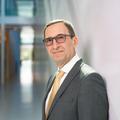 Dr. Dragan Savic
Chief Executive Officer, KWR Water Research Institute
 |
 Aprilia Vellacott
Principal Process Engineer, Jacobs
 |
 Lara Olsen
Managing Director, South East Water
 |
 Noura Chehab
Water Research and Innovation Manager, NEOM
 |
 Liya Ge
Researcher, Nanyang Technological University
 |
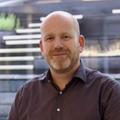 Jouke Boorsma
Business Developer/Manager Projects, AquaMinerals
 |
Session 6.2 - Cross-sectoral Collaboration in the Circular Water Economy
20 June 2024
11:00am - 12:30pm
Room 6, Level 3
Session Chair: Dragan Savic, KWR Water Research Institute (Netherlands) and Chiu Kuang Ping, AECOM (Hong Kong)
Overview of Cross-Sectoral Collaboration in the Circular Water Economy
Yuen Ming Liong, Ministry of Sustainability and the Environment (Singapore)
Presenter is an invited speaker. No executive summary is available.
Net Zero Ready Goulburn Valley Renewable Hydrogen Ecosystem
Sam Skinner, Aurecon (Australia)
In strong alignment with Singapore's Green Plan 2030 (SGP30), this project explored the role of renewable hydrogen in shaping a green and resilient future for the Goulburn Valley region (GVR). Goulburn Valley Water took the first (and most difficult) steps to unlocking the massive potential for renewable hydrogen by engaging with 15 prominent local firms and organisations with a shared goal of rapid decarbonisation accelerating the transition away from fossil energy. The study identified a potential 11,000 tonnes/year demand for renewable hydrogen and abatement of up to 870,000 tCO2-e/year. There are multiple technology transition pathways that were highlighted through the story of Artie the Apple – one of the world’s first net zero apples. GVR has huge potential for development of a renewable hydrogen ecosystem that is focused on building stronger regional resilience, more robust supply chains, future prosperity and accelerating decarbonisation of difficult to abate industries and applications. This economically-vital agro-industrial-manufacturing-transportation region, like Singapore, aspires to move to the forefront of green industry and a net zero emissions future.
Sustainable Irrigation Alliance Tapped
Michael Bissett, Pensar (Australia)
The Wamuran Irrigation Scheme Joint Venture (WIS JV) was conceived in 2019 when Pensar led the concept in collaboration with the region’s two largest growers Pinata Farms and Twin View Turf in response to the local water authority’s requirements from the EOI phase through to the completion of construction in late 2023. Pensar designed and constructed a 22 km pipeline network and pumping infrastructure to deliver approximately 2.6 gigalitres of Class A water per year to the region’s growers. Driven by a customer centric solution, Pensar, Pinata Farms and Twin View Turf worked towards the common goal of creating agricultural water security for the Wamuran region along with supporting the environmental goals and initiatives of the water authority in reaching zero nutrients in the Moreton Bay Region waterways by 2040. The Scheme will provide a year-round water supply enriching the social, economic, and environmental benefits for the Wamuran region.
Circular Water Economy: Lessons Learned From North America
Aimee Killeen, Water Environment Federation (United States)
A circular water economy recycles and recovers resources within the water use and treatment cycle to maximize value for people, nature, and businesses. As the global water sector transitions to support the circular economy, sharing lessons learned, both positive and negative is imperative. This panel of Singapore Scholars, utility leaders funded by WEF, NACWA, and The Water Research Foundation will feature both aspirational plans and case studies of successes from across North America.
Speakers
 Dr. Dragan Savic
Chief Executive Officer, KWR Water Research Institute
 |
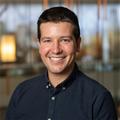 Sam Skinner
Lead Process Engineer, Water, Aurecon
 |
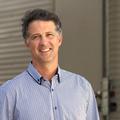 Michael Bissett
Director - Regional and Offshore, Pensar
 |
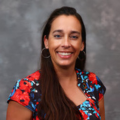 Aimee Killeen
Chief Operations Officer, Providence and President, Water Environment Federation
 |
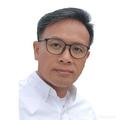 Yuen Ming Liong
Chief Science and Technology Officer, Ministry of Sustainability and the Environment
 |
 Chiu Kuang Ping
Executive Director, AECOM
 |
Session 6.3 - System of Systems for a Circular Economy
20 June 2024
2:30pm - 4:00pm
Room 6, Level 3
Session Chairs: Chee Meng Pang, PUB, Singapore's National Water Agency (Singapore), Mark Smith, RSK Group (United Kingdom)
Overview of System of Systems for a Circular Economy
Francesco Fatone, Polytechnic University of Marche (Italy)
Presenter is an invited speaker. No executive summary is available.
First of Its Kind in Hong Kong - Innovative Reuse of Treated Effluent and Enhanced Energy Efficiency for Air Conditioning Systems
Carry Cheung Pik Sin, Drainage Services Department of the HKSARG (Hong Kong, China)
In Hong Kong, air-conditioning (A/C) systems are major consumers of electricity. Although water-cooled air-conditioning systems (WACSs) are more energy efficient, the need for water towers, water treatment and other operation and maintenance (O&M) demands restrain their application in most buildings. This paper reviews a pilot application of secondarily-treated effluent from sewage treatment works (STWs) as a cooling medium for the A/C system within the treatment Plant. The Drainage Services Department (DSD) installed a WACS with a self-assembled effluent-cooled condenser to study the energy efficiency, cooling performance and actual O&M requirements of the new system over a one-year pilot. It revealed that an energy saving of up to 27.6% per year could be achieved when compared with a conventional air-cooled air-conditioning system. This innovative effluent cooling A/C system achieves extended reuse of treated effluent as well as reduction in carbon footprint as a result of higher energy efficiency.
Assessing Bacterial Community Dynamics and Contaminants of Emerging Concern During Reclaimed Water Reuse in Real-Field Environment
Despo Fatta-Kassinos, University of Cyprus (Cyprus)
The growing demand for freshwater has led to the adoption of reclaimed water (RW) as a dependable source for irrigation. However, this practice is not without its challenges, including the presence of emerging contaminants (CECs) and microbial pollutants in the environment. The reuse of RW can lead to the uptake of CECs by crops and may also result in alterations to the indigenous microbial community of the surrounding ecosystem. in this study, we conducted lettuce cultivation experiments in lysimeters irrigated with RW under real-field conditions to investigate the occurrence, accumulation, and uptake of specific chemical CECs. Additionally, we explored how the storage of RW before irrigation impacted the RW microbial community through 16S rRNA amplicon sequencing analyses. Moreover, we found that increasing soil depth had a mitigating effect on the influence of RW irrigation on the soil microbial community.
Unconventional Hydropower the Hidden Opportunity – The South African Experiences
Jayant Bhagwan, WYC (South Africa)
Energy serves as the fundamental driver for global economic and social advancement. With the ongoing issue of energy scarcity worldwide, there is a growing emphasis on reducing CO2 emissions and developing alternative energy sources in all sectors of the South African economy. To generate energy more efficiently, optimiSe existing systems, and explore new methods of converting energy from one form to another, citizens, universities, and various utilities are all actively searching for innovative solutions to generate electricity. Conduit hydropower represents an unexplored unconventional opportunity, whereby excess energy from pressurised pipelines can be harnessed. This eco-friendly innovation has immense potential and promises long-term energy security if water continues to flow. The strides in developing, scaling and adopting conduit hydropower and its potential in South Africa is demonstrated.
Speakers
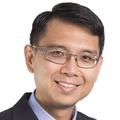 Chee Meng Pang
Director, Water Quality Department, PUB, Singapore's National Water Agency
 |
 Despo Fatta-Kassinos
Professor, University of Cyprus
 |
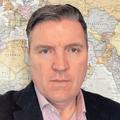 Mark Smith
Strategic Business Development Director, RSK Group
 |
 Carry Cheung Pik Sin
Drainage Services Department of the HKSARG
 |
 Jayant Bhagwan
WYC
 |
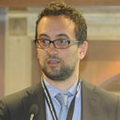 Francesco Fatone
Full Professor of Chemical-Environmental Engineering and Coordinator of the PhD program in Civil, Environmental, Building and Architectural Engineering, Polytechnic University of Marche
 |
Session 6.4 - Policy and Planning
20 June 2024
4:30pm - 6:00pm
Room 6, Level 3
Session Chair: Despo Fatta-Kassinos, University of Cyprus (Cyprus) and Alex Wu, AECOM (Hong Kong)
Conditions and Strategies for a Circular Water Economy
Jos Frijns, KWR (Netherlands)
Moving from a linear to a circular water economy, solutions to close water systems, reuse water and recover nutrients and energy from wastewater are taking shape. This study describes the physical, societal and system-level characteristics of a circular water economy, and identifies the technological, economic, socio-cultural and regulatory drivers, barriers and support instruments needed for the wider uptake of circular solutions in the water sector. A comprehensive package of enabling strategies is presented, including providing proof of concept of sustainable water technologies, a shift from a financial cost-benefit model to circular value approach, increasing social acceptance by ensuring active stakeholder engagement, and an adapted regulatory framework that incentivizes circular water solutions. Efforts are needed to rethink the system, so that not only the impact of the water cycle on the ecological ceiling is reduced, but also the values for the social foundation are strengthened.
Water Circularity and Stewardship in Industry - Water Savings and Risk Management
Heleen de Fooij, Witteveen+Bos Consulting Engineers (Netherlands)
To gain a comprehensive overview of potential improvements of water circularity and stewardship for 4 oil and gas production sites, a 6-step approach was used. The findings of material flow analysis and hotspot identification formed the basis for recommendations for water savings, treatment, and re-use. The impacts of these recommendations on water footprint (50-86% reduction is possible), but also on energy use, CO2 emissions, and costs were then quantified and ranked, resulting in a practical roadmap presented as stacked measures. Finally, the studies provided insight in water stewardship for the sites by showing which of the water stewardship criteria are already met and which require more action. Thereby, these studies provide a comprehensive overview of the current status and potential improvement of water stewardship for oil and gas production sites.
Melbourne: Leading Progress in Integrated Water Management
Celeste Morgan, Arup (Australia)
In the face of climate change, population growth and rapid urbanisation, integrated water management offers a key to unlock resilient, liveable and even regenerative cities. The evolution of policy, new governance structures and the mainstreaming of IWM practice over the last 7 years in Melbourne, has delivered on-ground delivery of change but still leaves significant action needed to deliver the city’s 2030 targets. So how far has Melbourne come, and what can other cities learn to leap-frog ahead?
Speakers
 Despo Fatta-Kassinos
Professor, University of Cyprus
 |
 Jos Frijns
Team Manager, Resilience Management & Governance and Senior Scientific Researcher, KWR
 |
 Heleen de Fooij
Project Manager & Consultant - Water & Resources, Witteveen+Bos Consulting Engineers
 |
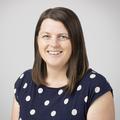 Celeste Morgan
Australasia Integrated Water Management Lead, Arup
 |
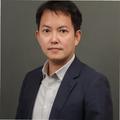 Alex Wu
Executive Director, AECOM
 |
Session 6.5 - Monitoring and Management of Process Emissions (Part 1)
21 June 2024
09:00am - 10:30am
Room 6, Level 3
Session Chairs: Tony Koodie, RSK Group (United Kingdom)
Towards Net-Zero Carbon Utilities: Challenges and Opportunities
Prof Liu Ye, The University of Queensland, Australia (Australia)
The water industry is setting targets to achieve net-zero emissions by at least 2050 and some as early as 2025. Adoption of emission reduction strategies is hindered by a lack of reliable monitoring protocols as well as methods to predict the effect of different reduction strategies. This talk will focus on sharing state-of-the-art knowledge, practical experience from the greenhouse gas team at the University of Queensland (UQ), together with the Australian water utilities, in managing fugitive greenhouse gas emissions from urban water industry in the past decade, as well as the new collaborative emissions monitoring campaign in Australia and New Zealand. It will also discuss challenges and opportunities lie in our future in achieving net-zero emissions in the water sector in the coming years.
Monitoring Process N2O Emissions Helps Mitigate Climate Footprint of Water Resource Recovery Facilities – Global Case Studies
Emma Shen, Jacobs (Canada)
Process N2O emission can be a significant contributor to the GHG footprint from Water Resource Recovery Facilities (WRRFs). Using the default EF specified by the 2019 IPCC Refinement, there is little scope to reduce reportable N2O emission for WRRFs. Technologies are available to monitor actual N2O emissions and develop site-specific EFs, which would allow the WRRFs to better understand their baseline N2O emissions, and to develop mitigation strategies that can make a positive impact and align with the net zero targets established by the cities and municipalities. This paper provides 3 full-scale, long-term monitoring studies in Denmark and Canada, covering a range of facility sizes (< 10 ML/d to > 600 ML/d), process configurations (conventional activated sludge to membrane aerated biofilm reactor (MABR)), and monitoring methodologies (unit process to whole plant measurements).
Effective Assessment, Mitigation, and Reporting of N2O Emissions At Two Full-Scale WWTPS
Wim Audenaert, AM-Team (Belgium)
Nitrous oxide (N2O) emissions in wastewater treatment have become a key topic and (inter)national regulation is expected to develop at a rapid pace. Computational Fluid Dynamic (CFD) simulations with mechanistic biokinetic models can be used to help with understanding the root causes and designing effective N2O mitigation strategies. Two full-scale case examples will be discussed.
Abatement of N2O in Exhaust Gas From Full-Scale WWTPS
Nerea Uri Carreño, VCS Denmark (Denmark)
The project NACAT, carried out by a consortium of public and private enterprises in Denmark, addresses the challenge of reducing direct nitrous oxide (N2O) emissions from WWTPs, by testing a new type of catalyst for abatement of N2O in the exhaust gas from covered processes. N2O is a powerful greenhouse gas and is often the single most important contributor to the CO2 footprint from the operational phase of WWTPs and water utilities in general. Technologies to help reduce this emission are therefore essential for the water sector’s move toward climate neutrality.
Speakers
 Dr. Liu Ye
Professor, University of Queensland
 |
 Tony Koodie
International Process Director, Binnies Singapore
 |
 Dr. Emma Shen
Global Principal for Wastewater Energy Optimization & Sector Decarbonization, Jacobs
 |
 Dr. Wim Audenaert
Co-founder and CEO, AM-TEAM
 |
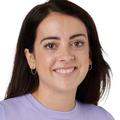 Nerea Uri Carreño
Innovation Specialist, VCS Denmark
 |
Session 6.6 - Carbon Accounting
21 June 2024
11:00am - 12:30pm
Room 6, Level 3
Session Chairs: Lucy Thomas, RSK Group (United Kingdom)
Overview of Carbon Accounting
Thomas Buckland, Ricardo (United Kingdom)
Presenter is an invited speaker. No executive summary is available
Water & Resources Factory 2.0: Carbon Neutral Water and Resources Recovery - An Innovative Solution for Sustainable Used Water Treatment
Arjen van Nieuwenhuijzen, Witteveen+Bos (Netherlands)
The Water & Resources Factory 2.0 is an innovative water reuse and resource recovery plant ready to create high quality water and produce several circular material streams to boost the circular economy. This highly innovative treatment plant focuses on the separation of used water into high quality water, and reusable raw materials by applying advanced particle separation technologies. Contrary to conventional UWTP’s, where biological processes destroy or convert the organic components and nutrients and produce greenhouse gases like N2O, here only physico-chemical processes are applied. Organic matter and nutrients remain intact and can be upcycled to raw materials for several (biobased) value chains at a lowest carbon emission. This paper elaborates on the sustainability impact of the WRF2.0 by means of carbon-emission and environmental cost indicators.
Atmospheric Carbon Dioxide Removal and Green Hydrogen Co-Production by Seawater Electrolysis
Gaurav Sant, University of California, Los Angeles (United States)
The trapping of carbon dioxide (CO2) as an aqueous (bi)carbonate ion (e.g., HCO3–, CO32–) or as a mineral solid is attractive because of favourable thermodynamics, and the durability and permanence of storage. Herein, we describe an approach to rapidly precipitate Ca- and Mg- carbonates and hydroxides from seawater to achieve large-scale, cost-effective CO2 removal. We describe a quantitative basis for assessing CO2 removal via this technological approach including the development of a robust measurement, reporting, and verification (MRV) strategy. In addition, we describe the commissioning and operations of a pilot-project in Tuas, Singapore which demonstrates a net energy intensity (NEI) of ~1-to-1.5 MWh per t of atmospheric (420 ppm) CO2 removal. In addition, we describe the necessary data requirements for robust carbon accounting and inform the design of full-scale commercial plants.
The Carbon Footprint from Removing Pfas and Similar Contaminants from Biosolids
Bill Barber, Cambi, Inc. (United States)
There is growing concern over per- and polyfluoroalkyl substances (PFAS), a group of synthetic chemicals, also known as “forever chemicals” due to their persistence in the environment. Whilst there is a concern regarding the concentration of these chemicals in drinking water, this anxiety has expanded to the use of biosolids. Ironically, their intrinsically desirable properties of thermotolerance and hydrophobicity make them recalcitrant and difficult to destroy. Regarding biosolids, this has led to growing interest in the thermal destruction and movement away from land application due to concerns over uptake into crops. However, thermal destruction has a high carbon footprint due to intensive energy demands. Furthermore, land is typically considered the best practice environmental option. Whilst many studies have looked at potential thermal destruction of PFAS, none have looked at the carbon footprint of doing so which is the aim of this paper.
Speakers
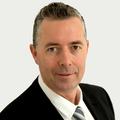 Michael Storey
Managing Director, Isle Utilities
 |
 Bill Barber
Technical Director, Cambi
 |
 Will Fargher
Director, Global Water Practice, Ricardo
 |
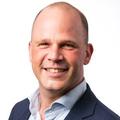 Arjen van Nieuwenhuijzen
R&D and Innovation Director - Circular and Biobased Solutions, Witteveen+Bos
 |
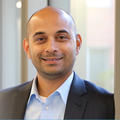 Gaurav Sant
Pritzker Professor of Sustainability, University of California, Los Angeles
 |
 Lucy Thomas
Chief Scientist, RSK Group
 |
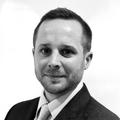 Thomas Buckland
Associate Director in the Environment and Policy Practice, Ricardo Energy & Environment
 |
Session 6.7 - Water and Hydrogren Economy
21 June 2024
2:00pm - 3:30pm
Room 6, Level 3
Session Chairs: Adam Lovell, Water Services Association of Australia (Australia) and Melanie Tan, Black & Veatch (United States)
Climate Neutral Water Management and The Potential Role of Hydrogen
Sander Mager, Union of Water Authorities (Netherlands)
The Dutch Water Authorities are responsible for water safety, water availability and water quality in the Netherlands. Climate change affects all these three tasks. Therefor the water authorities have adopted a climate neutrality strategy. In his presentation Sander Mager, the vice-chair of the Dutch Water Authorities will focus on the role of waste water treatment plants in their climate neutrality strategy and the potential role of hydrogen.
Water for Hydrogen – Will There Be Enough to Support the Energy Transition?
Celeste Morgan, Arup (Australia)
In the coming years the demand for green hydrogen is set to increase, which will require a substantial amount of water for feedstocks and cooling processes. Arup’s “Water Usage in Hydrogen” study was completed to better understand the considerations and potential design requirements regarding the supply and treatment of water for the production of hydrogen and conversion carriers. This study provided a groundbreaking and robust technical basis upon which the hydrogen industry can use to engage with the challenges of water resources. Locations where green hydrogen is attractive from an energy demand and supply perspective may not align with areas rich in sustainable water resources, posing a challenge. Leveraging our experience with “Water Usage in Hydrogen”, Arup has had the opportunity to undertake a water demand analysis at hydrogen production locations across Victoria (and now nationally), combining our findings with a comprehensive water resource assessment to better understand the nuances of the water-energy nexus.
From Biogas to Green Hydrogen – What’s The Impact of The Energy Transition on Water and Wastewater Utilities?
Ethan Edwards, Bluefield Research (United States)
Approximately 2% of global greenhouse gas emissions have been attributed to the water sector. Spurred by environmental policies, many utilities are striving to reduce emissions. Green hydrogen and biogas capture from wastewater are poised to help utilities achieve these goals, with utilities benefitting from existing access to water, land, treatment, and distribution capabilities. Projects at municipal and industrial facilities are accelerating thanks to industrial policy tailwinds (e.g., Inflation Reduction Act). This presentation will provide an overview of incentivising policies, case studies, and market-based strategies of global water and wastewater utilities on biogas capture and green hydrogen.
Navigating Water’s Role in the Australian Green Hydrogen Economy: An Industry Led Approach to Finding the Way
Lindsey Brown, GHD (Australia)
The expansion of the Australian hydrogen industry has been gaining momentum for several years. To date, exploratory efforts to realise a green hydrogen economy has focused on renewable power, price, production, transport, end users and government funding. Australian water utilities have been asking how they should engage with this emerging industry, and how the water industry plays its part given the importance of water availability to making hydrogen production viable.To explore this, we sought to generate stronger industry focus and understanding through a series of webinars creating a platform for an industry-wide conversation and the opportunity to collect data on perceived risks and opportunities directly from participants and expert guests. The findings from this investigation were the basis for a series of steps for water utilities to navigate their role in this new green hydrogen economy and determine how they can engage and benefit the communities that surround them.
Speakers
 Adam Lovell
Executive Director, Water Services Association of Australia
 |
 Celeste Morgan
Australasia Integrated Water Management Lead, Arup
 |
 Sander Mager
Vice-chairman, Dutch Union of Water Authorities
 |
 Ethan Edwards
Senior Analyst, Bluefield Research
 |
 Lindsey Brown
Australian Market Leader - Water, GHD
 |
 Melanie Tan
Resiliency Solutions Director - West, Black & Veatch
 |
Hot Issues Workshops (18 June 2024)
Workshop 1 - SIWW SWAN APAC Workshop: New Ripples in Digital Water Transformation
(Co-organised with SWAN Asia-Pacific Alliance)
18 June 2024
09:30am - 4.00pm
Room 1, Level 3
18 June 2024
09:30am - 4.00pm
Room 1, Level 3
Digital transformation is the integration of technology into all areas of a business, fundamentally changing how organisations operate and deliver value to customers. It’s also a cultural change, which requires organisations to continually challenge the status quo, experiment, and get comfortable with failure. The 3rd SWAN APAC Workshop will bring together water utilities, industry leaders, innovators, and experts from across Asia-Pacific to delve into the value of digital transformation for water utilities. We will cover cutting-edge topics such as generative AI, cybersecurity, digital decarbonisation, and more. Attendees will also be able to participate in interactive roundtable sessions, learn from a shark tank session, and gain important insights and networking opportunities with a global network of water professionals. This workshop is co-organised with SWAN Asia-Pacific Alliance.
Programme
| 9:30am – 9:40am |
Welcome and Introduction
|
| 9:40am – 10:00am |
Utility 2.0 – Human-Centric, Digital and Innovation Driven
|
| 10:00am – 11:00am |
Waterside Chat: Capturing the Value of Digital Transformation
Moderator: Jenny Francis, Executive Manager Digital, Hunter Water & SWAN APAC Chair
|
| 11:00am – 11:30am |
Tea Break & Networking Session
|
| 11:30am – 11:40am |
SWAN Update
|
| 11:40am – 12:40pm |
Panel: Understanding the Utility Implications of Generative AI
Moderator: Victoria Edwards, Co-Founder & CEO, FIDO Tech
|
| 12:40pm – 1:00pm |
Keynote: Reflecting on a Decade of Digital Transformation in the Water Industry
|
| 1:00pm – 2:00pm |
Lunch Break & Networking Session
|
| 2:00pm – 3:15pm |
Interactive Roundtable Session
|
| 3:15pm – 3:30pm |
Roundtable Rapid Fire Recap
|
| 3:30pm – 4:00pm |
Tea Break & Networking Session
|
| 4:00pm – 5:00pm |
SWAN Shark Tank (to be held at the TechXchange)
|
| 5:00pm – 6:00pm |
Drinks Reception Sponsored by Turing
|
Speakers
 Dr. Amir Cahn
Executive Director, SWAN
 |
 Martine Watson
Chief Digital & Information Officer, Urban Utilities
 |
 Dr. Peter Prevos
Manager, Data Science, Coliban Water
 |
 Gerhard Loots
Chief Executive Officer, Kallipr
 |
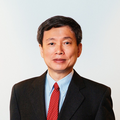 Harry Seah
Deputy Chief Executive (Operations), PUB, Singapore's National Water Agency
 |
 Jenny Francis
Head of Digital, Hunter Water & SWAN APEC Chair, SWAN
 |
 George Theo
Chief Executive Officer, TasWater
 |
 Mirla M. De Leon
General Manager, Maynilad Water Services
 |
 Victoria Edwards
Co-founder & CEO, FIDO Tech
 |
 Chris Toop
Director of Digital & CIO, Scottish Water
 |
 Gayathri Bharadwaj
Asia-Pacific Manager, SWAN Forum
 |
 Elizer Nacpil
Head/VP of Digital Transformation, Balibago
 |
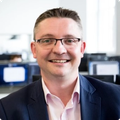 Geoff Childs
General Manager - Asia, Gentrack
 |
 Emma Milburn
General Manager Research, Innovation and Commercialisation, South East Water
 |
 Thomas Debruyne
APAC Future of Water – Technology Integration Lead, GHD
 |
 Mark Nicol
Managing Director, Nicol Consulting and Sales Lead APAC, Mobilitex
 |
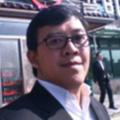 Ari Bimo Sakti
Senior Manager of Commercial & Customer Relations, PDAM Surya Sembada Surabaya
 |
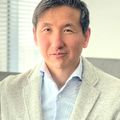 Dr. Yasuhiro Matsui
Deputy of General Manager, Water Business Development Department, Energy Business Development Center, Energy & Sustainability Business HQ, Yokogawa Electric Corporation
 |
 Arun Mahadevan
Assistant Director, InfoTech and Digital Transformation Department, PUB, Singapore’s National Water Agency
 |
Workshop 2 - GHG Production and Emissions in Wastewater Systems
18 June 2024
09:00am - 12.40pm
Room 2, Level 3
Monitoring and mitigation of direct process emissions of nitrous oxide (N2O) and methane (CH4) from wastewater treatment plants (WWTPs) are critical as they play a significant role in achieving net zero emissions target for the water sector. Within the water sector, there has been progressive decarbonisation of grid electricity and ongoing work on biogas carbon capture, storage, and utilisation. That leaves process emissions from the actual wastewater process itself the toughest challenge, with no convenient solutions in sight. Between CH4 and N2O, the dynamics surrounding N2O formation, monitoring, and mitigation are the least well understood and yet its global warming potential is 300 times higher than that of CO2. Unlike CO2, there are no obvious sinks for N2O.
This Hot Issues Workshop is set up to allow utilities, government regulators, consultants, academia, and technology solution providers to discuss, converge, and attempts to reach a consensus on the best practice to monitor and mitigate N2O emissions. Given that wastewater treatment processes and technologies vary vastly from plant to plant, streamlining sampling strategies, data collection methodologies and data analysis are various challenges that the workshop aims to discuss about. The opening presentation will give an overview of GHG emissions in wastewater systems and to recap on the parts of the wastewater treatment processes where GHG emissions typically arise from. The second part of the workshop will discuss GHG emissions in wastewater treatment plants. The third part of the workshop will discuss about the path to net zero and consensus building on the way forward in GHG emissions management.
Programme
| 9:00am – 9:05am |
Joint Welcome and Introduction by the Moderators
|
| 9:05am – 9:25am |
Opening Presentation
|
GHG emissions in Wastewater Plants |
|
| 9:25am – 9:30am |
Introduction
Moderator: Andrew Shaw, Global Practice & Technology Leader, Black and Veatch
|
| 9:30am – 9:45am |
Presentation 1: Mechanism of Process Emissions (Dr. Kartik Chandran, Professor, Columbia University)
|
| 9:45am – 10:00am |
Presentation 2: Measuring techniques that worked well for gas and liquid phase N2O emissions (Dr. Liu Ye, Professor, University of Queensland)
|
| 10:00am – 10:15am |
Presentation 3: Dealing with data variance and modelling techniques (Dr. Wim Audenaert, Co-founder and CEO, AM-TEAM)
|
| 10:15am – 11:00am |
Panel Discussion: GHG emissions in Wastewater Plants
Moderator: Andrew Shaw, Global Practice & Technology Leader, Black & Veatch
|
| 11:00am – 11:30am |
Tea Break & Networking Session
|
Path to Net Zero |
|
| 11:30am – 11:35am |
Introduction by Tom Freyberg, Founder, Atlantean Media & Aquatech
|
| 11:35am – 11:50am |
Presentation: Net Zero for Water (Dr Emma Shen, Global Principal for Wastewater Energy Optimization & Sector Decarbonization, Jacobs)
|
| 11:50am – 12:30pm |
Panel Discussion: Path to Net Zero
Moderator: Tom Freyberg, Founder, Atlantean Media & Aquatech
|
| 12:30pm – 12:40pm |
Summary and Closing Remarks by the Moderators
|
Speakers
 Dr. Kartik Chandran
Professor, Columbia University
 |
 Andrew Shaw
Associate Vice President and Global Practice and Technology Leader in Sustainability & Wastewater, Black & Veatch
 |
 Prof. Mark van Loosdrecht
Chair Professor, Environmental Biotechnology, Delft University of Technology
 |
 Dr. Dragan Savic
Chief Executive Officer, KWR Water Research Institute
 |
 Despo Fatta-Kassinos
Professor, University of Cyprus
 |
 Dr. Stephanie Klaus
Treatment Process Engineer, Hampton Roads Sanitation District
 |
 Per Henrik Nielsen
Project Director of Special Projects, VCS Denmark
 |
 Dr. Liu Ye
Professor, University of Queensland
 |
 Dr. Emma Shen
Global Principal for Wastewater Energy Optimization & Sector Decarbonization, Jacobs
 |
 Dr. Wim Audenaert
Co-founder and CEO, AM-TEAM
 |
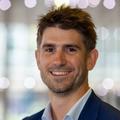 Tom Freyburg
Founder & Managing Director, Atlantean Media
 |
 Peter Grevatt
CEO of Water Research Foundation and Chair of the, GWRC
 |
 Bob Stear
Chief Engineer, Severn Trent
 |
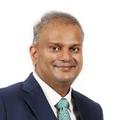 Narendran Maniam
Chief Executive Officer, Indah Water Konsortium Sdn Bhd
 |
Workshop 3 - Towards Carbon Circularity in Domestic and Industrial Wastewater Treatment
18 June 2024
2:00pm - 5:45pm
Room 2, Level 3
Management of carbon cycle is essential for sustainable used water treatment, from breakdown of organic matters by microorganisms to the capture and utilisation of carbon for energy production and resource recovery. Conventionally, carbon is recovered in the form of biogas from sewage sludge, and advance biosolid treatment technologies are available to improve the biogas yield and the value of energy extracted. Carbon can also be fixed through pyrolytic conversion of sludge to biochar for further reuse. As more emphasis is placed on circularity, other high value products such as PHA and cellulose are now being considered as alternative biomaterials for recovery. The first half of the workshop discusses the latest technologies for anaerobic digestion like thermal hydrolysis pre-treatment and biogas upgrading technologies, as well as the comparisons at various aspects of anaerobic digestion of sewage sludge with incineration. The second half of the workshop discusses carbon recovery from sewage sludge, including examples such as biochar, cellulose and PHA. The last part will feature a panel discussion to discuss the best way forward for carbon management in wastewater treatment plants.
Programme
|
2:00pm – 2:10pm
|
Welcome and Introduction by Moderator
Moderator: Dave Parry, Division Director, Jacobs
|
|
2:10pm – 2:30pm
|
An Overview of Carbon Management in Wastewater Treatment
|
|
2:30pm – 3:30pm
|
Presentations: Biogas and Biosolids
|
|
3:30pm – 4:00pm
|
Tea Break & Networking Session
|
|
4:00pm – 5:00pm
|
Presentations: Recovery of Alternate Biomaterials
|
|
5:00pm – 5:15pm
|
Q&A
|
|
5:15pm – 5:45pm
|
Panel: Carbon Circularity for Wastewater Treatment
Moderator: Dave Parry, Innovative Aerospace Division Director, Jacobs and Rob Thompson, General Manager, Orange County Sanitation District (OCSAN)
|
Speakers
 Prof. Mark van Loosdrecht
Chair Professor, Environmental Biotechnology, Delft University of Technology
 |
 Robert Thompson
General Manager, Orange County Sanitation District (OCSAN)
 |
 Bill Barber
Technical Director, Cambi
 |
 Dave Parry
Division Director, Jacobs
 |
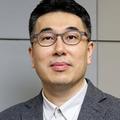 Prof. Yong Sik Ok
Director, APRU Sustainable Waste Management, Professor, Korea University
 |
 Natalie Foeng
Chief Financial Officer, Yarra Valley Water
 |
 Dr. Nerina Di Lorenzo
Managing Director, Melbourne Water
 |
 Hao Xiaodi
Professor, Dept. of Municipal Engineering, Beijing University of Civil Engineering and Architecture
 |
 Wilbert Menkveld
Chief Technology Officer, Nijhuis Saur Industries
 |
 Robert Bornhofen
Director – Innovation, DC Water
 |
Workshop 4 - Climate Adaptation and Water Resilience in Cities
18 June 2024
09:30am - 1:00pm
Room 4, Level 3
Urban water resilience is defined by the capacity of the urban water system - including the human, social, political, economic, physical and natural assets - to anticipate, absorb, adapt, respond to, and learn from shocks and stresses, in order to protect public health and wellbeing, the natural environment and minimise economic disruption. The shocks and stresses take many forms and they fundamentally challenge the water security of communities in terms of sustainable access to adequate quantities of and acceptable quality water for sustaining livelihoods, human well-being, and socio-economic development, for ensuring protection against water-borne pollution and water-related disasters, and for preserving ecosystems in a climate of peace and political stability.
The workshop aims to provide context to forums and water convention sessions over the next three days and will canvass the range of climate adaptation and water resilience challenges experienced in cities and towns, and the corresponding strategies. In the first part of this workshop, presentations on climate adaptive planning provide a broad overview of climate adaptation and water resilience strategies for cities, and recent Singapore experience in adaptative planning for coastal protection and flood management, an important component of the broader urban water resilience framework. In the second part of this workshop, audience members are invited to discuss the range of integrated initiatives and co-benefits from a holistic approach to urban water resilience strengthening. The anticipated output from the workshop is a communique on urban water resilience which will be tabled at the subsequent Cities Roundtable on Coastal Resilience and Flood Management of the water convention.
Programme
| 9:30am – 9:40am |
Welcome and Introduction
|
| 9:40am – 10:00am |
Broader Climate Adaptive Planning for Cities
|
| 10:00am – 10:20am |
Adaptive Planning Approach in Singapore
|
| 10:20am – 11:00am |
Plenary Discussion
Facilitator: Mark Fletcher, Director, Arup
|
| 11:00am – 11:30am | Tea Break & Networking Session |
| 11:30am – 12:20pm |
Breakout Discussion on Climate Adaptation & Water Resilience in Cities
|
| 12:20pm – 12:30pm |
Slido Interaction
Facilitator: Prof. Tony Wong, Distinguished Professor of Sustainable Development, Monash Univeristy
|
| 12:30pm – 12:50pm | Communique Development |
| 12:50pm – 1:00pm |
Summary and Closing Remarks
|
Speakers
 Prof. Tony Wong
Director, Tony Wong Consulting and Distinguished Professor of Sustainable Development, Monash Univeristy
 |
 Hazel Khoo
Director, Coastal Protection Department, PUB, Singapore's National Water Agency
 |
 Mark Fletcher
Global Water Business Leader, Arup
 |
 Piet Dircke
Global Director Climate Adaptation, Arcadis
 |
 Pritha Hariram
Head, Water Infrastructure & Climate Adaptation, Ramboll
 |
 Sarah Hiong
Deputy Director - Coastal Protection, PUB, Singapore's National Water Agency
 |
Workshop 5 - Building Water Resilience and Security Through Alternative Sources
18 June 2024
2:00pm - 5.00pm
Room 3, Level 3
Water scarcity is not unique in large parts of the world, and utilities for many decades have adapted successfully with having minimal water resources. In recent years there has been a paradigm shift with climate change and increasing population. Wetter areas where there has never been a water scarcity problem for nearly a century are faced with changing to alternative sources. For many of the utilities they have no experience in how to treat these sources and how to integrate these sources into their existing system. There are globally many successful examples of how utilities and experts have found creative solutions to deal with water scarcity and this workshop will focus on these valuable lessons.
Programme
| 2:00pm – 2:10pm |
Introduction to the Workshop and Global Water Scarcity by Jonathan Clement, CTO Advanced Water Treatment, Ramboll
|
| 2:10pm – 3:10pm |
Presentations
Key Considerations for Water Reuse and Natural Based Systems
|
| 3:10pm – 3:30pm |
Interaction with Panel Speakers
|
| 3:30pm – 4:00pm |
Tea Break & Networking Session
|
| 4:00pm – 5:00pm |
Panel Discussion
Moderator: Jonathan Clement, CTO Advanced Water Treatment, Ramboll
Panellists:
|
Speakers
 Jonathan Clement
CTO, Advanced Water Treatment, Ramboll
 |
 Bernard Koh
Assistant Chief Executive (Future Systems and Technology), PUB, Singapore's National Water Agency
 |
 Adel Hagekhalil
General Manager, Metropolitan Water District of Southern California
 |
 René Hoeijmakers
Global Division Director, Ramboll
 |
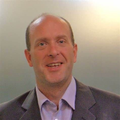 Adrian Marsden
Associate Director, Arup
 |
 Doeke Schippers
Strategic Advisor, Vitens
 |
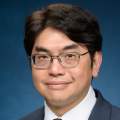 Wong Yan-lok, Roger
Director of Water Supplies, Water Supplies Department, HKSAR, China
 |
Workshop 6 - PFAS: Towards Consistent and Evidence-Based Management of a Complex Persistent Pollutant
18 June 2024
2:00pm - 5.30pm
Room 2, Level 3
Recently, PFAS pollution in drinking water sources and regulation of PFAS concentrations in drinking water has been receiving significant interest, in light of stricter regulations that are being issued globally. Regulators need agreed scientific evidence of public health impacts of pollutants and contaminants in drinking water to set realistic standards that countries can afford to meet. There is a lot of controversy and polarization around the issue of PFAS pollution in water sources and drinking water, and arguments are not always solidly supported by evidence – as a result there is a reluctance to set standards at any level, as some stakeholders want to go for a zero tolerance position, others want to wait for further, compelling evidence before dealing with a pollution problem that is rapidly growing.
Some countries have gone ahead with proposals for standards. For example, Health Canada proposes a maximum of 30ng/L, for the sum of total PFAS detected in drinking water. In April USEPA announced the final National Primary Drinking Water Regulation (NPDWR) for six PFAS. In the Netherlands, the National Institute for Public Health and Environment recommends standards for a “cocktail” of PFAS with a maximum allowable concentration of trifluoroacetic acid (TFA), an ultra-short PFAS, at 2.2 micrograms/L of drinking water since March 2023. Part of the Dutch toxicology community feels that standards should be set for individual PFAS, as required by their specific toxicity, and not in a “cocktail” approach.
Several PFAS have been included in Stockholm Convention on Persistent Organic Pollutants (POPs), a legally binding instrument for the reduction and elimination of POPs. The European Chemicals Agency (Helsinki, Finland) has discussed PFAS in various Committee meetings early 2024, where risks associated with PFAS, a proposal to restrict PFAS, as well as the potential impact of such a proposal on ski waxes, cosmetics and other consumer mixtures were discussed. Fact is that PFAS compounds may be found in a wide variety of products and in residues of production processes – kitchen utensils, water-repellent textiles, firefighting foams, as well as in equipment and materials used by the drinking water industry itself.
Given the huge interest in this topic, the intent of this workshop is therefore to present a balanced update on PFAS and drinking water and discuss options for evidence-based regulation of PFAS in drinking water, taking into consideration the holistic contribution of PFAS in food and the environment, and to call attention to potential impacts of restrictions and/or bans on PFAS on the water industry (infrastructure, materials, processes).
Programme
| 2:00pm – 2:10pm |
Opening Remarks
|
| 2:10pm – 2:25pm |
Our Current State of Knowledge with Respect to PFAS Contamination of Water
|
| 2.25pm - 2.35pm |
Health Impacts of PFAS – Current State of Knowledge
|
| 2.35pm - 2.45pm |
PFAS Restrictions under the Stockholm Convention
|
| 2:45pm – 2.50pm |
Q&A Session
|
|
Thematic Presentations on PFAS |
|
| 2.55pm - 3.05pm |
1. PFAS in the Environment
|
| 3:05pm – 3:15pm |
2. PFAS in the Food Chain
|
| 3:15pm – 3:25pm |
3. Impact of PFAS Regulations on the Water Industry
|
| 3:25pm – 3:30pm |
General Q&A
|
| 3:30pm – 4:00pm |
Tea Break & Networking Session
|
| 4:00pm – 4:25pm |
Panel 1: Regulator’s Perspectives on Standards and Regulations for PFAS in Drinking Water
Moderator: David Cunliffe, Principal Water Quality Adviser, South Australia Health
Panellists:
|
| 4:25pm – 4:50pm |
Panel 2: Concerns of the Water Industry Related to PFAS Restrictions and Regulations
Moderator: Fiona Waller, Head of Water Quality, Affinity Water
Panellists:
|
| 4:50pm – 5:15pm |
Panel 3: Research Needs to Enhance the Evidence Based for PFAS Impact on Health (Drinking Water and The Food Chain and Environment
Moderator: Regina Sommer, Head - Water Hygiene Unit, Medical University of Vienna
Panellists:
|
| 5:15pm – 5:25pm |
Q&A
Moderator: Dr Peter Grevatt, CEO, Water Research Foundation
|
| 5:25pm – 5:30pm |
Closing Remarks
|
Speakers
 Zdravka Do Quang
Group Innovation Programs Officer, SUEZ
 |
 Andrew Shaw
Associate Vice President and Global Practice and Technology Leader in Sustainability & Wastewater, Black & Veatch
 |
 Robert Bos
Independent Consultant
 |
 David Cunliffe
Principal Water Quality Advisor, South Australia Health
 |
 Fiona Waller
Head of Water Quality, Affinity Water
 |
 Regina Sommer
Associate Professor, Medical University of Vienna
 |
 Chee Meng Pang
Director, Water Quality Department, PUB, Singapore's National Water Agency
 |
 Dr. Stephanie Klaus
Treatment Process Engineer, Hampton Roads Sanitation District
 |
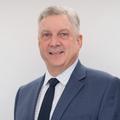 Steven M. Musser
Deputy Center Director - Scientific Operations, US Food and Drug Administration
 |
 Peter Grevatt
CEO of Water Research Foundation and Chair of the GWRC
 |
 Jennifer De France
Team Leader, Drinking-water Safety and Quality, World Health Organisation
 |
 Zaki Zainudin
Associate Researcher, Center for Water Research and Analysis (ALIR), Universiti Kebangsaan (Malaysia)
 |
 Adam Wightwick
Senior Managing Consultant, Ramboll Australia Pty Ltd
 |
 Nikki Lee
Engineer, National Environment Agency
 |
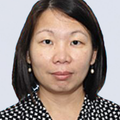 Joanne Chan
Adjunct Associate Professor and Centre Director, Food Safety Division, National Centre for Food Science, Singapore Food Agency
 |
 Batsirai Majuru
Technical Officer, Coordinator RegNet, World Health Organisation
 |
 Mari Asami
Department of Environment Health, National Institute of Public Health
 |
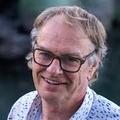 Jim Graham
Chief Advisor Water Science, Taumata Arowai
 |
 Marion Savill
Managing Director, Affordable Water
 |